The role of architectural model making in the architectural design process is irreplaceable.
At present, architectural model is not only a presentation tool in the architect’s toolbox, but also a creative product for everyone.
Make an architectural model of the new house you just purchased, or the interior space the dream house you’ve recently designed.
This guide mainly introduced the functions of architectural models, what scale is an ideal option, what material they may be made from and what techniques are available.
With the help of this guide, everything is possible!
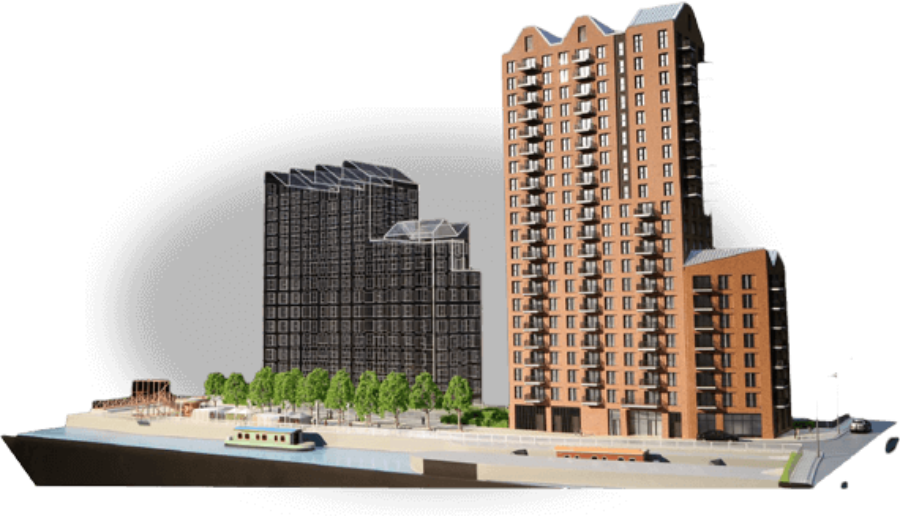
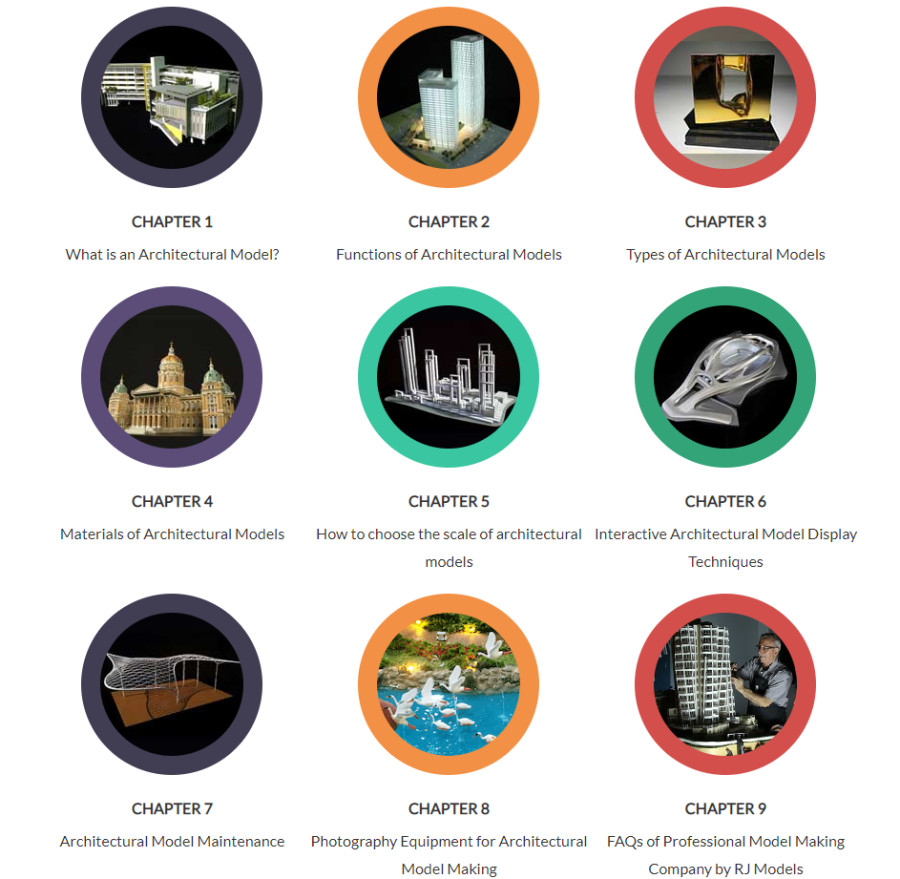
CHAPTER 1:
What is an Architectural Model?
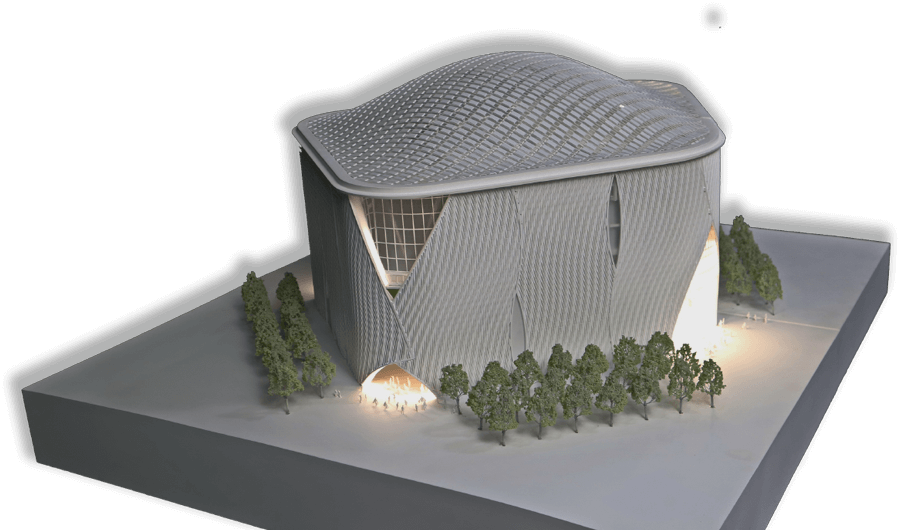
C1.1: The Definition of Architectural Models
As we all know, architects’ knowledge, talent, and skills are the keys to the success of a project.
However, the design is not a lone genius process.
The communication during the design process is equally important to the construction project as well.
How will the design look in real life is what the architects think about the most?
Having awareness of the ways that used to express architects’ design is necessary.
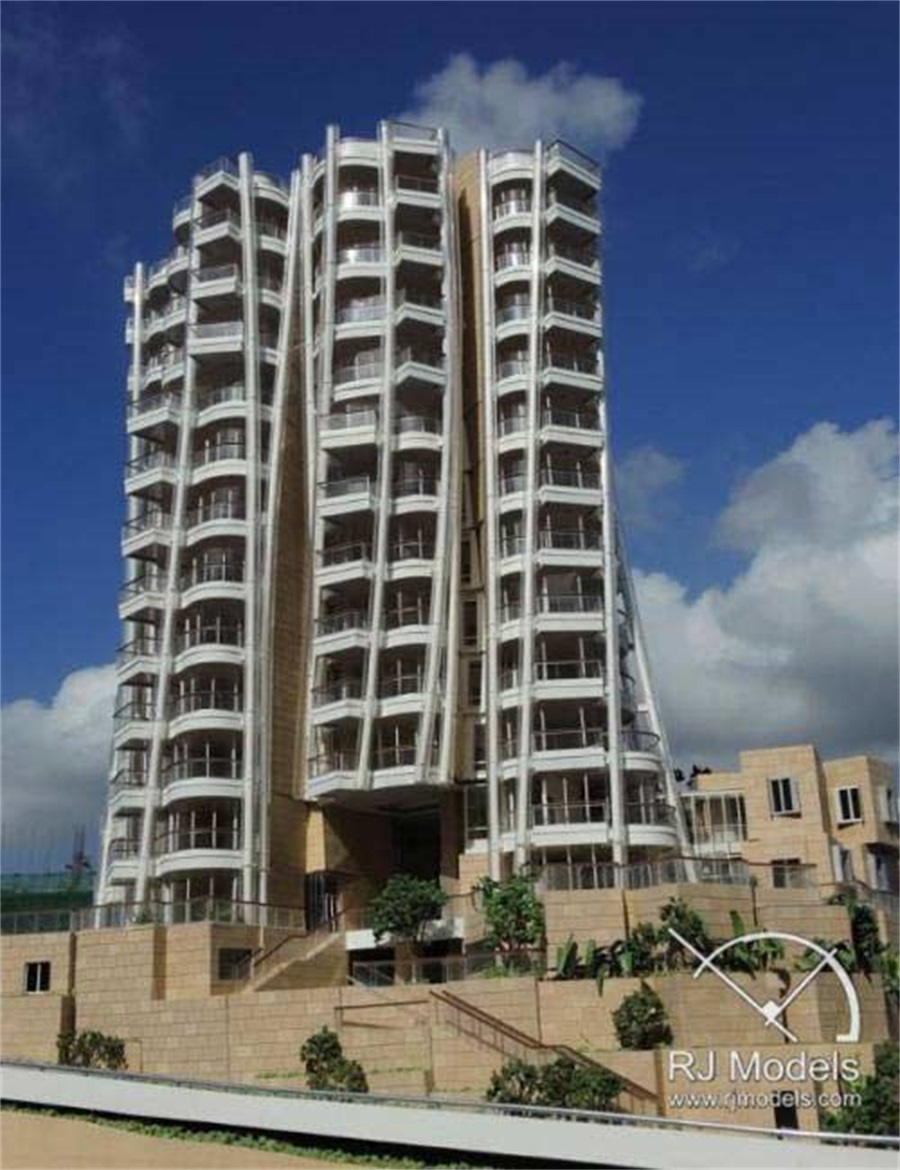
The luxury architectural model making project-Opus Hong Kong
In order to represent architectural ideas that originate in the mind of architects, the physical architectural models have served as great communication tools in today’s architectural design activity.
In simple terms, the architectural model is a physical 3D artifact that results from working out architectural ideas.
It is also an object which is created to show scale physical images of existing or historical buildings.
In addition, the architectural model itself is an object of beauty which can be appreciated by the observers.
C1.2: The History of Architectural Models
Architectural models have a lengthy history.
In 4600 BC, the first fired-clay model of building from was made.
This early model was not used to represent the design idea but was buried as funerary objects.
And the earliest architectural model appeared during Han Dynasty in China.
The scale model of pottery buildings was made of soil embryo and its appearance imitated wood pavilions.
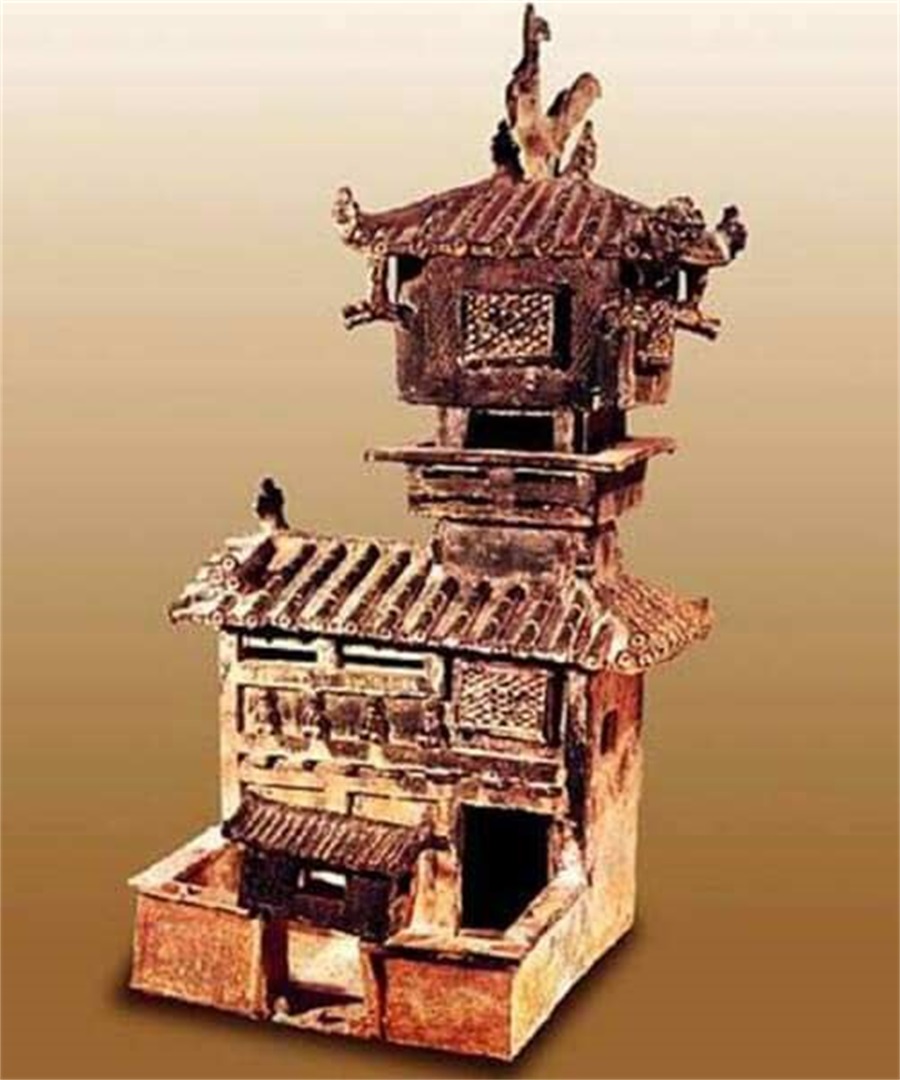
Models of pottery buildings in Han Dynasty
Architectural models started to be used in the construction projects since the fifteenth century as the complexity of building projects increased.
The intention of making architectural models was to make the design as realistic as possible.
What’s more, during the Renaissance, architectural models were extensively used to demonstrate finished design like the Models of Basilica of Saint Mary of the Flower.
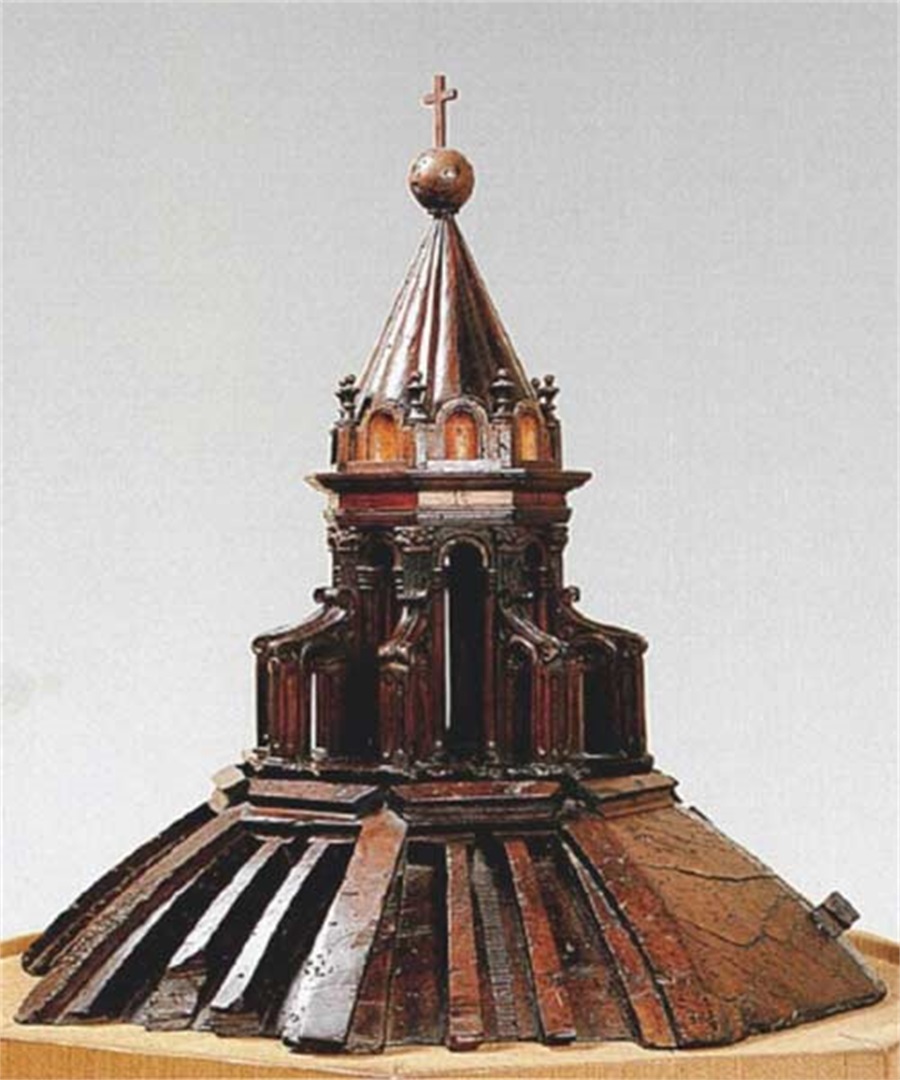
Model of Basilica of Saint Mary of the Flower in 1418
Later in the twentieth century, conceptual architectural models appeared to represent architects’ abstract level of ideas.
On the other hand, it became a connection between the fine arts and architecture.
Architectural design models were considered as the best objects to embody the design of the projects to the public and the clients since the latest decades of the twentieth century.
Materials were well chosen to represent the realism and effects of building facade and to make its interior space and others.
In some cases, an abstract architectural model of unbuildable designs was made for the visionary proposals and makes the fantasy more real.
For instance, a model of Kiesler Endless House gave a fulfillment to the visual desire of the public.
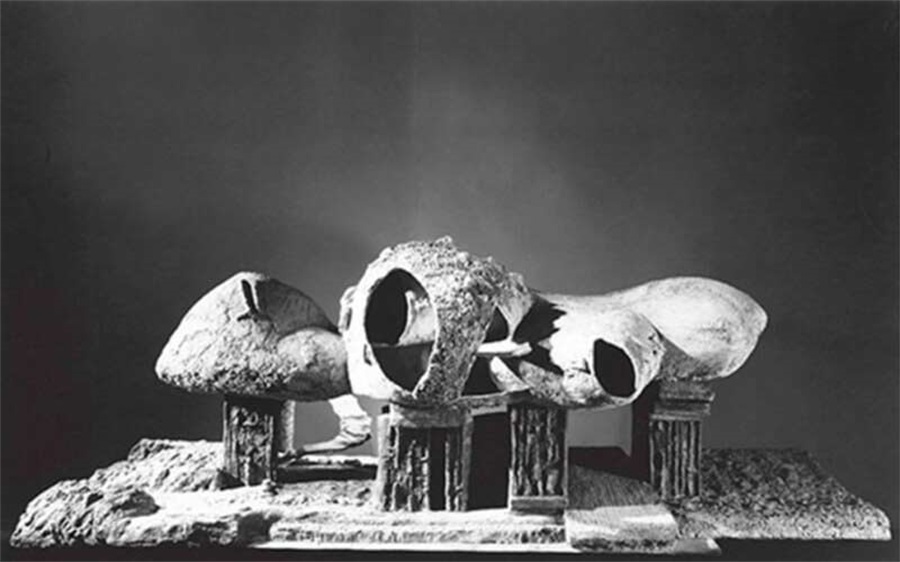
Fredrick Kiesler Endless House in 1959
Since then, innovation has been seen as the key to the success of architectural models.
The evolution of architectural models kept going on until presentation models appeared and started exhibiting for the public.
In the world of today, together with the CAD (Computer Aided Design) and advanced model making techniques such as laser cutting machine, 3D printing, and architectural model makers can fabricate high-fidelity scale architectural models with unparalleled detail and precision.
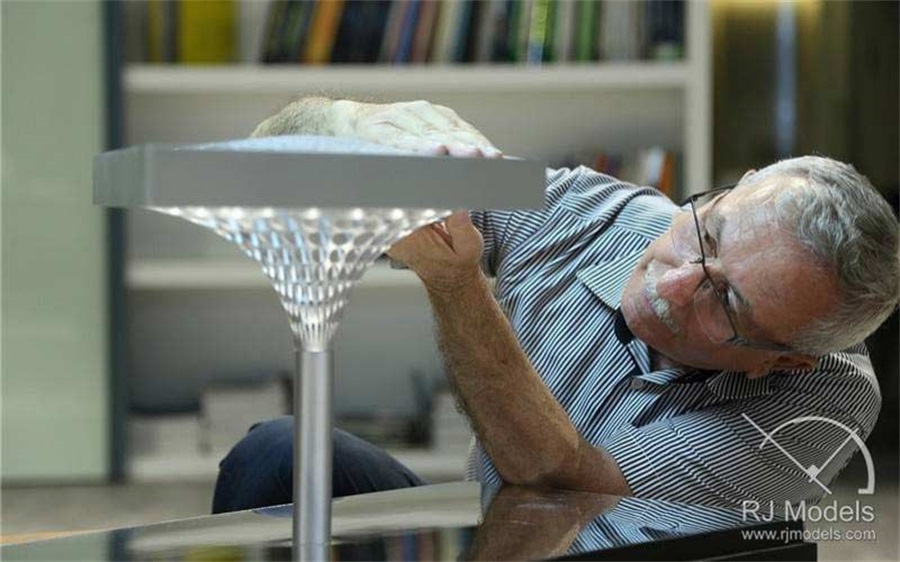
An architectural model maker is fabricating architectural models with unparalleled detail and precision.
Moreover, architectural model is an art language which is infectious and expressive.
In particular, the presentation models are widely used in urban planning and architecture design of homes, hotels, resorts, office building and retail spaces, educational institutions and other public facilities and buildings, etc.
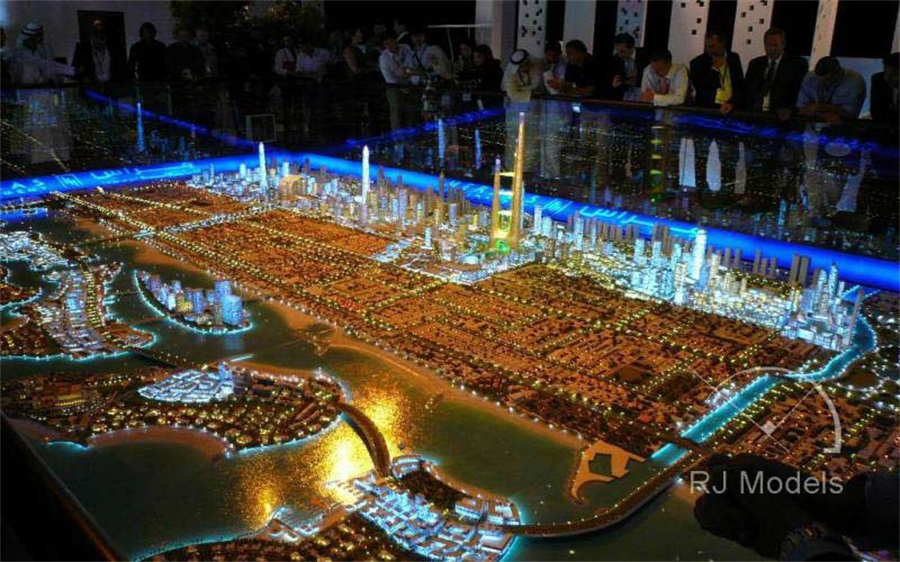
A presentation model can be used in urban planning.
With the development of modern advanced technologies, current architectural models can be fabricated in less time and have a higher level of detail.
In order to cope with the rapid development of construction industry’s diversification, and to show the clients and the public the features of design, such as the space layout, structure, surrounding environment, the illumination and ventilation inside the building, etc.
In advance, how to manufacture an architectural model quickly and perfectly is becoming an urgent necessity.
Furthermore, after considering the current global environmental issues and the sustainable development, it is increasingly important to develop green technologies which including processing model materials and architectural model making methods.
The outcomes and the applications of architectural models are keeping improving and innovating.
It means that architectural creativity will not stop to use architectural models widely.
CHAPTER 2:
Functions of Architectural Models

Nowadays, architectural model is been concerned as a bridge between architects’ design philosophy and present design ideas to clients to overview.
It helps to eliminate design flaws before the design being deployed to build.
Moreover, the architectural model plays an indispensable role in the planning, fundraising, construction, marketing and sales process of construction projects.
C2.1: Communication and Overview
The architectural model helps clients and investors to imagine how the design looks like in reality by visualizing the 2D drawings or 3D digital models.
Making architectural models is an effective and efficient way to help the architect and the client to communicate.
Modifications to the design can be made before the building is taking place to ensure desired results.
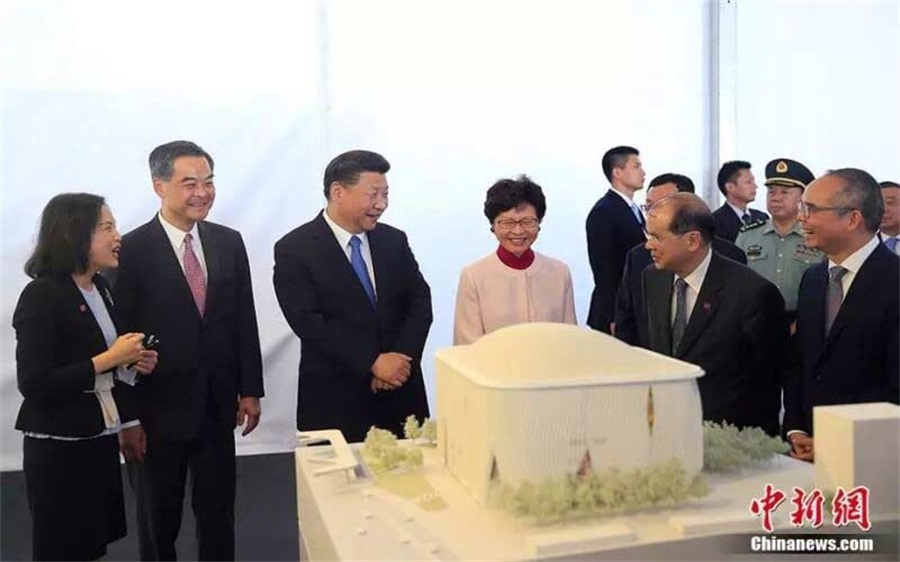
An Architectural Model for communication and overview (Image from internet).
C2.2: Sales and Marketing
Once the project is completed, the architectural model can be used as a sales tool for selling and marketing real estate.
It can show the potential housing purchaser the location of their units and its surroundings.
Natural elements such as afternoon shade can also be viewed through the displaying of site models to give life to the goal of an exhibition.
It is an excellent way to demonstrate the design of the construction projects by displaying stunning architectural models.
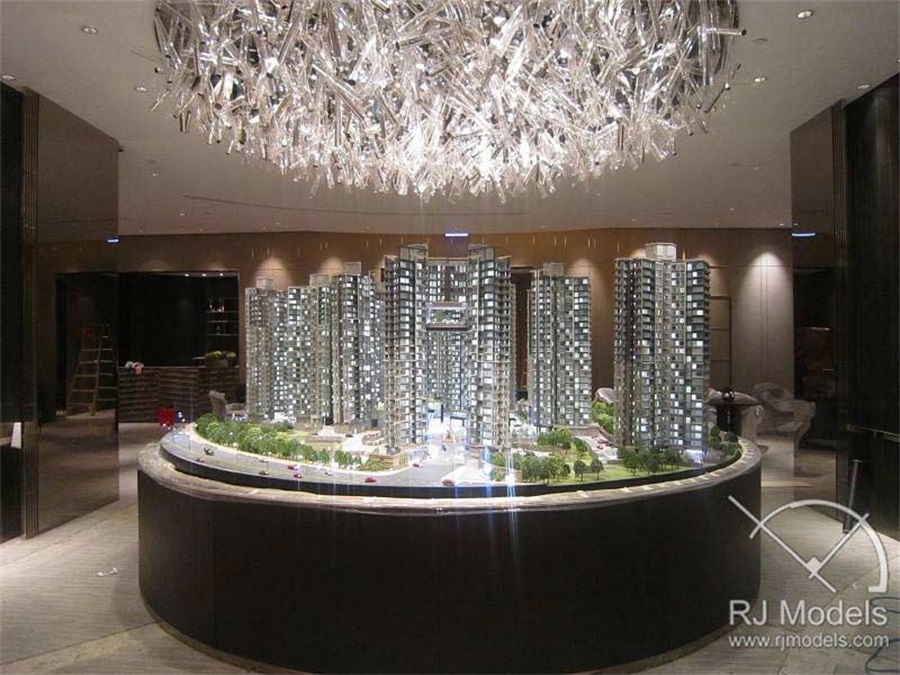
A Residential Architectural Model for sales and marketing
C2.3: Public Display and Guidance
The architectural model can be served as a sitemap for large complex, for example, a city or a sitemap for a park to give visitors an idea of where they are and how to get to the desired locations.
In addition, local citizens can also benefit from model exhibition to get a better understanding and awareness of the project and how this project will affect them.
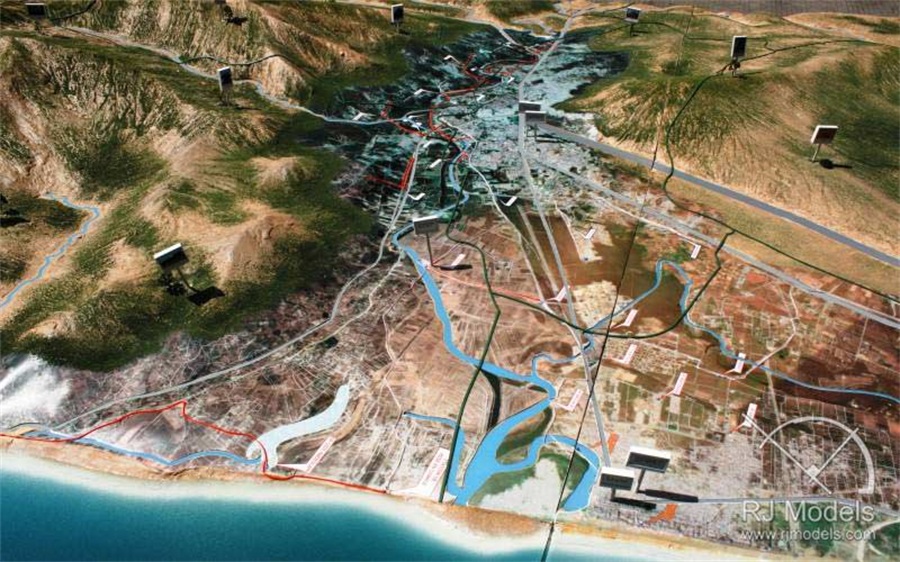
A location model for indication
C2.4: Fundraising
Having a good architectural model can inspire the investors’ understanding, enthusiasm, and confidence, and thus help to attract donors and sponsors in a fundraising effort.
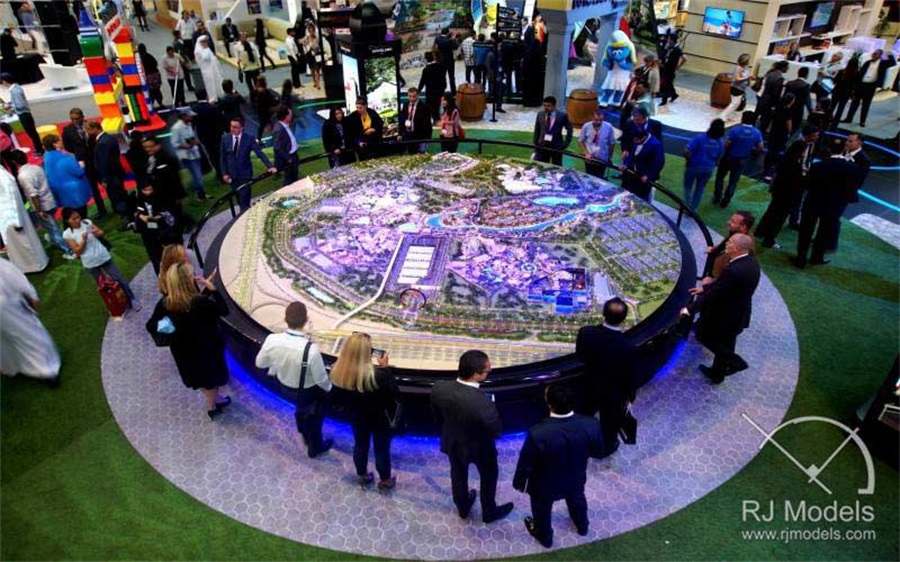
A site model for fundraising
C2.5: Construction Projects Approval and Permits
Specifically, some governments or housing owners’ associations require architectural models to ensure whether the certain construction project will be cohesive with the local related development plan and the surroundings of the site during the approval process.
It is a perfect way to help to get the construction permit for building projects.
A good architectural model can provide a better understanding of the project to the regulators.
Therefore, it is easier for the developers to get related approvals.
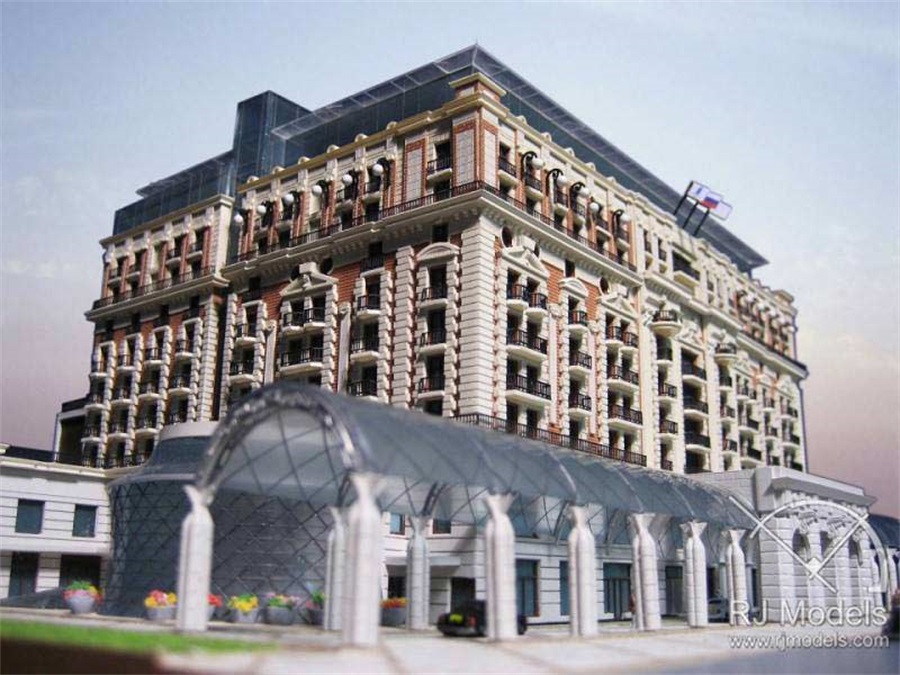
The Ritz Carton Hotel Model in Moscow
C2.6: Abstract and Future Architectural Idea
Future concept models for the designs which cannot actually build by using today’s technologies may help people to imagine the possibilities in the future.
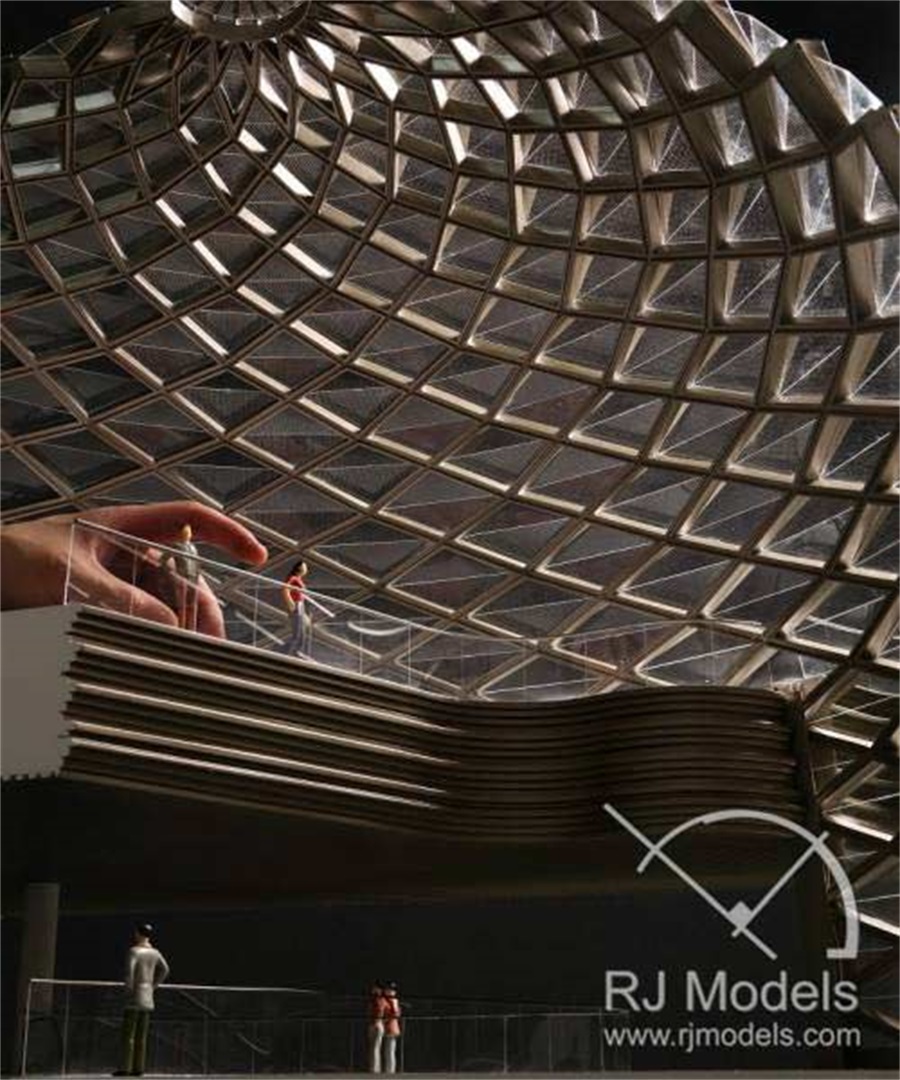
An Abstract Model
CHAPTER 3:
Types of Architectural Models
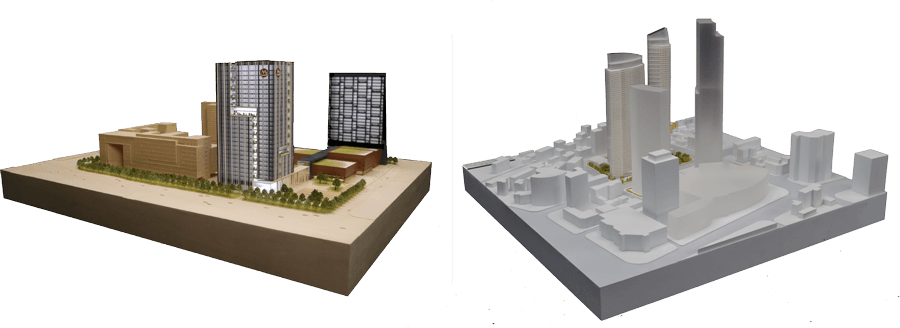
The architectural model can be classified by its function, manufacturing technology (computer: aided manufacturing, handcrafted, and mechanical manufacturing, etc), material (paper, plastic, wood, blow molding, and composite material, etc. ) and time (ancient, contemporary and future).
Generally, nowadays architectural models can be categorized into types according to their uses or functions.
C3.1: Architectural Models Classified by Uses
C3.1.1: Conceptual Model
The conceptual model is made at the initial architectural design stage to discover the desired shape, sketches.
It is one of the first approaches to design.
Conceptual model is used to analyze the characteristics of the projects as well as the spatial layout, ratio and surrounding environments.
Commonly, these architectural models are made of cheap materials such as foam core and cardboard which can be used and modified rapidly and simply.
As such, a conceptual model is a more cost-effective means of examining particular aspects of a design.
These architectural models are easy and fast to manipulate once they are assembled.
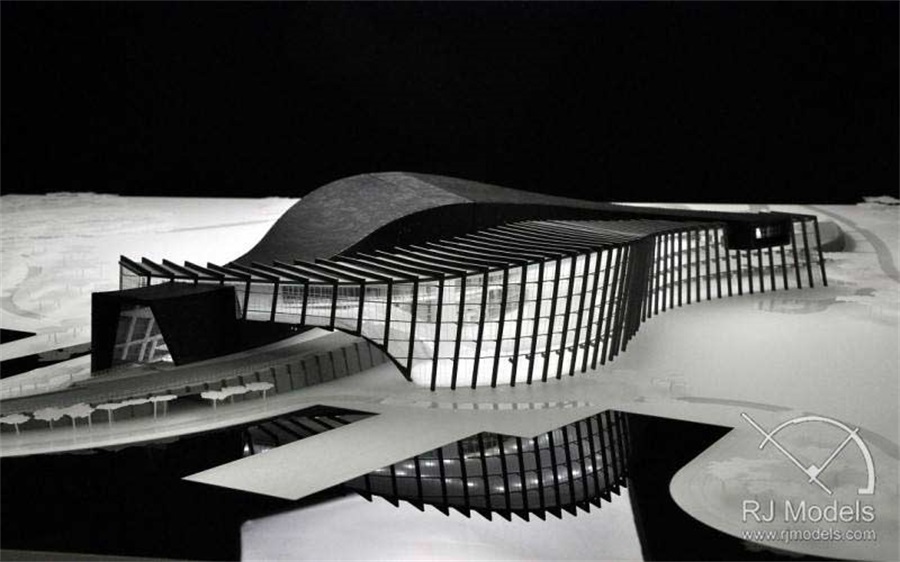
An example of a conceptual model
C3.1.2: Working Models
Working models are objects which can assist to find new solutions and show the course of a design project’s development at the same time.
Different from conceptual models, working models are made of complicated materials like metal, concrete, etc.
These models aim to describe detailed shapes, materials and other elements like the building facade.
Furthermore, architects are able to communicate their architectural ideas to the clients by showing working models.
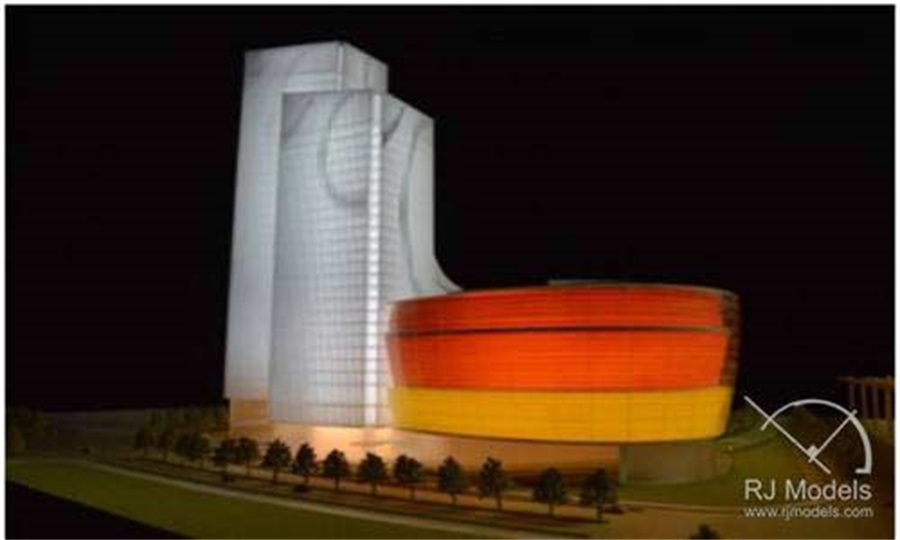
An example of a working model
C3.1.3: Presentation Models
Usually, presentation model is being made to the scale which required by the clients.
It is ranging from town planning to explanation of a Mock-up room.
These models are usually made in detail to give the clients or decision-making bodies a true reflection of the architectural design.
Particular viewpoints can be addressed by showing the detailed building facade and other elements of the projects.
For example, in order to bring the architectural model to life, a top-quality landscaping model may include a variety of bushes and trees made out of different colors and materials.
Even the actual branches and leaf forms can be seen to add to the overall effect.
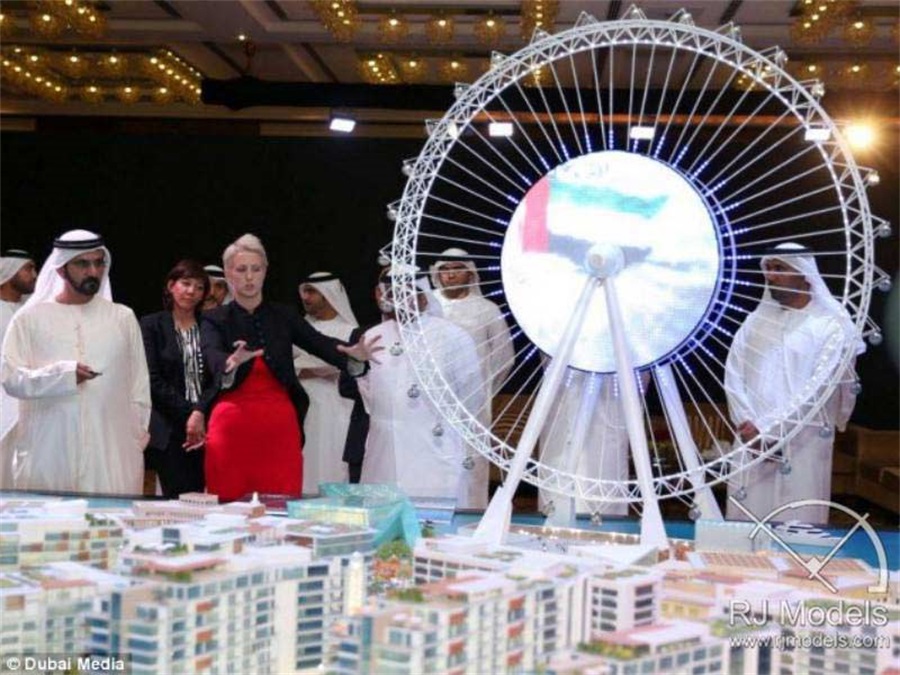
An Example of the presentation model, Ain Dubai
C3.2: Architectural Models Classified by Functions
C3.2.1: Urban Planning Model
Many city planning authorities use urban planning models to promote urban redevelopment as well as to attract investments and donations.
The present city planning models have two types:
Older parts can help people to understand what cities looked like in the past.
Updated parts can provide people a vision of the future.
These miniature cities models’ come in different shapes and size.
City models allow the public to gain perspective on the development of the city which includes land use planning, city landscape, and transportation planning, etc.
Most city models are fully interactive and can be controlled by touch screen.
Different lighting zone can be displayed once the relevant image on the screen is touched.
The model of “Doha City Planning Model” is an impressive example which contains 1000 resin miniature buildings and even every corner of the Doha city was included.
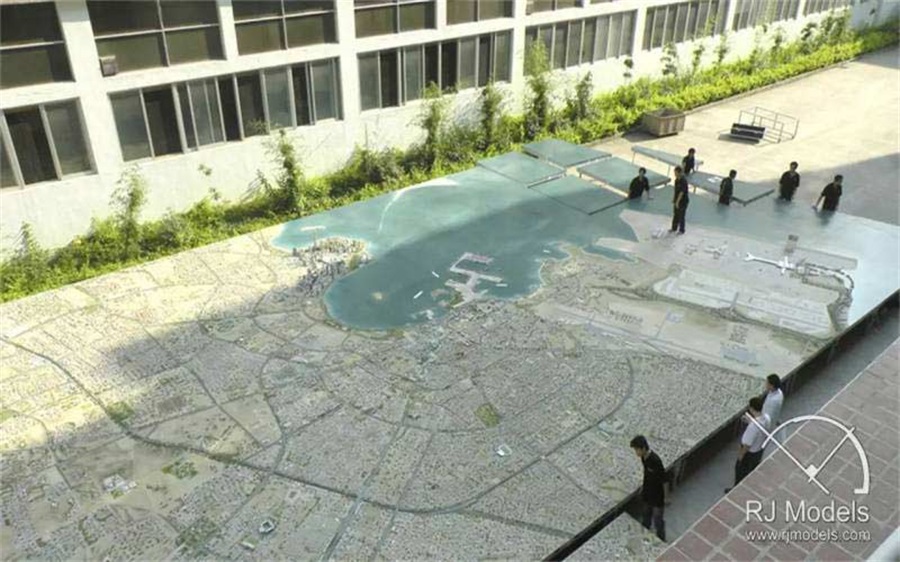
Urban Planning Model
C3.2.2: Office Building Model
Office building model is created in a high level of detail requested by the clients to provide an impressive and realistic representation of a construction project.
Generally, it is used for marketing or building exhibition.
The office building model brings the architect’s design to life by creating various lighting configuration, detailed building facade especially windows details and textures and other encourage elements like people, vehicles, and surrounding landscape.
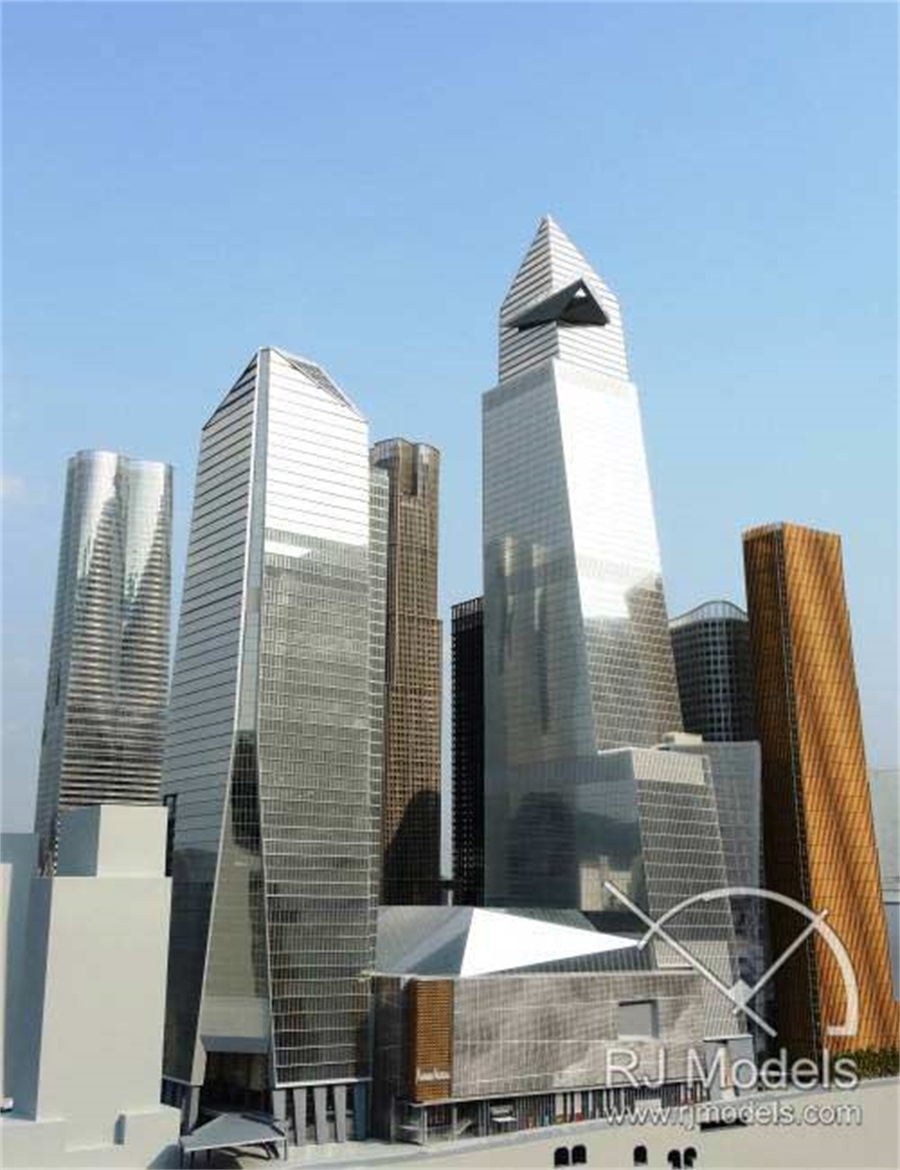
Office Building Model
C3.2.3: Residential Building Model
Residential building models are invaluable tools in the retail world for pre-construction approval, building project phasing, design presentation and client approval.
Residential building models can provide the potential housing buyer or investors a good understanding of the architectural design by showing the road and path layout, entrance, building material and the living environment.
Therefore, it is a great tool for the real estate sales office for marketing.
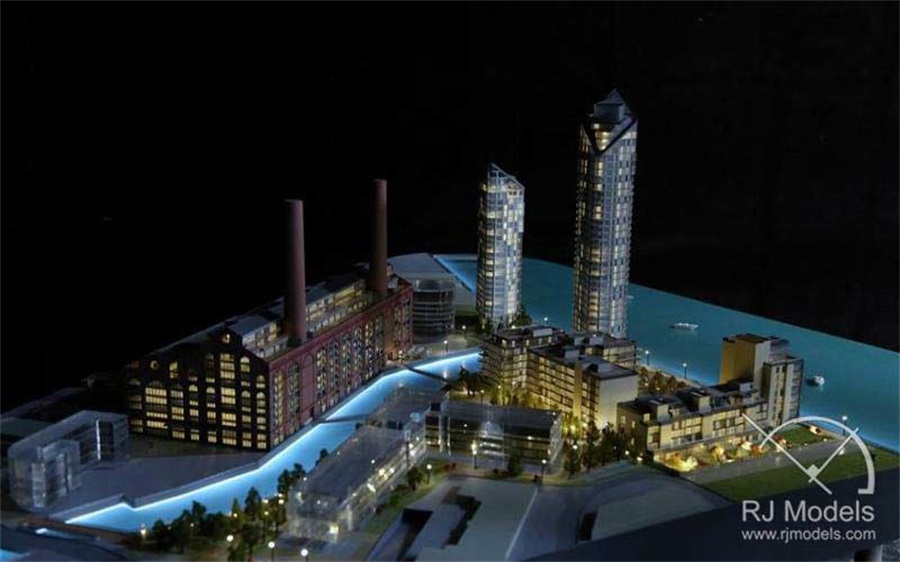
Residential Building Model
C3.2.4: Villa Model
Villa models are usually made in small scale, for example, 1:25, 1:50.
Villa model makes used mechanized components for taking the floor levels up and down to show the complete interior design including the furniture, the lighting fixtures, swimming pools and other amenities.
Villa models are widely used by the developers to illustrate the building projects to the potential housing owners and assisting them to sell plots.
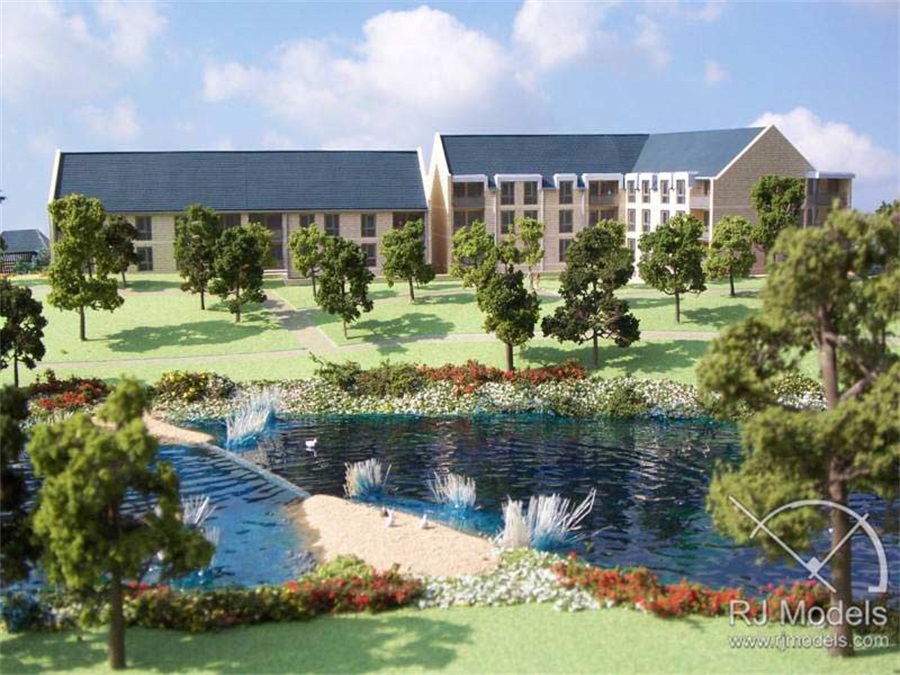
Villa model
C3.2.5: Shopping Mall Model
The primary function of shopping mall models is attracting investments and merchants to settle down.
In order to represent commercial atmosphere, the materials used to make retailing architectural models are always matching with the finished design.
Shopping mall model reproduced the interior designs of a shopping mall.
Other components like backlit signage, LED billboards, etc can help to enhance the overall effect of adding to the shopping mall models.
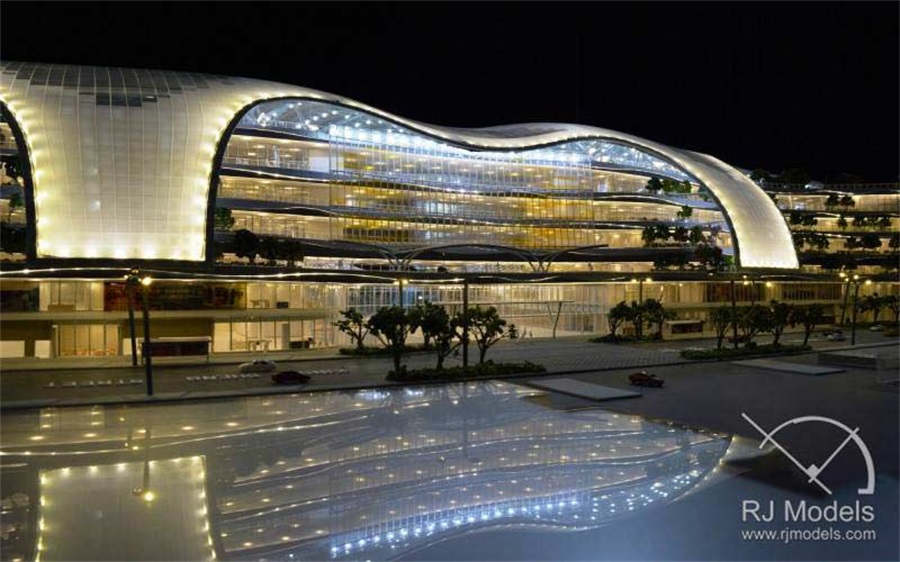
Shopping Mall Model
C3.2.6: Hotel Model
The main purpose of making a hotel model is to show a vivid image of the hotel’s features, thus attract investments and potential hotel guests.
A variation of lighting effect is created to make a distinction between commercial and residential areas as well as to highlight the extraordinary designs.
Almost all the sophisticated details are replicated perfectly by the architectural model makers.
Components like real water gushing system can produce remarkable effects when it is used to make swimming pools and fountains.
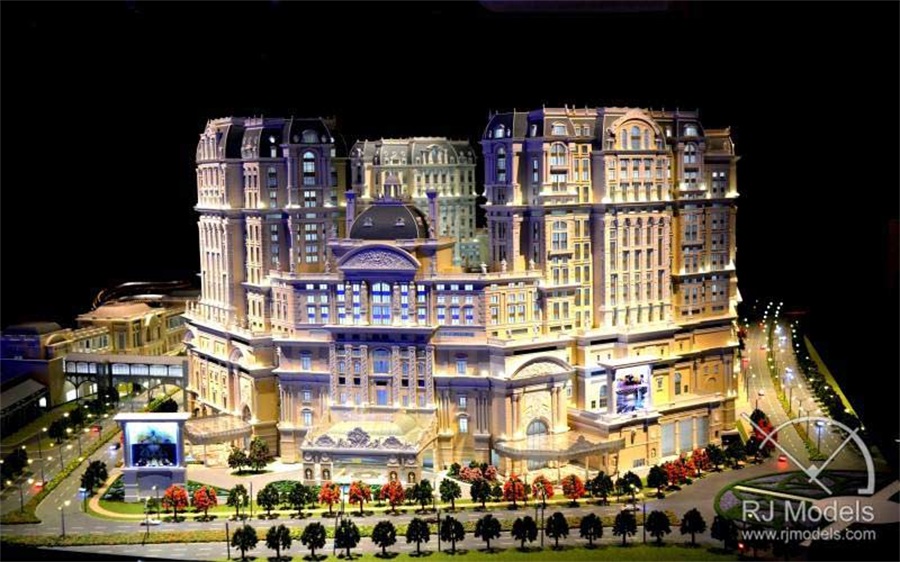
Hotel Model
C3.2.7: Stadium Model
At present, new stadiums are popping up since the sport is becoming increasingly popular.
The stadium model has two main functions.One is expressing the design concept of the stadium.
The other is displaying the stadium seating plan to the audience.Electric lights and manicured grass are critical when making the stadium models.
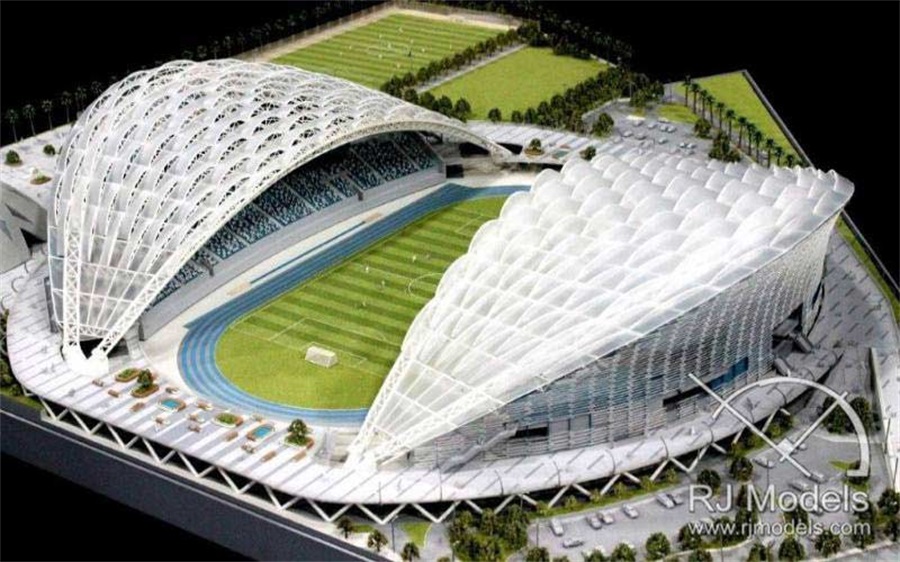
Stadium Model
C3.2.8: Theme Park Model
Theme Park Models are widely used for public display and generate clients’ interest to attract investments.
But most importantly, the theme park model can tell the theme stories which inform and inspire people in an education and entertaining way.
Entertainment facilities like ray speed circuit, startle castle and waterfalls are the key components to make a realistic effect.
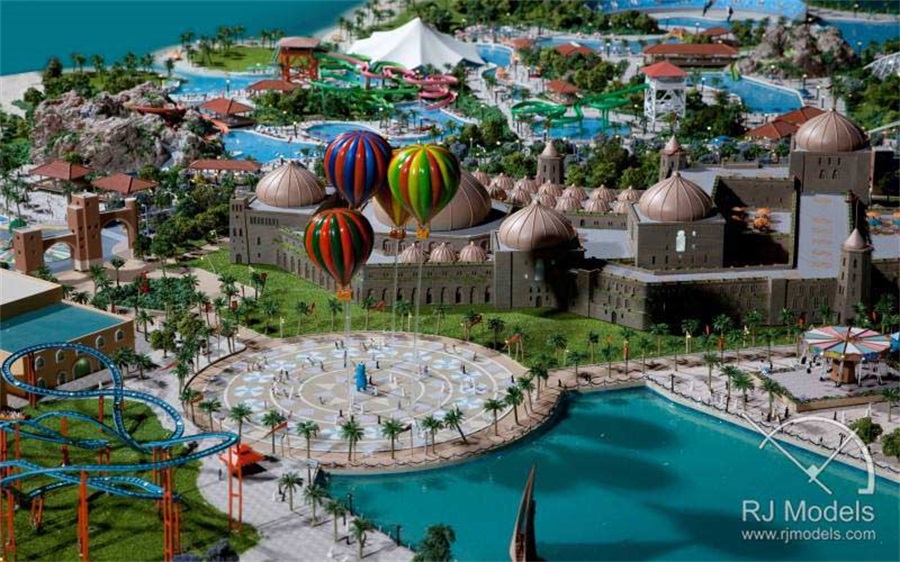
Theme Park Model
C3.2.9: Museum Model
The current design of the museum is tending to be modern and abstract especially its shapes.
In order to reflect these bold design ideas, high-tech and effective technologies and skilled architectural model builders are both indispensables.
In many cities, the museum is being concerned as the landmark of the city.Therefore, the city government requires elaborate and detailed museum model to attract visitors all over the world.
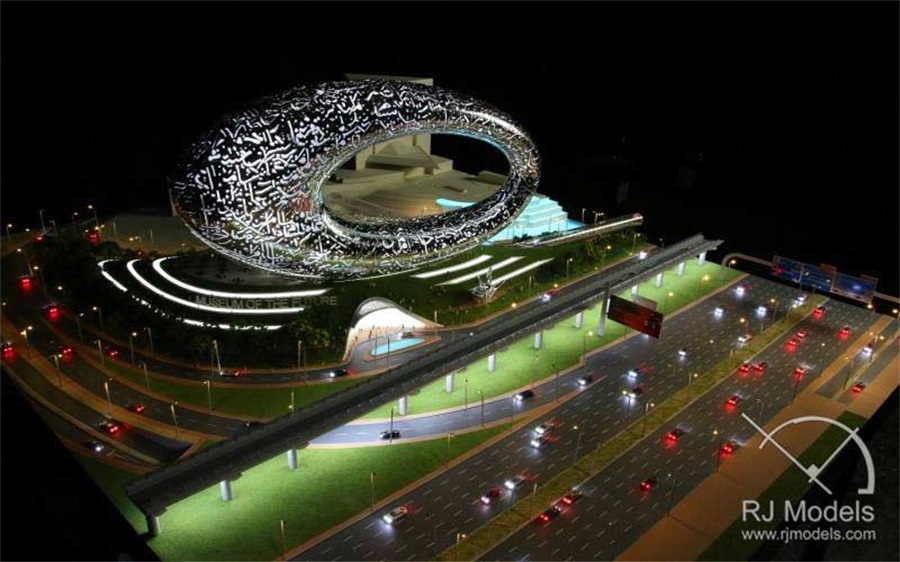
Museum Model
C3.2.10: Factory Model
The factory model demonstrates how the factory operating after it is built.
Factory model includes varies facilities of the manufacturing plant and waste treatment process, etc.Sometimes the factory model requires customized components such as wind turbine and chimney to represent the real conditions.
And adding some landscaping detail, trucks and workers can bring the factory model to life.
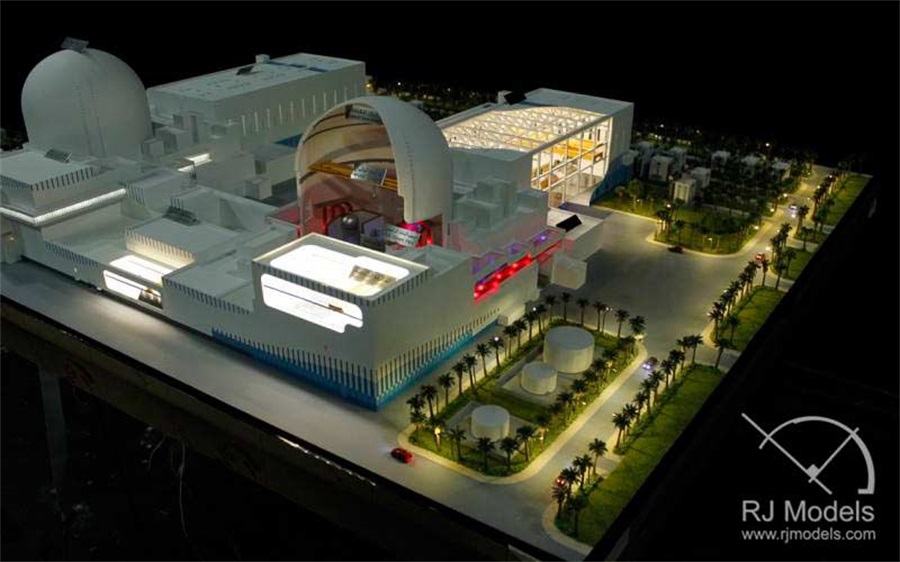
Factory Model
C3.2.11: Bridge Model
In most cases, bridge model is made for exhibition purpose and architecture design competition.
It requires a high level of detail to represent the features and motion of the bridge.For instance, a suspension bridge model incorporates copper wire and smooth casting premium fishing line to make the model looks as realistic as possible.
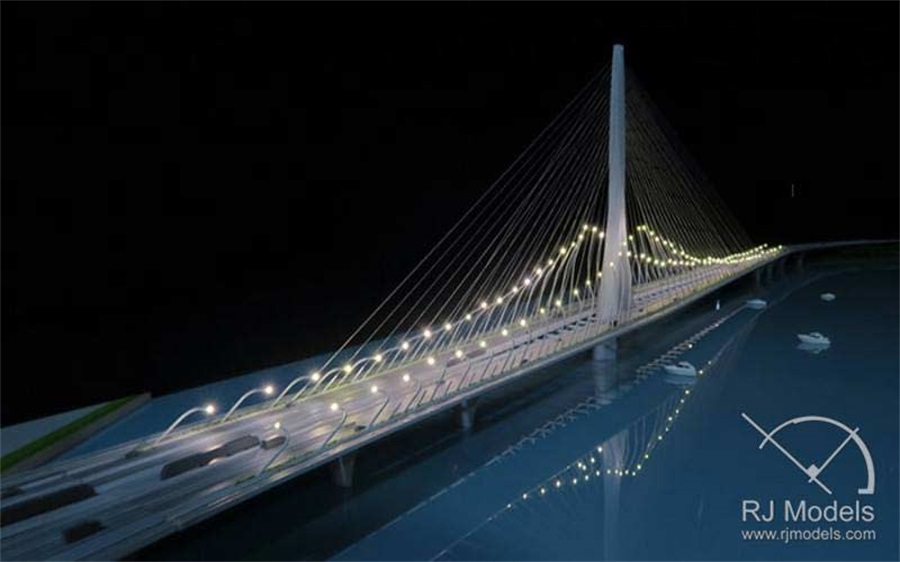
Bridge Model
C3.2.12: Shipyard Model
In reality, a shipyard is divided into several working zones according to different types of work in production.
It includes component fabricating area, preassembling and coating area, assembling area, docking area, etc.
The shipyard model illustrates the whole manufacturing process.
In order to bring the model to life, a variety of buildings types, shipbuilding facilities, a wide range of ships and cranes made by our marine model makers, as well as lights and other details are required to be produced.
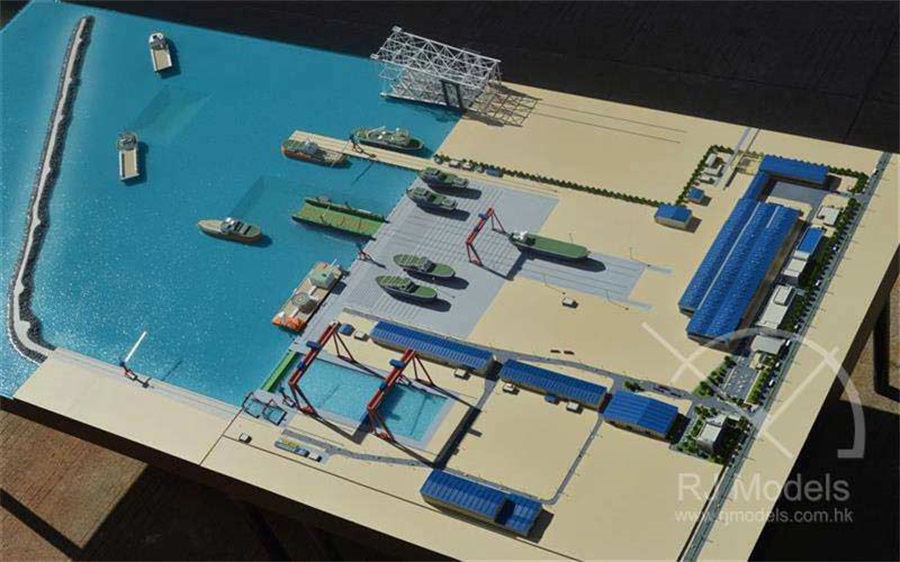
Shipyard Model
C3.2.13: Airport Model
In most instances, airport model is used to represent the design in airport architecture competition and the operation of the airport to the airport authority.
It is also used for fundraising efforts and community acceptance.Sometimes, airport model is made for private collection as well.
Airport runway, taxiway, control towers, cargo and terminal buildings, airport hotel, passenger bridges and other accurate details like signage on each plane are made to scale to make the airport model look as realistic as possible.
The distribution of hundreds of marking light points is especially important to offer to chase and to flash light effects.
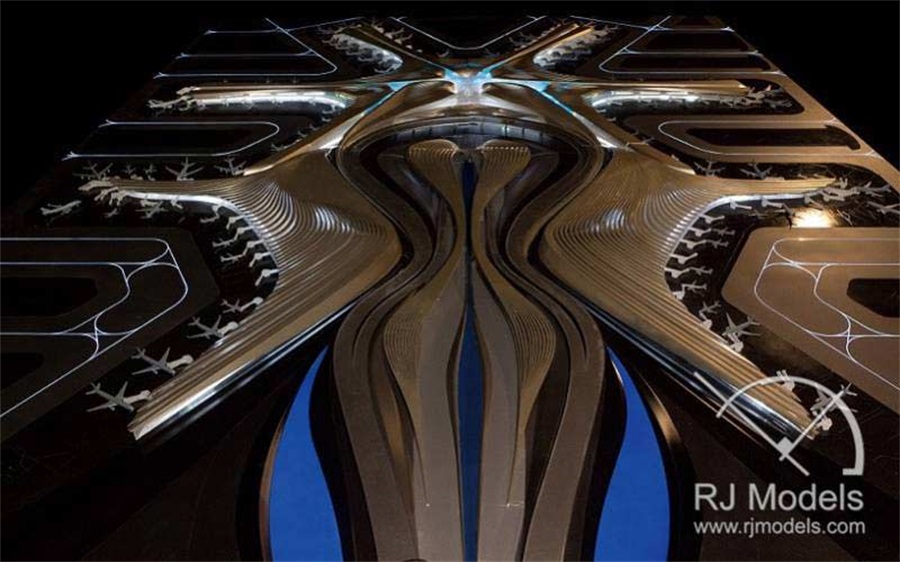
Airport Model
C3.2.14: Interior Model
Interior models are manufactured according to different functions such as industrial, commercial, office and home interior models.
Once the interior model is coupled with the building project model, the roof is removable to show how the interior space is designed, decorated as well as the selection of furniture.
It is extensively used in real estate market to attract potential homebuyers or investments in sales offices.
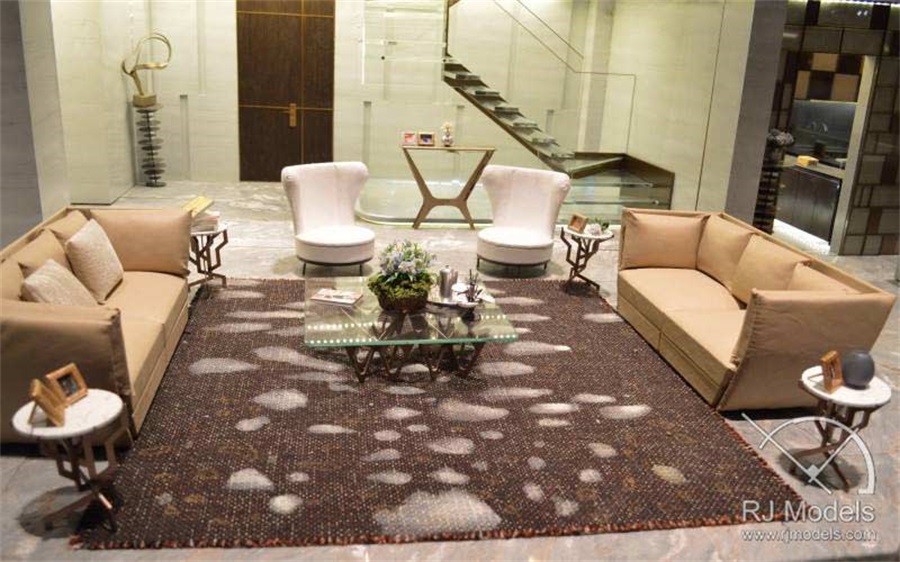
Interior Model
C3.2.15: Landscape Model
Generically, a landscape model incorporates a variety of specific features of the area.
Landscape model includes the topography, the evolutions on the buildings, various types of settlement like farms and parks, and other facilities like wind turbines and solar PV units.
The purpose of the landscape model is to analyze the impact of terrain changes, building layout, and other possible environmental influence.
After scaling down the site to a required small scale, every scenario can be accurately recreated for the relevant departments and authorities to explore new development plans.
Landscape model can assist public consultation process as well.
In some cases, landscape model is being used to attract investments or give the public an insight into their living conditions.
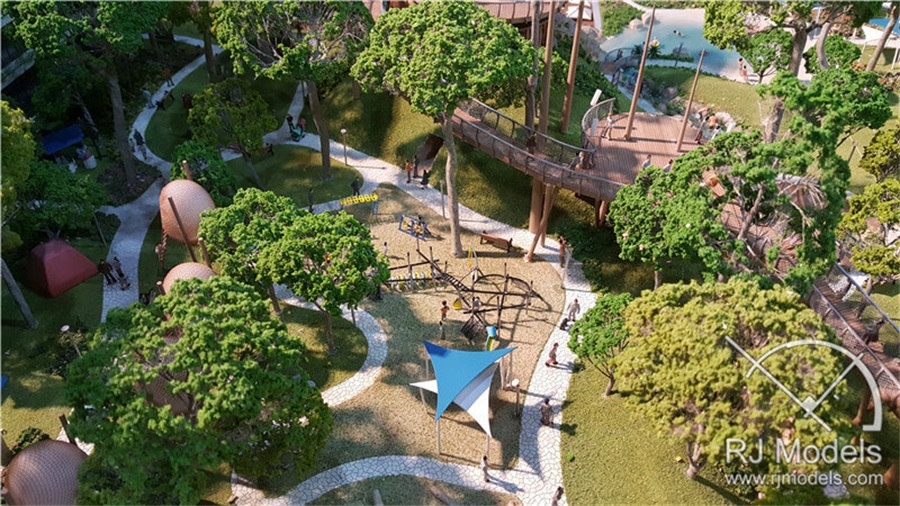
Landscape Model
CHAPTER 4:
Materials of Architectural Models
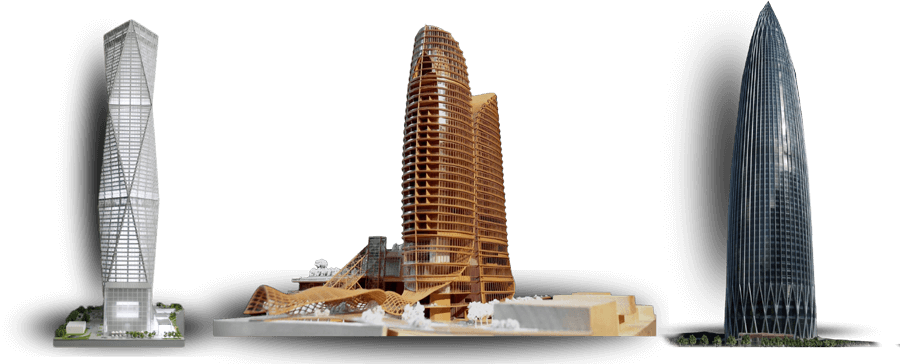
C4.1: Introduction
Similar to the function of sketches, the architectural models are three-dimensional objects which are served as important tools for the architect to present ideas to colleagues, clients, and the public.
With the high-speed development of architecture industry’s diversification, it is necessary to produce architectural models as artistic and fast as possible.
For the purpose to present the buildings’ structure and other features, the materials to make architectural models play an increasingly primary role in model making process.
C4.2: Material Type
Approximately 75% contemporary architectural models were manufactured using solid block materials like plastic, foam, and wood or fabricated using purchased sheets of board stock, such as cardboard.
Material selection is not only about meeting technical requirements, but also requires architects’ comprehensive consideration of its related characteristics.
The material’s appearance and durability, sensory stimulation and the user’s experience are the key elements of architectural model making process.
Architects’ design vision can be well represented by physical architectural models and material selection has a huge impact on how a model feels.
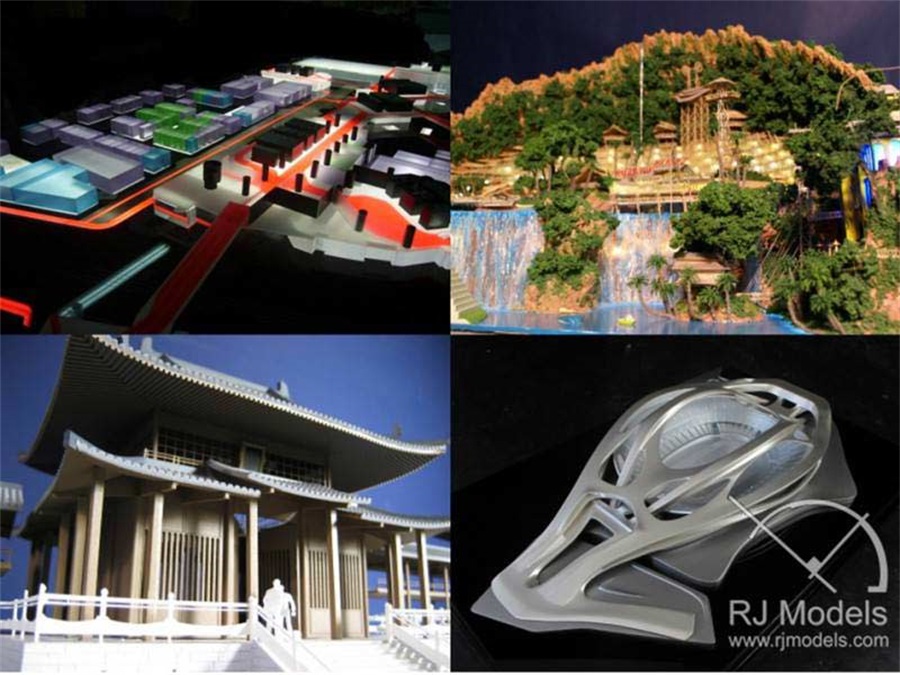
Models made by different material
In order to choose appropriate model making materials, the architects need to take into account certain design criteria to identify the best materials for architectural models according to specific applications.
For example, materials used to create conceptual models are better to be easy and quick to form whilst presentation models requires durable, stable and fade resistant materials.
Therefore, sufficient material information should be provided to the architects to assist them to facilitate a constructive material selection process.
The following is an architectural model making materials list for reference
C4.3: Plastic
C4.3.1: Acrylonitrile Butadiene Styrene (ABS)
ABS is in widespread use when making architectural models.
Because it’s easy to soluble in acetone which allows model makers to weld parts together.
It can also assemble much larger architectural models than the admittedly large bed of the printer can accommodate.
Architectural models made out of full ABS are extremely beautiful.
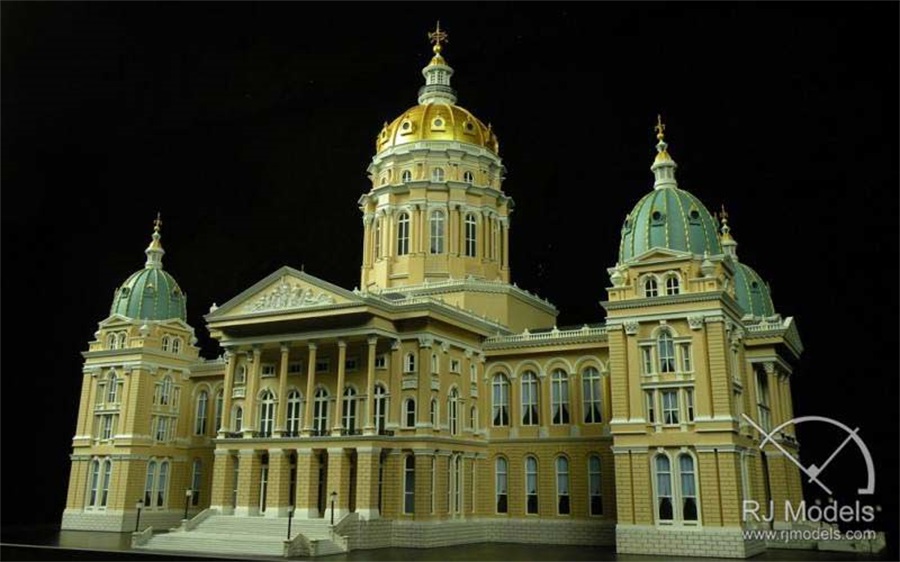
Architectural model made of Acrylonitrile Butadiene Styrene (ABS)
C4.3.2: Acrylic
Acrylic sheets are lightweight, flexible plastic and with a better finish.
Acrylic has good transmittance, hardness and easy to machining.In most cases, it can be used to create windows and façade of the models to make gloss and fluorescent effects.
However, this kind of building model making material is expensive and it has to be cut and engraved by using laser machine.
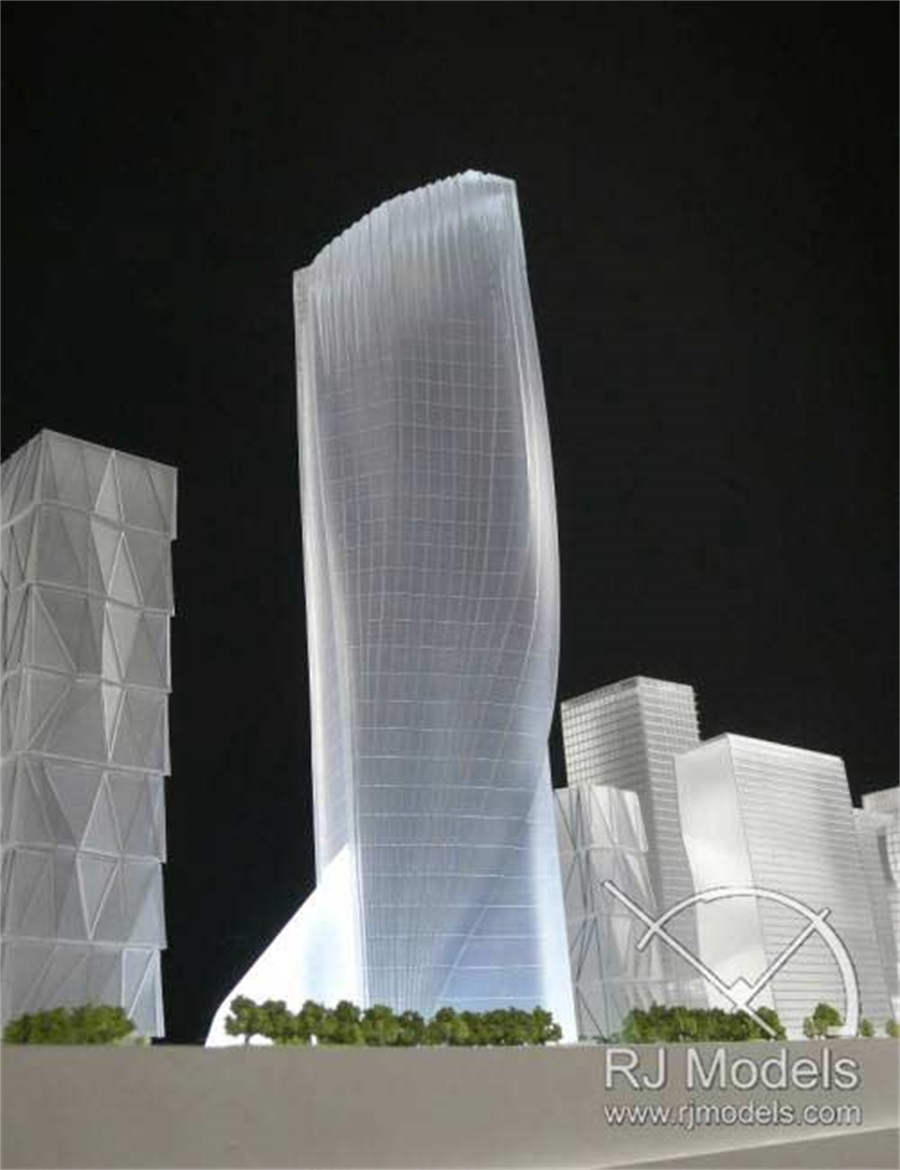
Architectural model made of Acrylic sheets
C4.3.3: Polyamide
Polyamide can provide a realistic implementation of the complex detail design for its character of high precision, firmness and surface smoothness.
Polyamide material is considered as one of the toughest model building materials among all other 3D printed plastics.
Architectural models made of polyamide are generally printed with Selective laser sintering (SLS) printing technology.
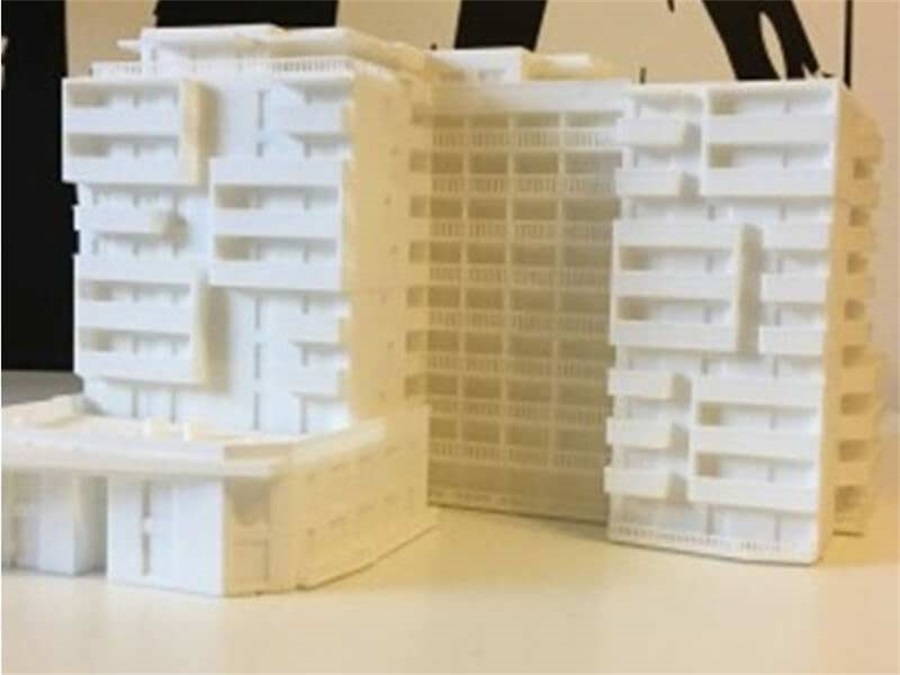
Model made of Polyamide (Image from internet)
C4.3.4: Polyvinyl Chloride (PVC) Sheet
PVC Mirror Sheet is a rigid sheet but it is not as rigid as glass.
It became a popular choice of architectural model making materials because of its shatterproof and lightweight properties.
PVC Mirror Sheet is mostly used for representing transparent and translucent areas in the architectural model making process.
C4.4: Wood
Wood and wood-based products are the most commonly used materials used for wooden architectural model making.
It is a strong material with dimensional stability. The following are the introduction of some frequently-used woods.
C4.4.1: Basswood Basswood is one kind of Strip woods with fine grain.
Basswood has an outstanding workability and finishing qualities.
This architecture model material is widely used to make the architectural model of buildings and miniature furniture inside.
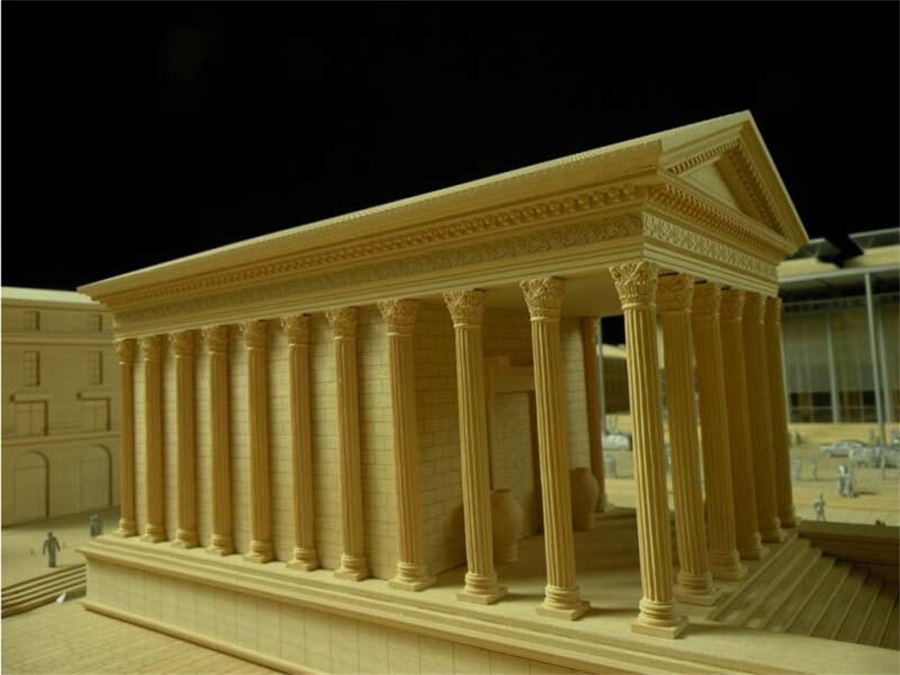
Architectural Model of window and door made of Basswood
C4.4.2: Balsa Wood
Balsa wood is one kind of hardwood with a nice finish and texture. It can be cut, painted and sanded easily.
Balsa wood is one of the building model making materials to make the structure and the frame of the buildings.
However, it is fragile and this character always leads to material wastage.
In addition, the slotted surface of balsa wood people may find it is unappealing sometimes.
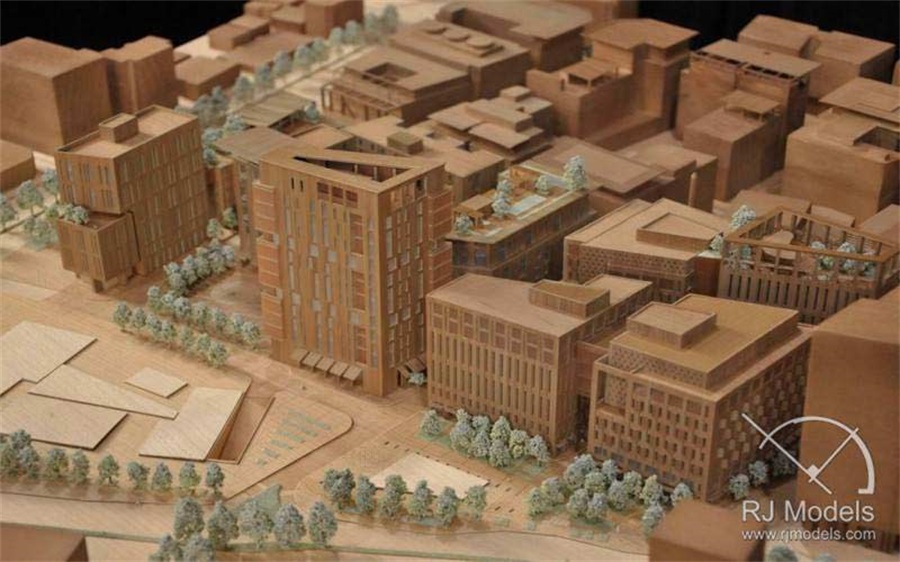
Architectural model made of Balsa wood
C4.4.3: Medium-density Fiberboard (MDF)
MDF is similar to thick cardboard.
It has smooth edges, natural color and easy to work with.
Nevertheless, this material is relatively dense and heavy.
Considering the total weight of the architectural model and its stability, MDF is more used as model bases by model makers.
C4.4.4: Cork Flooring
Cork flooring provides a feeling of nature.
It is good for making landscape models such as model hilly sites.
Cork flooring can also be used as a solid foundation but better with other materials for its soft and cushiony surface.
Other disadvantages that need to be bear in mind are:
1.It is susceptible to damage
2.Sealing work is required to protect against water stains and other damage
3.Discoloration may occur if exposed to the sun for a long time.
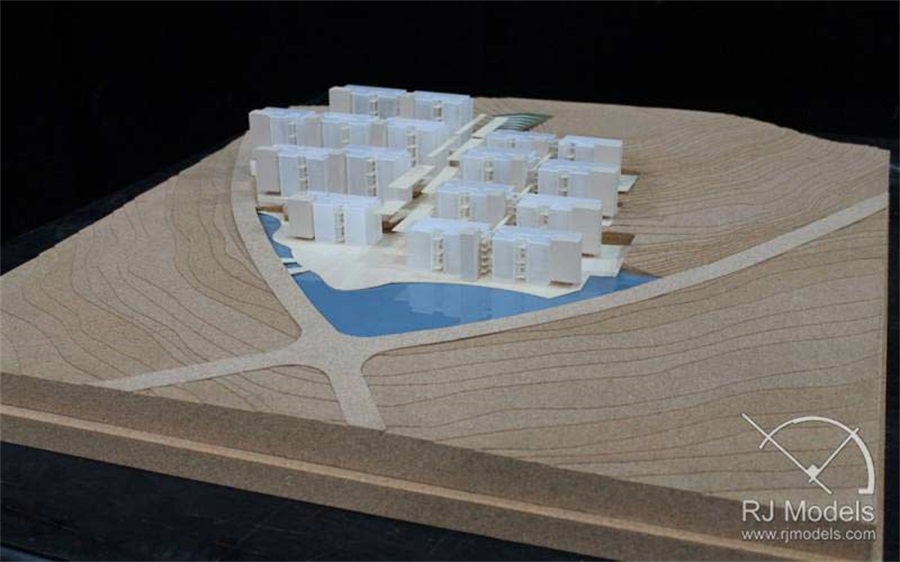
Architectural model made of made of Cork Flooring
C4.5: Paper
C4.5.1: Cardboard
Cardboard is a common model making material and is used extensively when making the models.
Lots of architectural models used cardboard to show roads, pathways and certain terrains by building them up in layers.
Cardboard is cheap, portable, recyclable and uniquely flexible.
It is very easy to use without the need for special equipment during the model production and installation process.
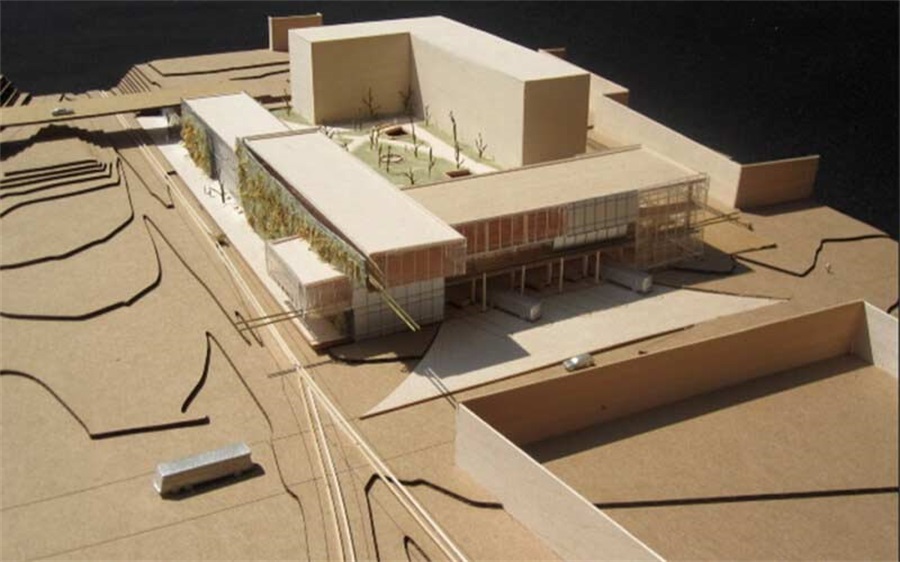
Architectural Model made of Cardboard (Image from internet)
C4.5.2: Kraft Board
When making the large-scale architectural models, Kraft board can be chosen as an ideal model building material as it is always used to form the overall structure rather than details.
In other words, architectural models made by Kraft board are meant to present the relationship between the building and the surroundings.
Normally, the Kraft board is cut cleanly and edges cannot be made to look 100% smooth.
Thus, an architectural model made of this material has a very strong structure.
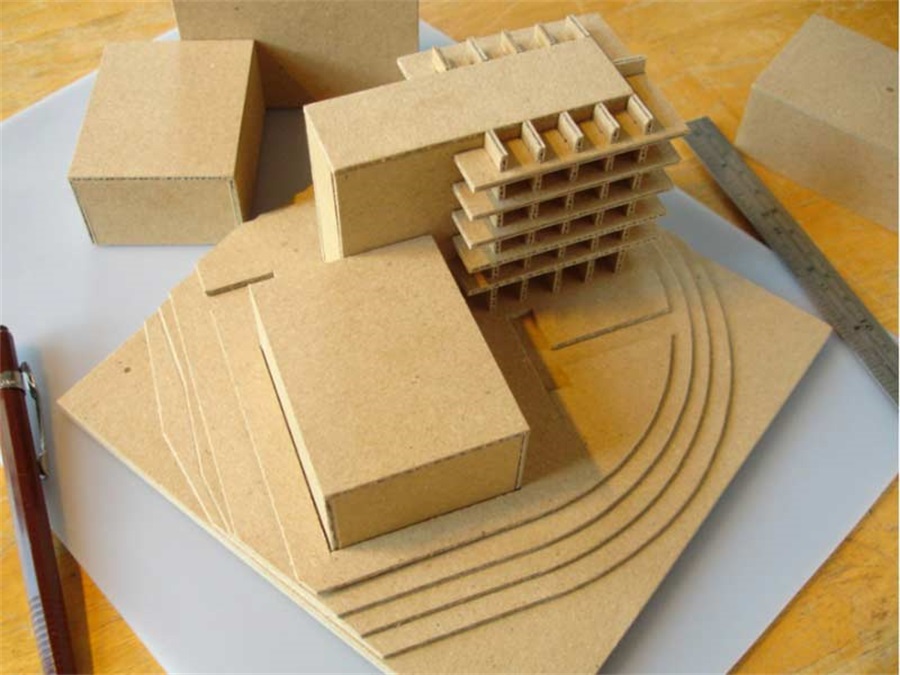
Architectural model made of Kraft Board (Image from internet)
C4.6: Foam
Foam is extremely useful to make massing and study models.
The commonly used foam is Styrofoam, compressed foam board, and blue foam.
Compressed foam board is widely be used as a model base or to make models.
Blue foam is always been chosen to shape sculptural form.
The surfaces of foam can be painted with any kinds of water-soluble paint.
C4.6.1: Insulation Board
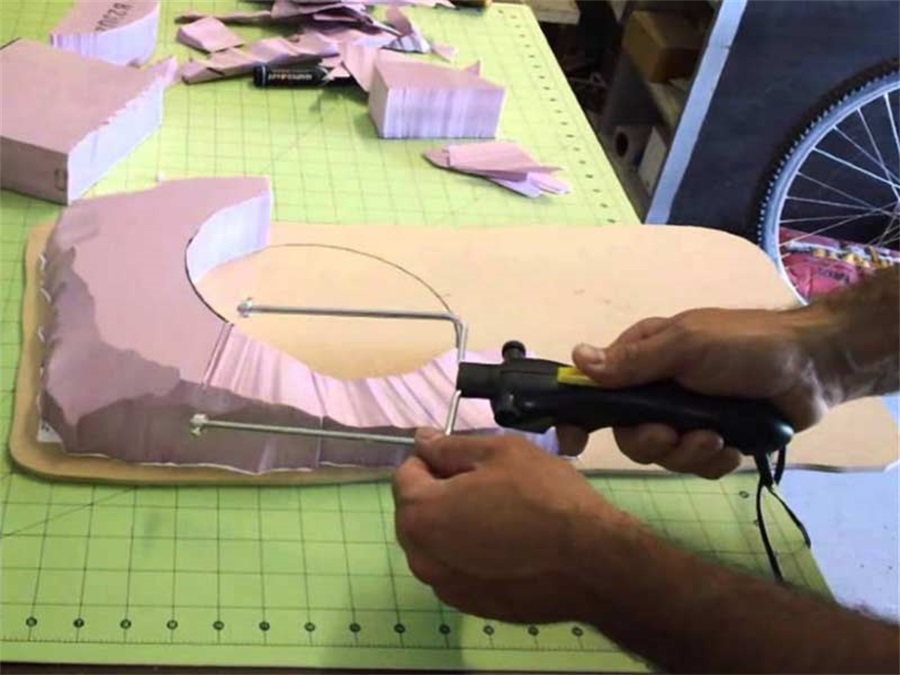
Insulation board is light and easy to cut.
It is more used to make concept models.
Insulation board usually has a few of colors, gray, pink and brown.
The brown one is rougher and looser thus it is preferred for site models.
Architects use this material to make small-scale buildings for the architectural model of a street or a town.
Nevertheless, the architectural models made by insulation boards are kind of easy to be damaged, especially the edges and corners due to the fragility of the material.
Insulation boards model making process (Image from internet)
C4.6.2: Gator Board
Different from foam core board, gator board is easier to build and has a smooth finish.
It is an ideal architecture model material to make the quick, large-scale construction of architectural models since it has a lightweight, moisture resistance surface and easy to cut with a knife.
Generally, it is used as a substrate for displays where light but sturdy scale model materials are required.
It can also be chosen as a base plate for wet materials which require a water-resistant backing while the coating dries.
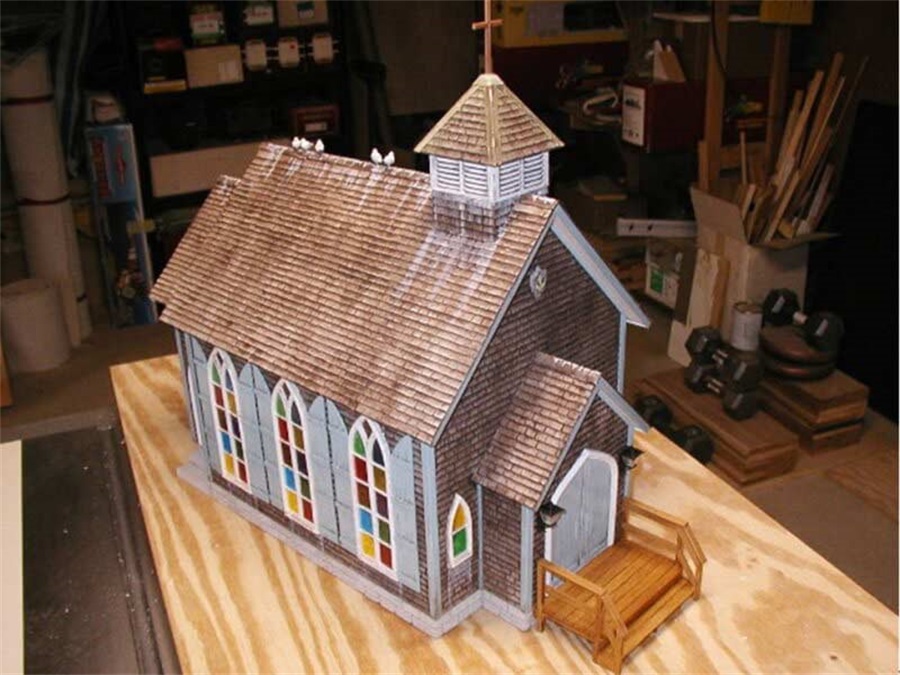
House Model made of Gator Board (Image from internet)
C4.7: Glass
Nowadays, glass is no more only be used only in window modeling.
It can also be used to show the water or to highlight cut edges as a design element in architectural models.
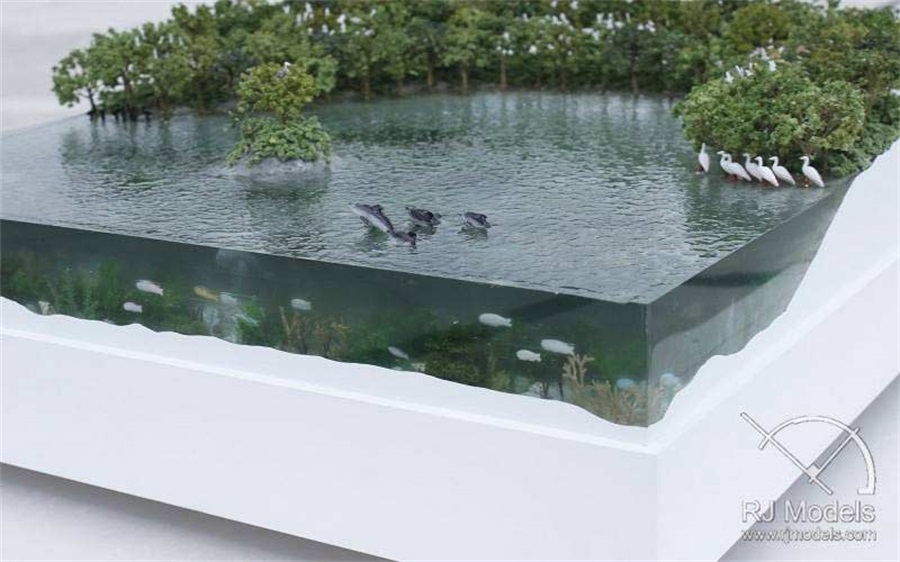
Water and building façade made of glass
C4.8: Metal
When making architectural models, metals are mostly be chosen to make building façade, frames, model bases, formwork and other metal structures.
In order to enhance the appearance of metal sheets, the surface of mental needs to be polished in advance.
Copper sheet, aluminum and steel plates are often found being used when making architectural models.
Metals are easy to work with and have remarkable appearances.
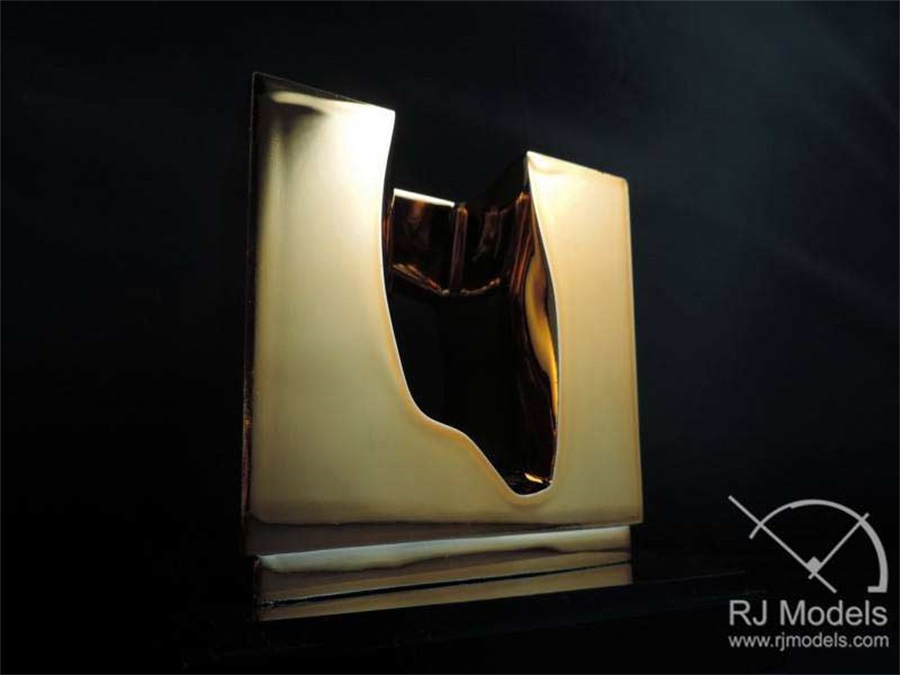
Model made of Metal
C4.9: Clay and Plasticine
In the past, clay and plasticine were used to express initial design concept since these architectural model making materials are very easy to shape and knead.
Clay used for modeling has a fine texture and easy to smooth.
It is one of the best materials for architectural study models.
Also, rolled into thick sheets, clay and plasticine can also be cut to make walls for large-scale presentation models.
When making the architectural model of buildings, the openings are usually represented by cut-out recesses.
Other building components can be in made in advance and applied to the walls to model elaborate facades.
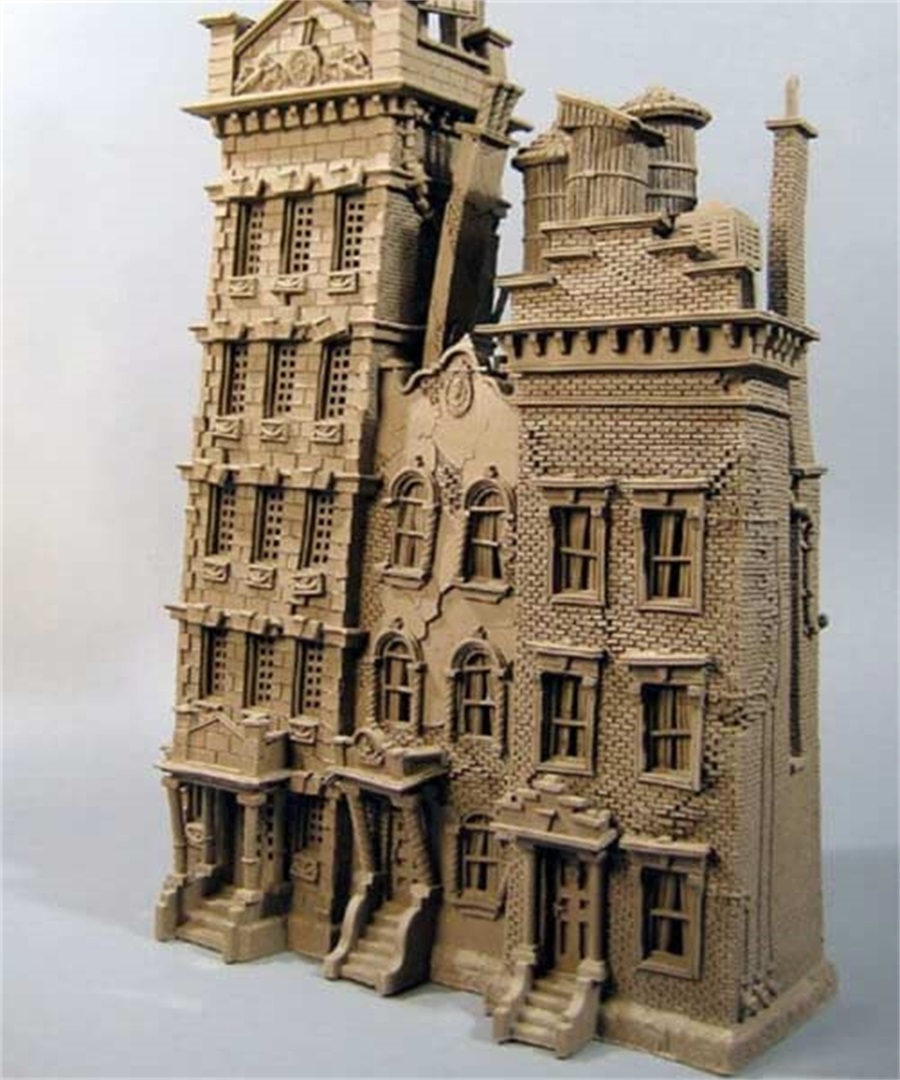
Model made of Clay (Image from internet)
C4.10: Model Plant Materials
C4.10.1: Dark Green Coarse Turf Bag
The primary use of Dark Green Coarse Turf Bag is to create low grasses, leaves, and weeds.
What’s more, it can help to add texture and forms a smooth transition from low ground cover to medium and high ground cover.
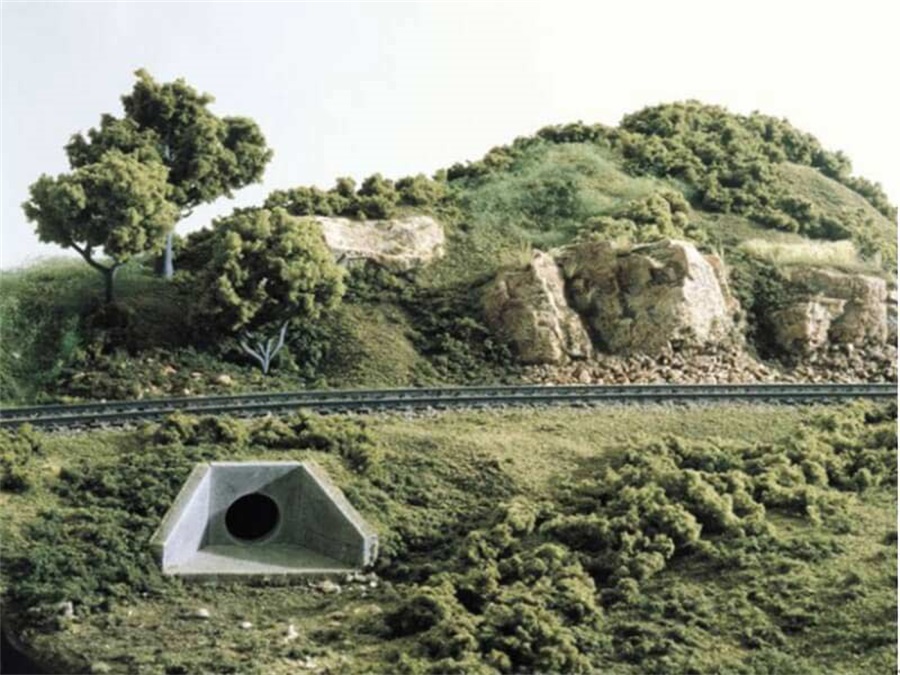
Landscape model made of Dark Green Coarse Turf Bag (Image from internet)
C4.10.2: Forest Green Bushes Bag
Generally, Forest Green Bushes Bag is used to making medium to high ground covers like bushes, shrubs, and trees.
It is also ideal to make medium to large trees and architectural model grass.
This model-making material can be used for any scale.
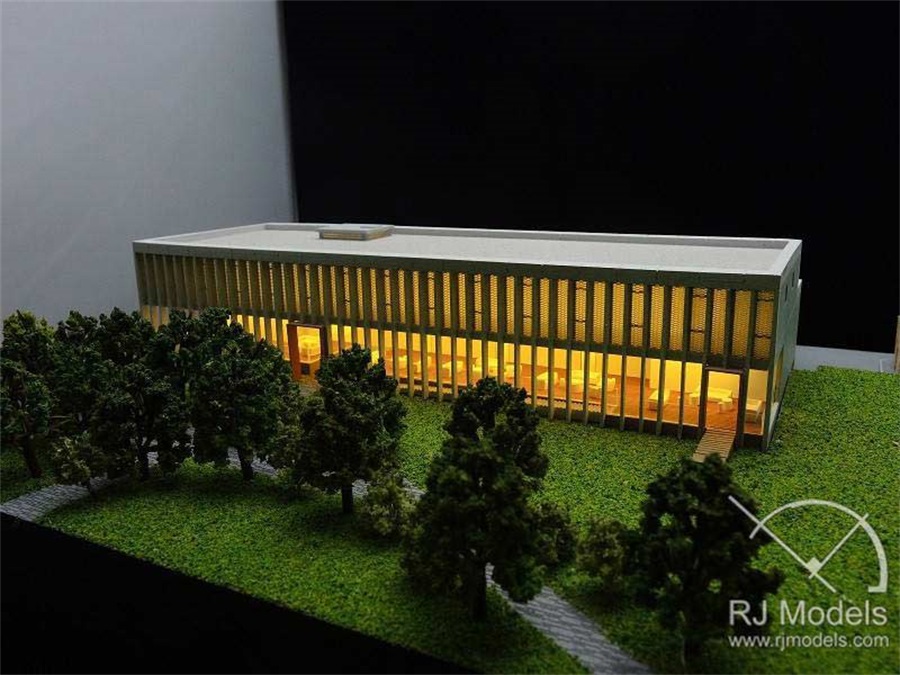
Model of landscape scenery made of Forest Green Bushes
C4.10.3: Flocking
Flocking is a great base model making material commonly been used to represent architectural model grass and low foliage landscapes.
It seems to be the easier route than the static grass.
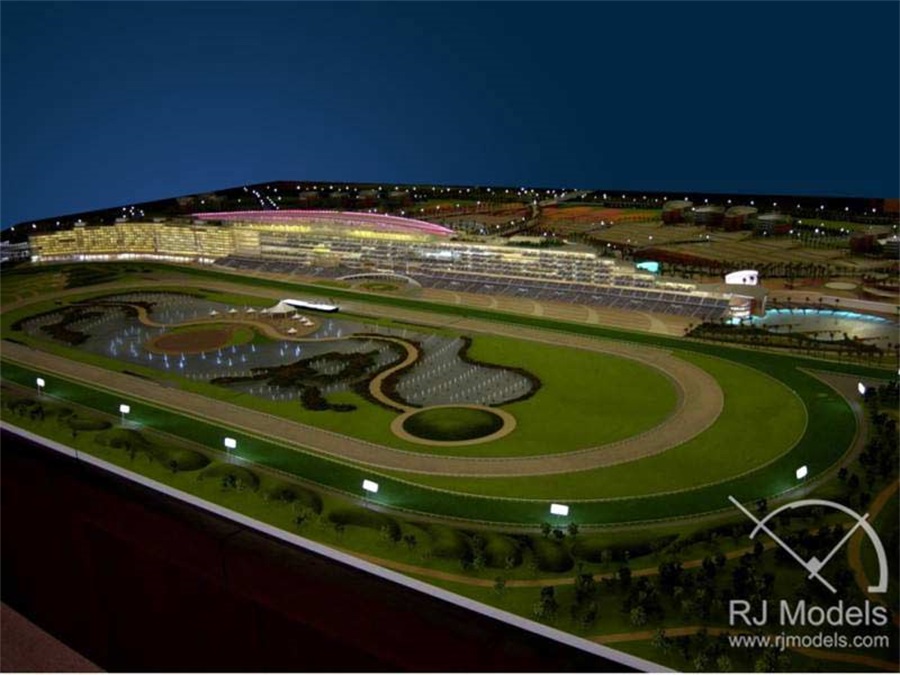
Horse-racing course model of landscape scenery made of flocking
C4.11: Scenery Elements
Scenery elements are the ready-made architectural model components which include miniature doors, windows, skylights, other building parts and components furniture, figures, vehicles, scale model trees, etc.
These products add life to architectural models and offer the clients a comparative sense of scale.
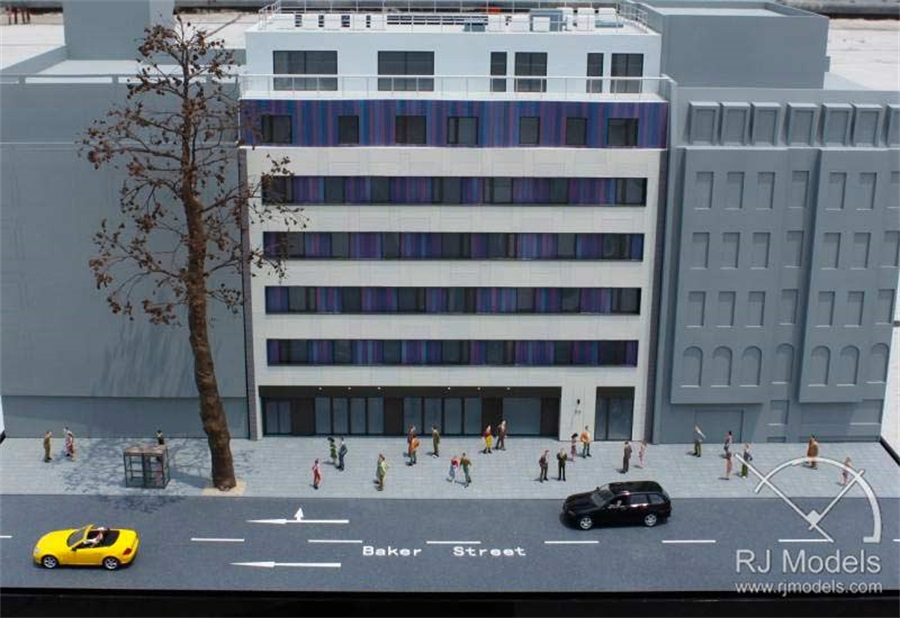
Scenery Elements like figures, vehicles, trees
C4.12:Conclusion
Modern and contemporary architectural models are diverse in model building materials and in purpose.
Thanks to the diverse natural color, strength, and workability of numerous materials, the architectural model became an irreplaceable tool to study and give definition to architectural ideas in three-dimensions.
CHAPTER 5:
How to choose the scale of architectural models
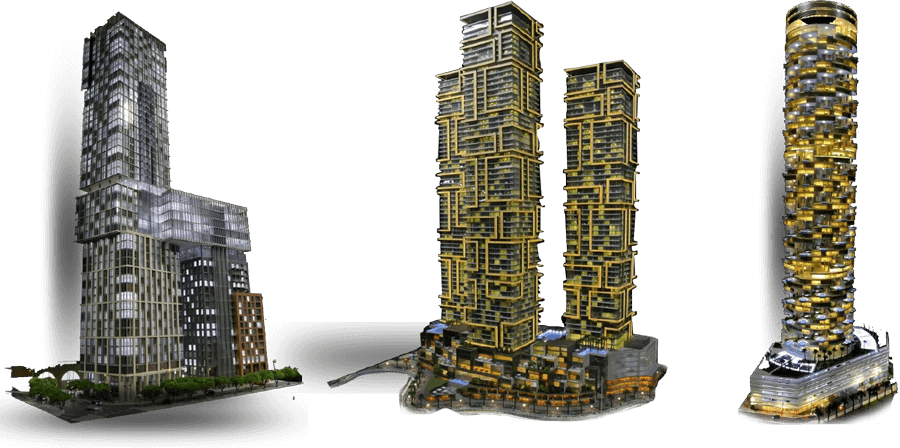
C5.1:Introduction
Scale models are recognized as the necessities to the architectural profession.
Architectural models are made in different scales.
Generally, physical architectural model is usually reduced in scale referring to the actual building size.
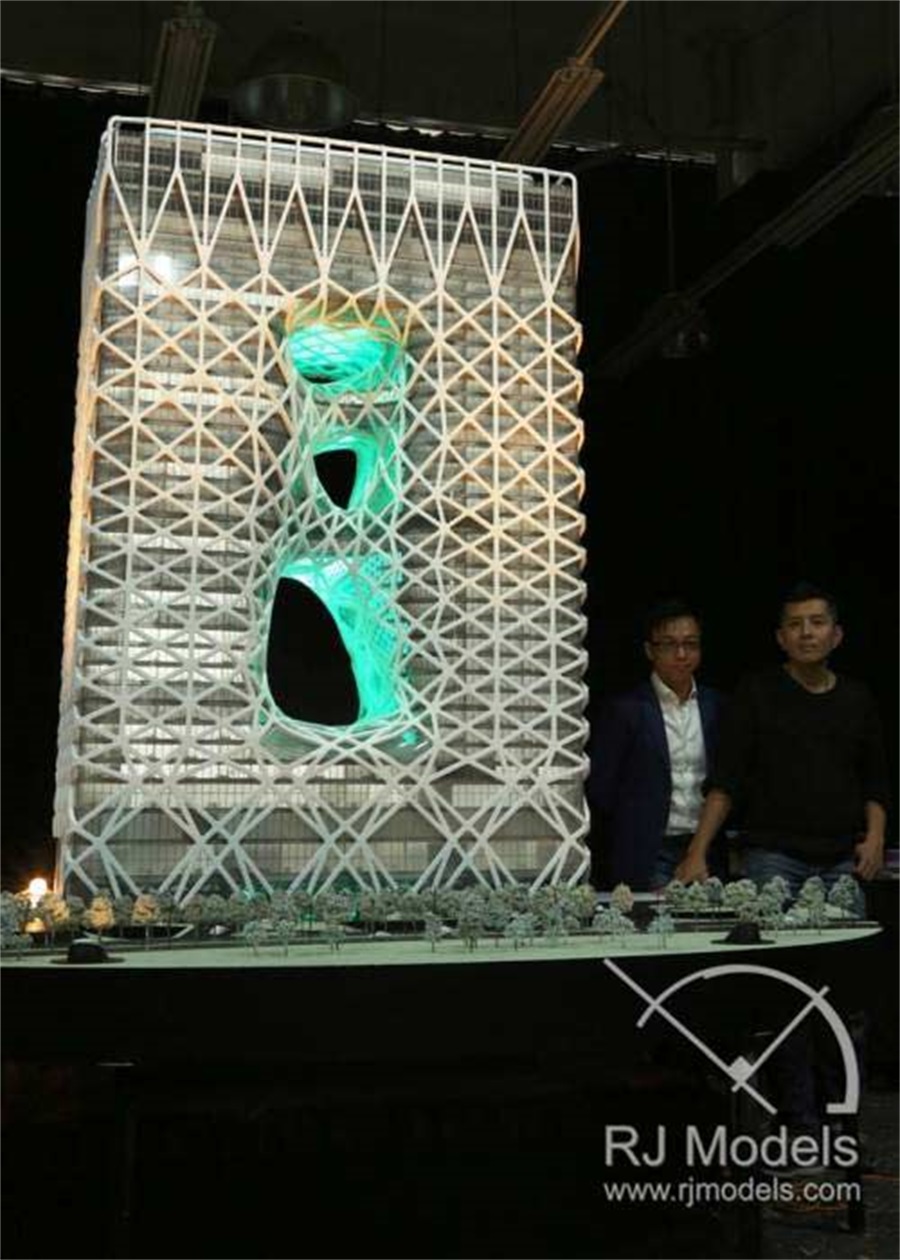
Scale Architectural Models in 1:80, City of Dream by Zaha Hadid
When making the scale architectural models, the relative proportions need to be the same as the real architectural objects.
Choosing an appropriate scale before manufacturing an architectural model is very important.
It will affect the effect of the architectural models and has an impact on the model cost as well.
The following are some key points which may help to decide the scale of architectural models.
C5.2:Identifying the Purpose
Generally, architectural models can be made depending on the needs of representation.
In other words, the overall purpose of choosing a right scale is to make the model look as convincing as possible.
The clients need to classify which design stage that is to be presented the scale models.
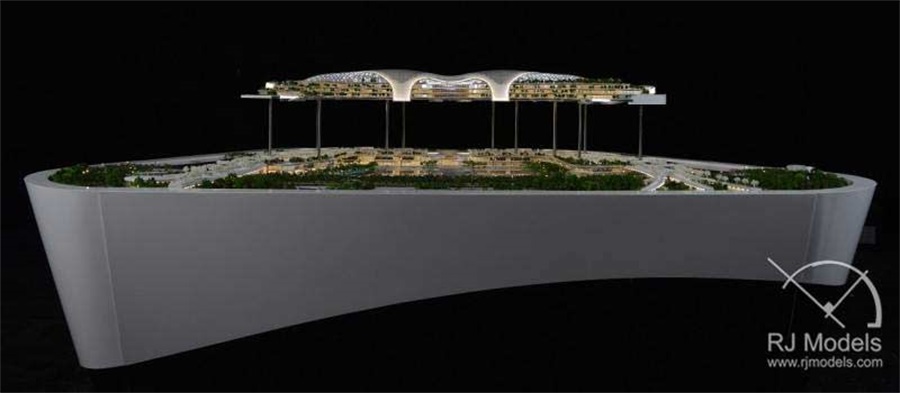
For the design stage, study architectural models are recommended.
Working architectural models are commonly used for design improvements and modifications.
Presentation model is widely used in the final design stage of a design project.
C5.3:Considering the Conditions and Costs
C5.3.1: Viewing experience
The location on which architectural models will be presented is another important thing needs to be taken into account.
Exhibition architectural model should leave enough space for public viewing.
And it also should avoid the sense of emptiness of the exhibition hall.
C5.3.2: Convenient transportation
In some cases, architectural models are required to be moved frequently from place to place.
The scale and weight of the models are especially important.
Architectural models for marketing should fit well in a marketing suite.
C5.3.3: Budget and deadline
Budget and project deadline are also need to be taken into consideration when deciding the scale of architectural models.
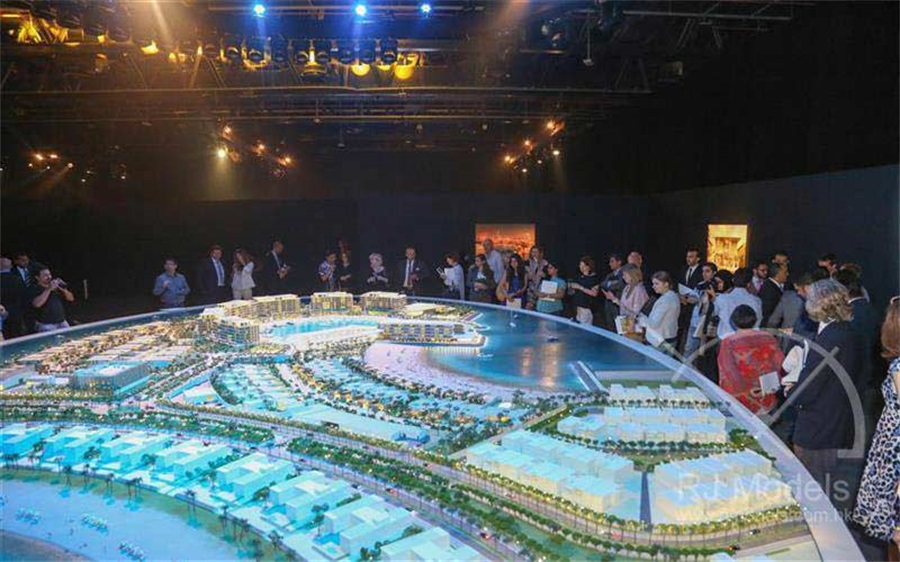
Detailed architectural model requires relative longer producing time and higher cost.
C5.4:Selecting the scale and size
Scale dictates the level of detail that can be presented.
Large scale architectural models have high visible level of detailing.
The smaller the scale indicator number, the larger the model, and this means more detail can be illustrated.
The scale of architectural model not only influences the amount of detail that a model can illustrate, but also the texture of architectural model materials in the completed architectural models.
In addition, lots of scenery elements are pre-produced by the industry factories.
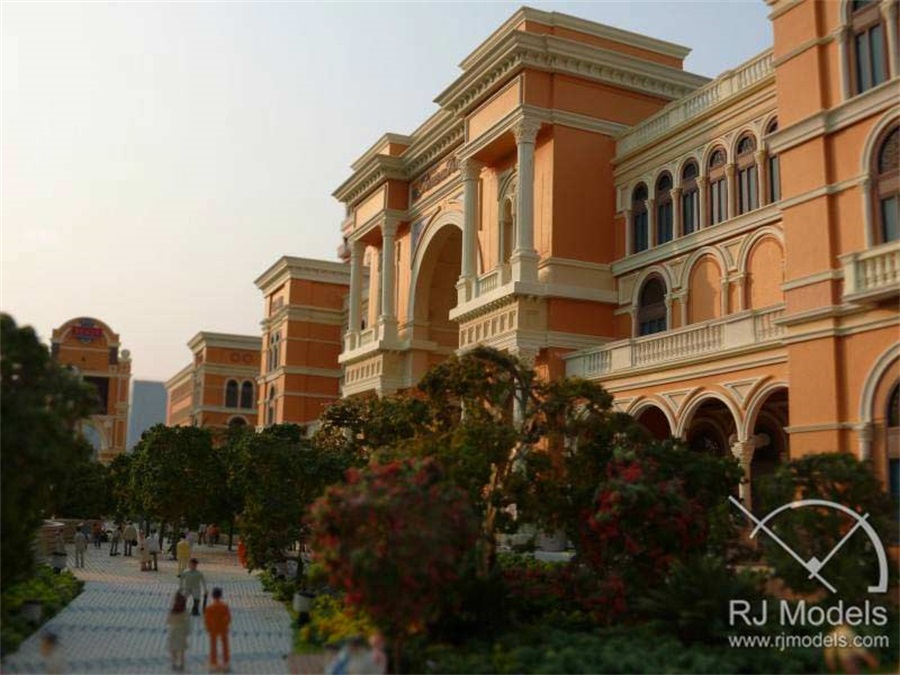
Usage of pre-produced scenery elements
When selecting the scale of architectural models, the clients and model builders should consider about whether the scale selected will match the standard scales in modeling industry.
C5.5: Common Scales of Architectural Models
C5.5.1: 1:1-10 Product Model, Interior Model
1:1 to 1:10 architectural model is not very common to see in architectural model making industry.
Architectural model making companies only manufacture these big scale models when the clients have specific needs.
Life sized model
The 1:1 scale model is also called life sized model.
These detail models are used as presentation models to show the pretty much the same detail as the actual products.
Therefore, Life sized model is kind of expensive to produce.
Looking back into the history of architectural model development, since the Renaissance, architects started to build life sized wooden models of buildings sections situated on the project site to experience its reality.
Life sized models are made for particular needs.
For example, sometimes the real object is really heavy and not easy to transport, therefore a life sized model with lightweight is required.
Product Model
Product model derives from the design of an object like furniture.
The conventional scales of product models are 1:1 to 1:10.
These product models are always used for desktop display of cars and motorcycles, etc.
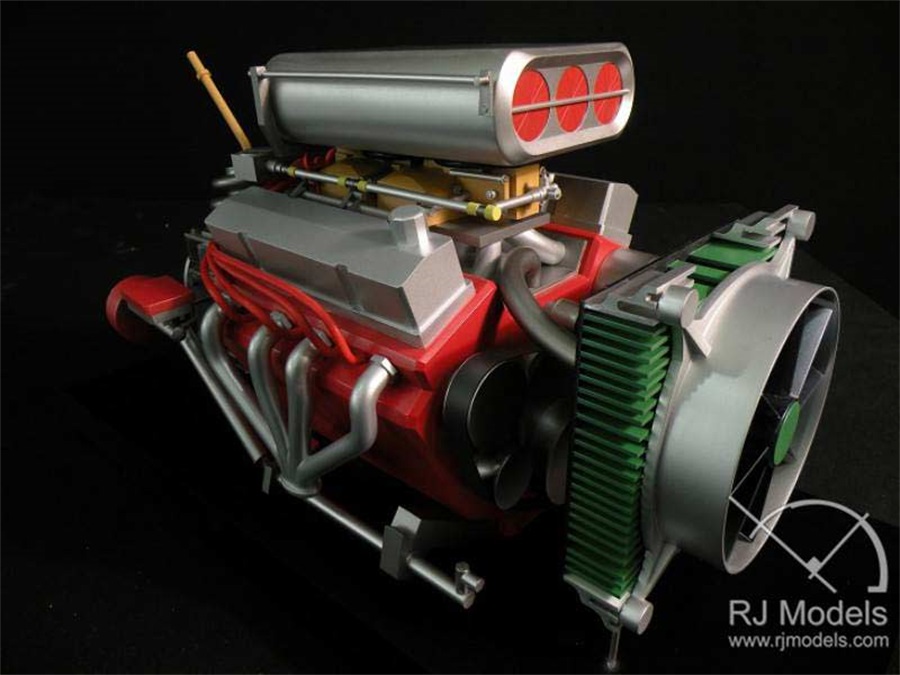
Product Model, V engine Scale in 1:4
Interior Model
1:5 to 1:10 scale interior model is great for representing a lot of realistic details inside a building.
At this scale, the interior model will be one ten of the actual size.
Room layouts, selections of furniture, miniature people, and other detailed components can be well represented.
However, only very few interior models are made in these big scale.
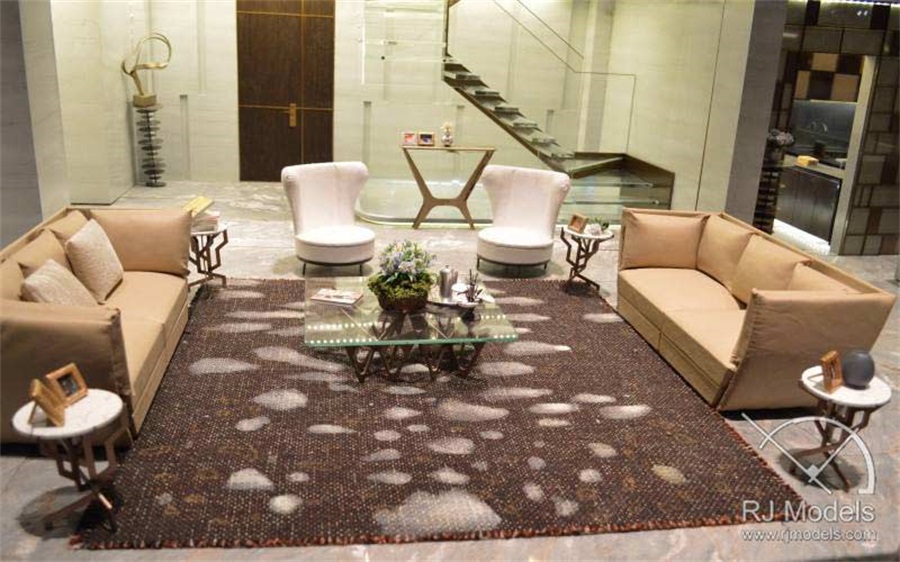
1:5 Scale Interior Models
1:10-50 Façade Model, Section Part of Model, Interior Model
Facade Model
Sometimes, customers may need facade model to show the unique design of the exterior wall or the entrance of a building.
Facade model is a very authentic representation of several exterior design elements especially the building material, the windows and doors.
For another, facade models are made for exhibition.
These architectural models are very good expression of different architectural styles throughout history.
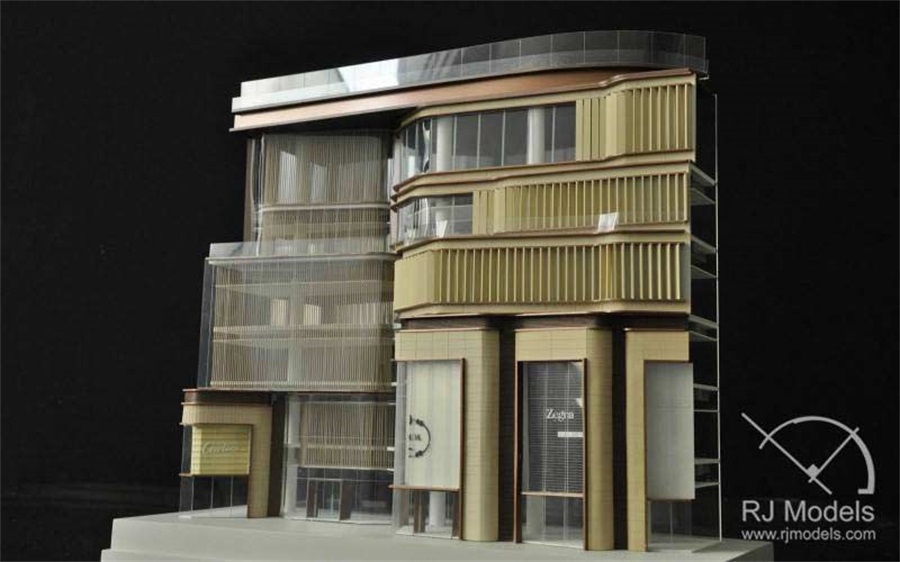
1:30 Scale Facade Model
Interior Model
Interior model is a perfect tool for real estate developers to attract potential house buyers and investors.
The 1:10 to 1:25 scale interior model is a good representation of designed interior space.
It offers a real spatial situation to the viewers.
In most cases, the roof of the building can be removed to show the interior design.
Different from other architectural model, large scale interior model is usually fits in a ‘blank box’ with the ceiling or roof being removed.
1:50-300 Interior Model, Building Model
Section Part of Model
Section Part of Model provides an internal view of the architectural model by exposing construction details of the building.
The structure, foundation and other important features can be clearly viewed.
1:50 is the most popular scale for a section model.
Section Part of architectural model is usually used to present the structural and spatial qualities of architectural design.
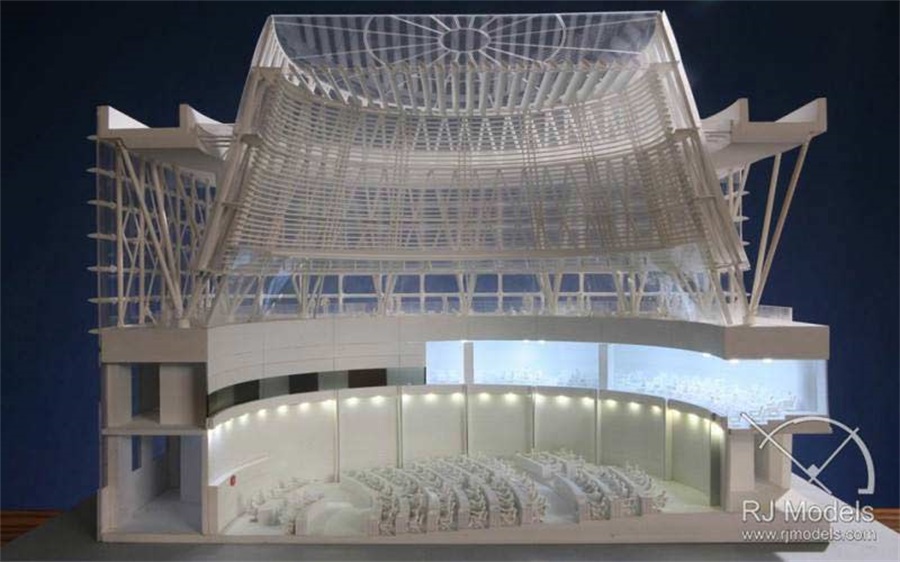
1:150 Scale Section Model
Layout Model
The 1:50 to 1:100 scale layout model allowing views of room layouts if each individual floors.
Therefore the design and arrangements of the interior space can be made visible.
These architectural models are extensively used by real estate developers to sell the houses.
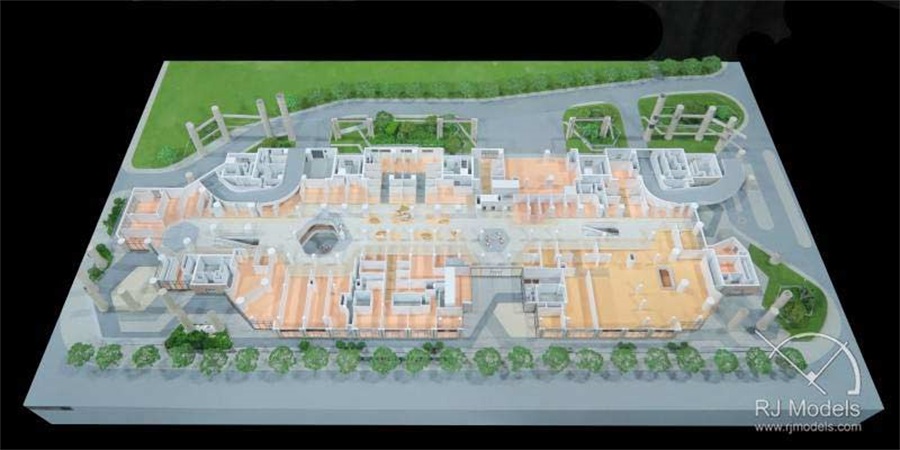
1:50 Scale Layout Model
Building Model
The most widely used scales for building models are1:100, 1:150, 1:200 and 1:300.
The balconies, windows and detailed building facades, etc can be shown at these scales.
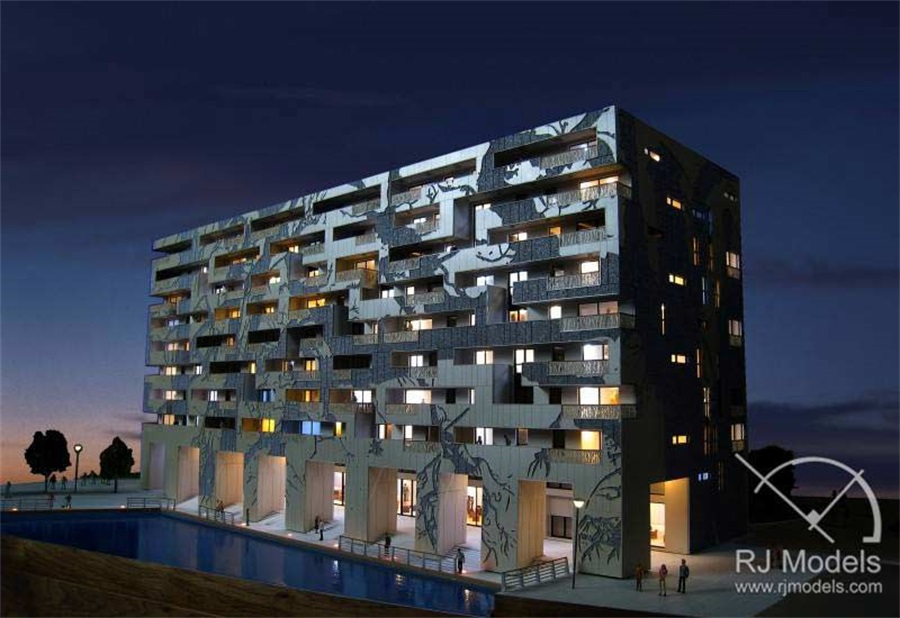
1:100 Scale Building Model
1:100 to 1:300 scales are widely used for making building models.
In these scale, the building facade can be well represented.
And if specific detailed elements of the building need to be shown, bigger scale will be a better choice.
1:300-1000, Building Model, Site Model
Building Model
Comparing to bigger scale building models, a 1:300 to 1:500 scale models give people a better understanding of how buildings fit to the site and the surroundings.
It also allows people to see the building floors and internal structure.
Building models are very authentic representations displayed in the reception area for housing sales purpose.
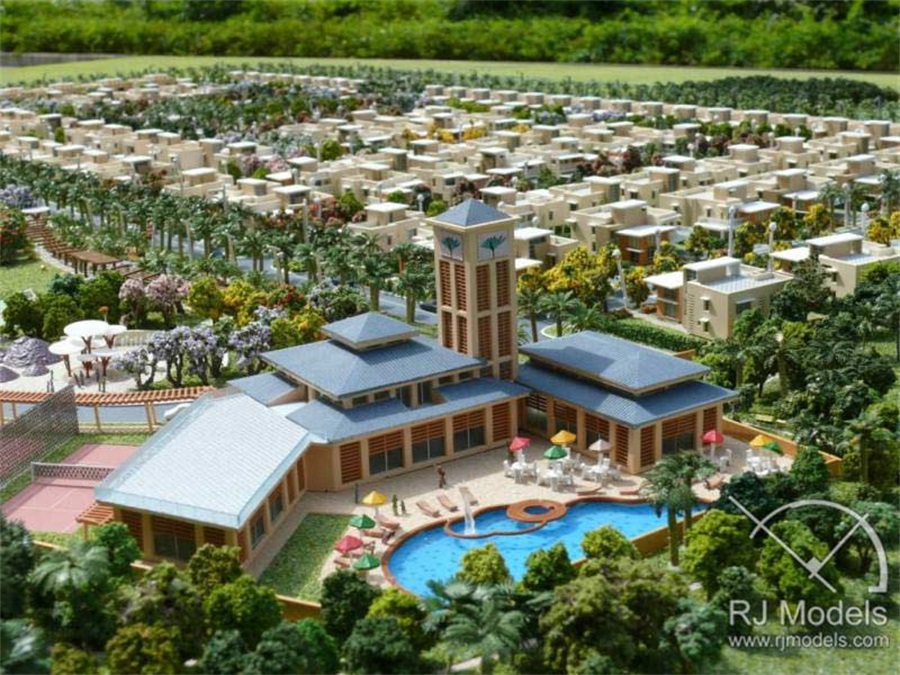
1:300 Scale Building Model
Site Model
Site architectural models are widely used for real estate fairs.
The most commonly used scale is 1:500 and 1:1000.
Site models are ideal for giving a perfect overview of the site layout at a recognizable level of detail.
1:500 or 1:1000 scale site model is portable and is widely used for exhibition.
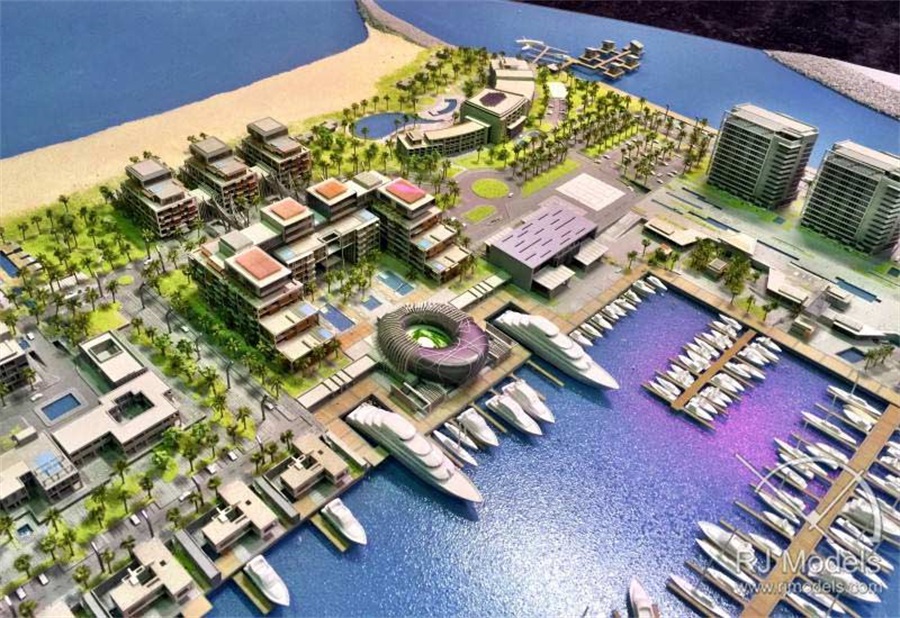
1:1000 Site Model
1:1000-5000, Site plans, City planning model, Island.
Site plans
For a particularly large site, a smaller scale architectural model is needed.
The primary purpose of a site plan model is to represent the essential idea of the design.
Another use of site plan model is to show the relationship between the project’s site and its surroundings.
Comparing to larger scale models, small scale architectural model is much faster and easier to make.
Site plan model with scale of 1:2500 to 1:5000 contains massing representing buildings, road network, greening, water areas as well as other surrounding elements.
By showing the overall design concept and the relationship of the existing and new construction, site plan model is a common illustrative tool for attracting investments.
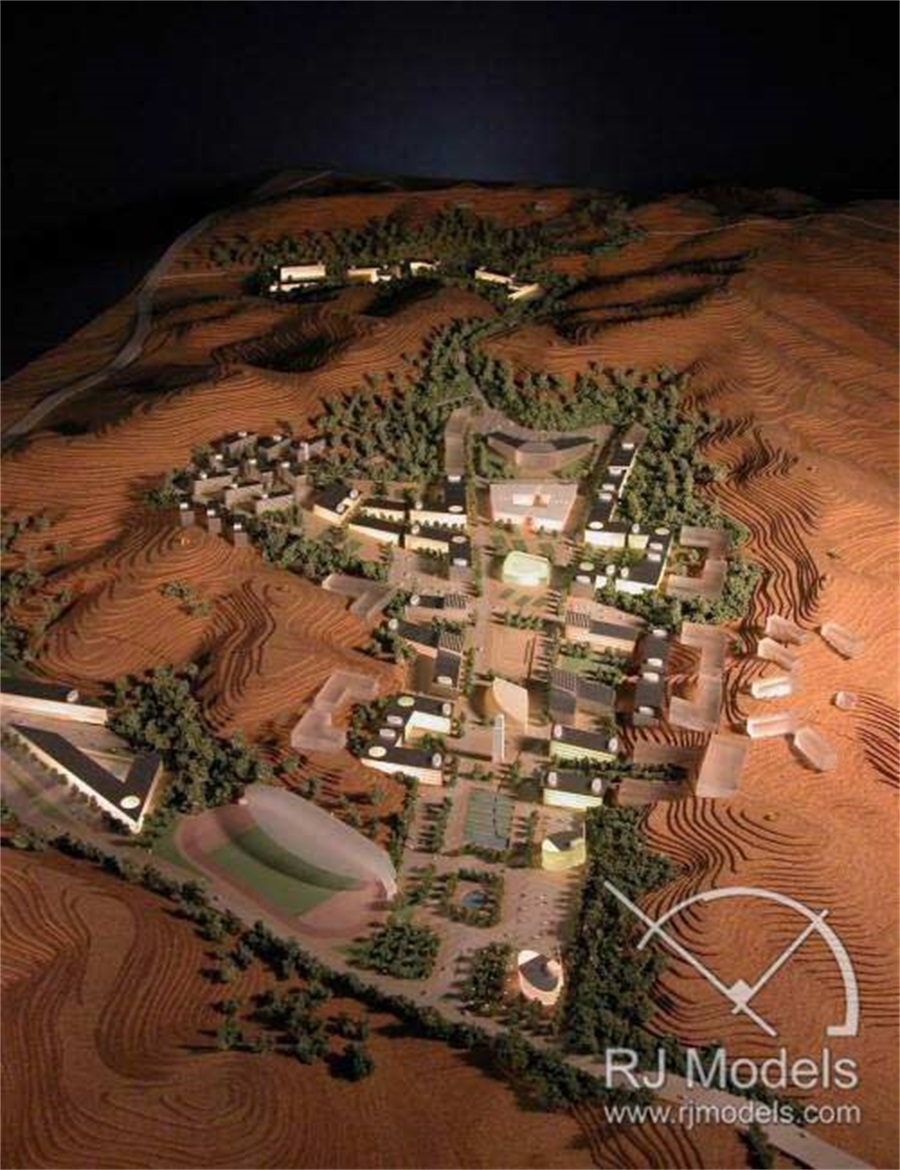
1:1000 Site Plan Model
City planning model
City planning model is usually made in really small scale to represent the development plan or history of a city.
Local governments use city models to present the new planning proposals or infrastructure to the public.
The most widely used scales for city planning model are1:1000 to1:3000.
The amount of detail that can be viewed is limited since buildings of the architectural model are always fabricated as massing blocks.
By installing illumination systems to the city planning model, key sites such as new development zones can be highlighted.
Island scale model
The emphasis of island model is on the relationships of the existing natural environment and the addition new structures.
Island scale models are used for architecture model exhibition in most cases.
LED lighting helps to highlight the special sites of the island.
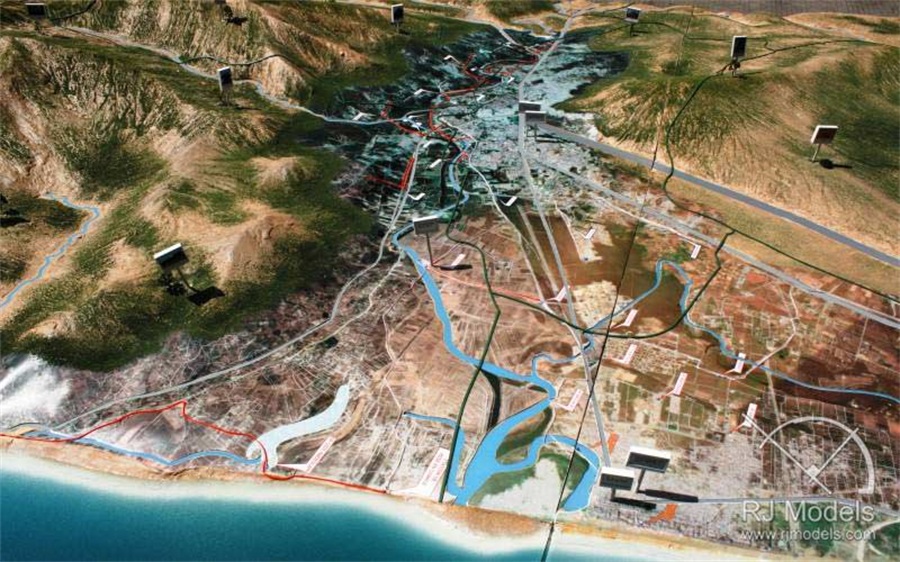
1:5000 Scale Island Model
C5.6:Conclusion
There are several tradeoffs in choosing the appropriate scale of architectural models.
The amount of details client want to show and the purpose of exhibition are two key affecting factors.
Others like the budget, the deadline, the mobility and the functionality of architectural models are equally important.
Having a well understanding of model scale will offers a very clear demonstration of the architectural projects.
CHAPTER 6:
Interactive Architectural Model Display Techniques

C6.1:Introduction
Interactive architectural model is an ideal tool to represent architects’ design concept and project development.
It is also a fresh and interesting model display option in the exhibition like real estate sales center.
At present, interactive architectural model is becoming more and more popular since interactive element to an architectural model can provide the viewers a more impressive presentation.
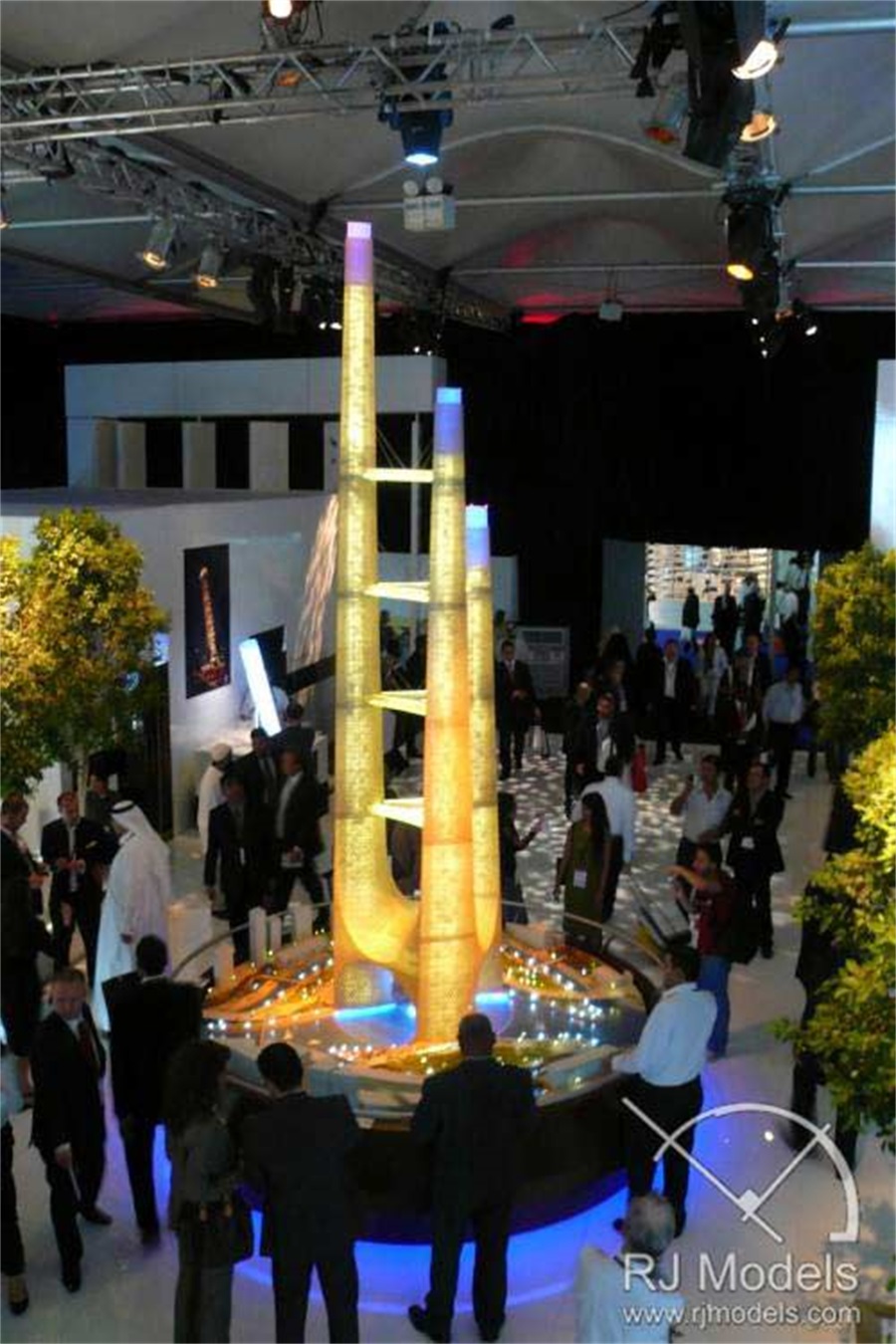
The interaction with the architectural models creates a better communication between the audiences and the projects.
Generally, an integrated interactive model display consists of a traditional physical architectural model, a computer and supported software, a variety of control panels or interactive media walls surrounded.
C6.2:Lighting Control
Illuminating specific areas of the architectural models can add extra visual effects by it.
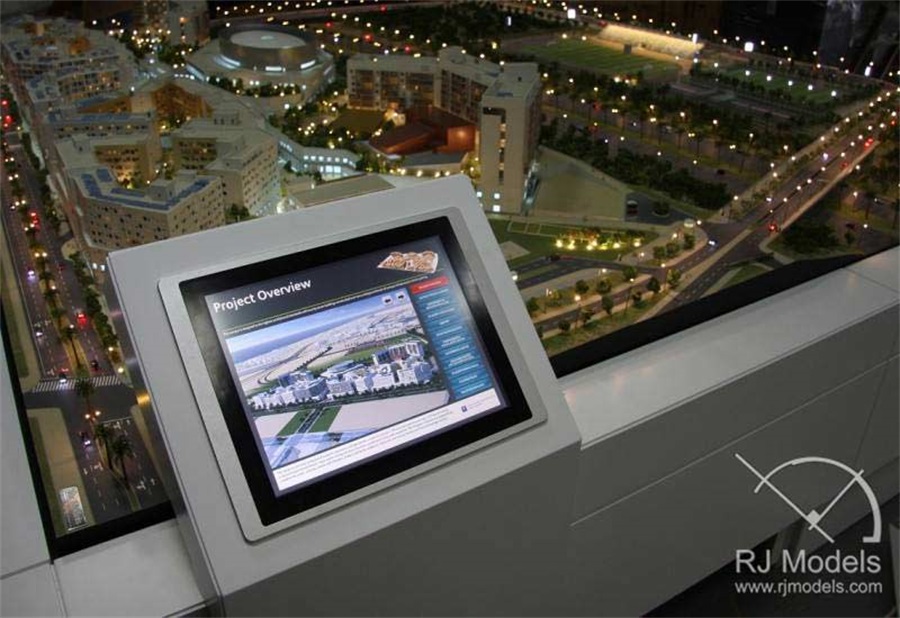
The illumination system can be operated via a wide range of equipments.
Only by clicking a button or a touch of a tablet, selected areas on the architectural model can be lighted up with color while others are remain turned off.
The following are 3 typical ways to control the lighting system of architectural models.
C6.2.1: Control Station
Adding interaction of lights in the model can highlight the significant features of a model.
Operating by push button control systems, control station like inspire control station and heritage control station is extensively used to control the lights.
Lights of architectural models can be activated by certain labeled buttons or the combinations of buttons and faders.
Under most circumstance, a control station contains several independent light systems which can light up different zones of the presented model.
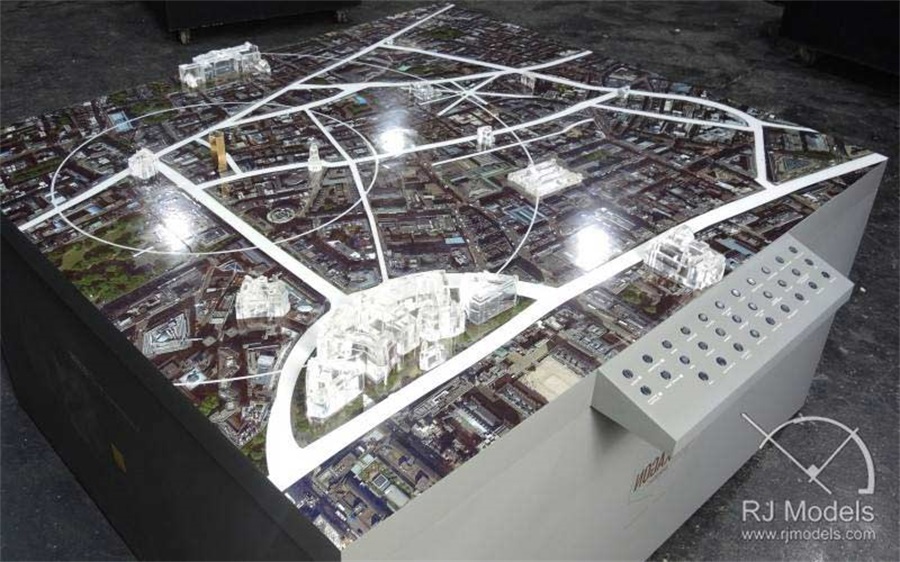
Lighting effects controlled via a control station
Control station has a relatively affordable and low price.
It can be conveniently located in public areas such as Science and Technology Museum.
Also, control station is more durable for public interaction for its simple operational processes and inexpensive maintenance costs.
C6.2.2: Control Pane
Surface-mounted or rack-mounted touch screen is the most common used control panel to flash or off, bright or dim multiple lighting zones of architectural models.
In the architectural model market, a wide range of touch screens are produced to adapt to customers’ requirements.
Touch screen provides a better user-experience than control stations.
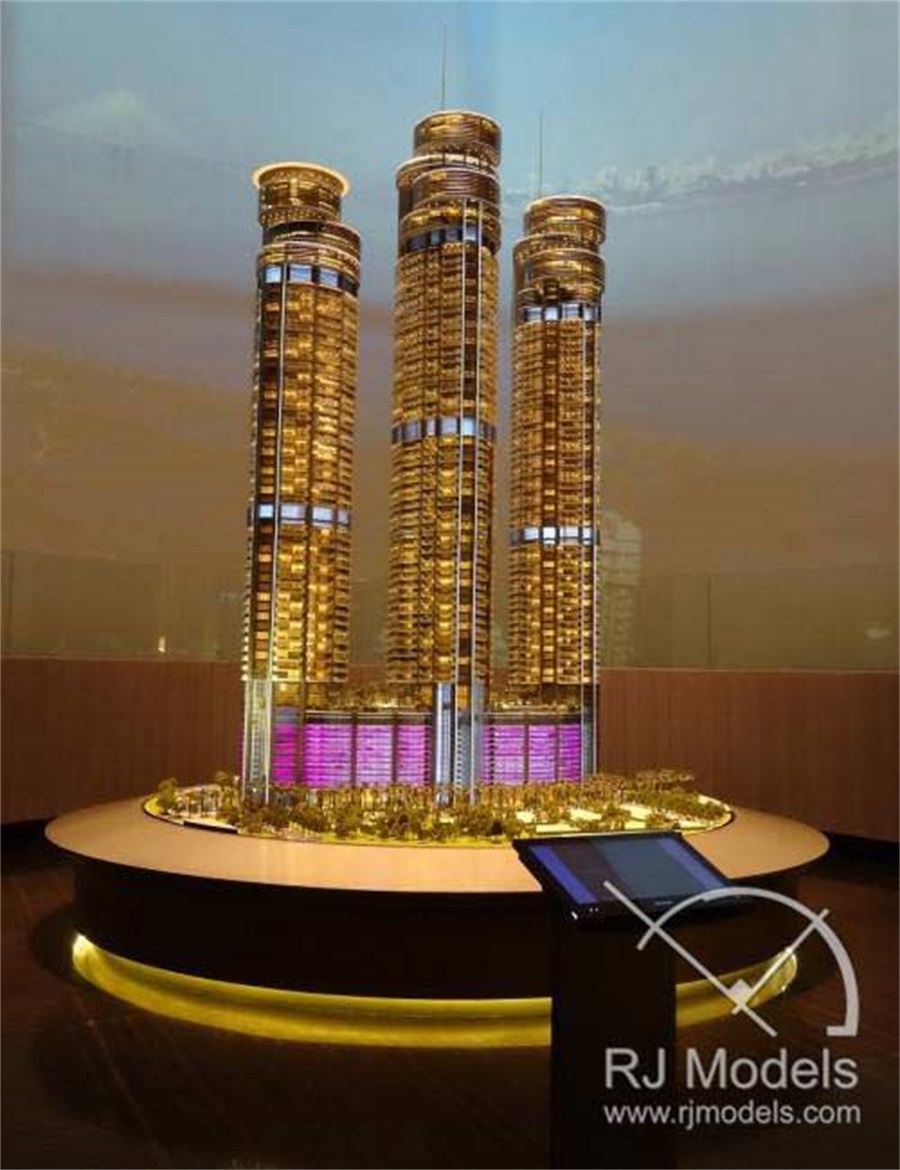
Lighting system controlled via an interactive touch screen for Omkar Worli 1973 model in 1:75
Control panel comprises a variety of control elements and is supported by Ethernet network like Link Connect.
The users can easily manage the lighting systems only by taping the screen.
Individual parts of the architectural models can be illuminated separately or simultaneously.
In general, the control panel is linked to the physical model with LEDs.
The architectural model can be pop up, flash, pulsate or rotate when the users pressing the button in the control panel interface.
Control panel always comes with a tabletop stand.
The operation of a control panel is based on wide and varied digital servers such as Unison Paradigm Central Control Server.
What’s more, other functions like rotating the architectural models can also be realized through the tapping of the panel.
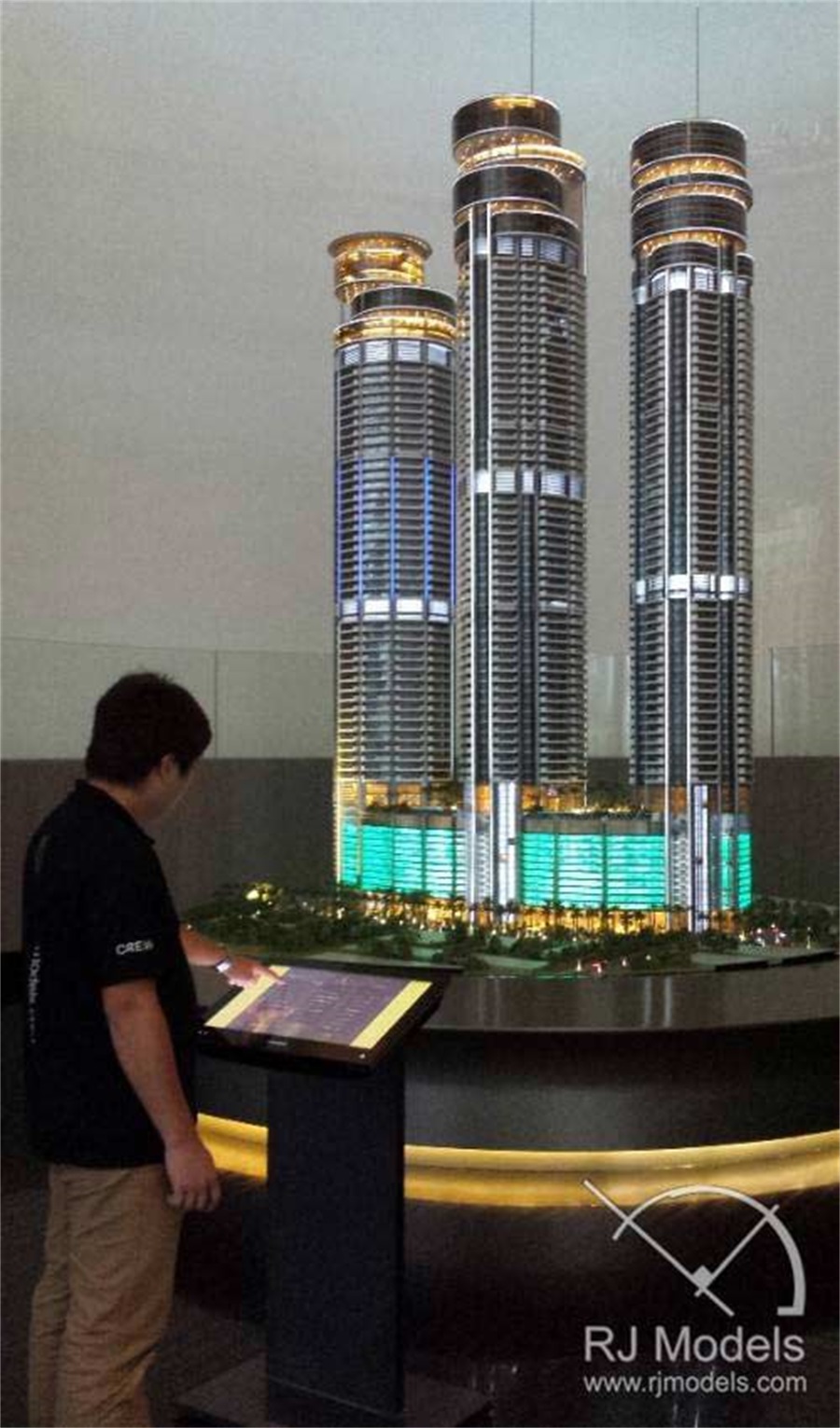
Detailed information like drawings, architectural rendering, video and animations of the project can be played when the users touching the related options on the control panel.
Nowsadays, control panel is used extensively in sales office and exhibition centers to interact with potential investors or housing buyers.
C6.2.3: Tablet, Smart-phone and Gesture
Taking physical architectural model as the base, using mobile device such as iPAD to control the lighting, ambience and interaction of the model is becoming a popular trend.
Displaying the model via portable devices has a great mobility and flexibility.
And it is more convenient for the users to view the architectural model from various angles.
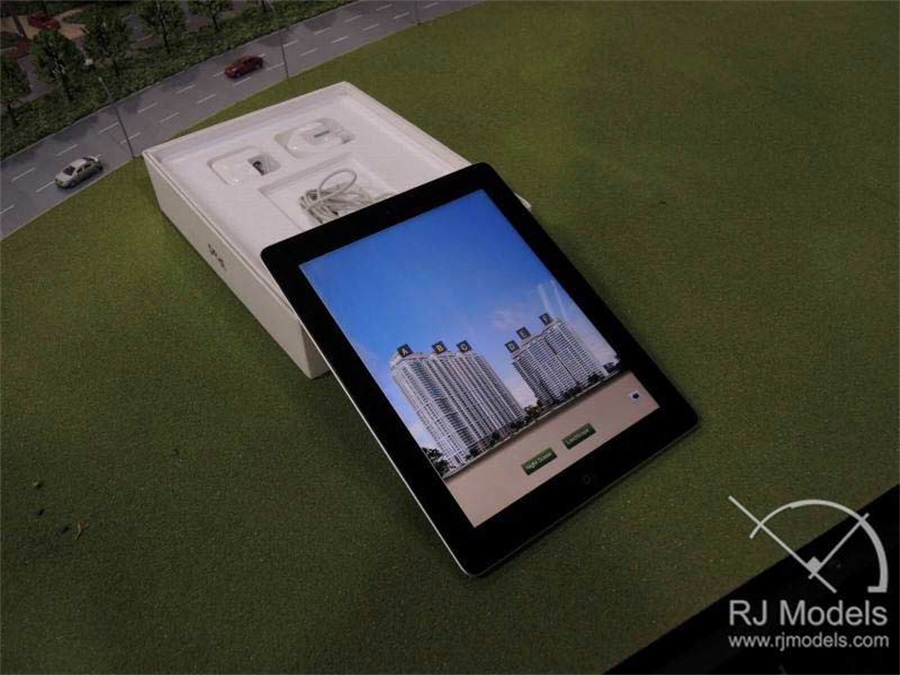
Model display controlled through an iPad
Physical gesture is another new coming interactive model presentation technique.
It helps the architects to demonstrate the design idea in a more engaging and highly attractive way.
Based on movement sensors positioned on the physical model and activated through gestures, users can explore architectural model via entertaining activities.
In the current increasing digital world, multiple cable or WIFI based lighting control system, software and apps (eg: LightSwarm and LinkConnect Portable jack) are designed to optimize the model display.
Portable model control devices should be easy to use and upgrade to enhance the interaction of architectural models at a greater level.
C6.3: Mechanically Operable Model Display
Static architectural model only shows limited aspects of the project.
Comparing to traditional architectural model, life and up model can better meet the construction markets demands.
Mechanically operable model represents the building design in a unique and impressive way.
It can give the architectural model a good level of detail from a range of angles for viewing.
Suzhou Centre architectural mechanically operable model
Mechanically operable model is made according to various customer demands and the spatial conditions of the exhibition place.
C6.3.1: Bottom-top Model Display
The lifting system is the key part of bottom-top model display.
A typical lifting system includes a scaled model, a lift installed at the base of the architectural model, digital control panel and a remote control.
Before the lifting equipment is manufactured, the architectural model maker should consider the weight of the scale model in the first place.
Adding a going up and down effect to the architectural model can bring a more vivid and lifelike model representation to the public.
The whole model display process can be accomplished by rising and lowering the model dynamically.
Model operating staff can control the lifting height via remote control.
C6.3.2: Parted in the Middle Model Display
The main goal of the parted in the middle model display is to give the architectural model a good level of detail of the interior design, decoration and other facilities.
Sliding system works as the core sector in the parted in the middle model display.
Parted in the middle model dynamic display
C6.3.3: Customized Model Display
Customized lift up architectural model is required to meet various customer demands.
Adjustable components of architectural model can be manufactured, assembled and installed according to the clients’ needs.
C6.4: Projection and Wall Screen Display
Projection and wall screen display is used widely for architectural model in exhibition centers.
This advanced multimedia creates a new expression of the architectural design.
Istanbul Big City Planning Model in scale 1:1000 projection display
C6.4.1: System Composition and Operation
Projection and wall screen display is based on the physical architectural model.
It is supported by touch screen integrated machine, lighting control system and multimedia software, etc.
In order to create a perfect illustration of the architectural model, projector with different accuracy is required according to specific requirements.
Projection and wall screen display integrates multiple elements includes images, animation, project description and music.
Multimedia interpretation plays a leading role in the architectural model display.
After installing several cameras in the physical model, information and images of the architectural model can be appeared on the screen synchronized with the playing multimedia.
Usually, there are three basic kinds of demonstration system:
Automatic demonstration system
Automatic demonstration system is controlled by computer and operated through a series of software.
Without any public participation, this system is an ideal option for exhibitions with large number of visitors.
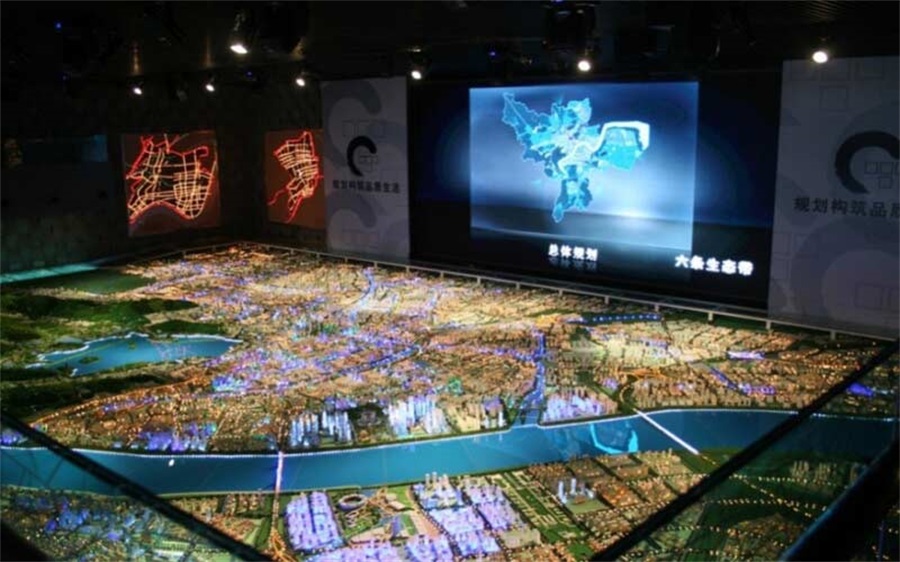
Automatic multimedia model display (Image from internet)
Remote control demonstration system
Equipped with telecontrol system, the demonstration system can be easily operated in any corner for architectural model of the exhibition hall.
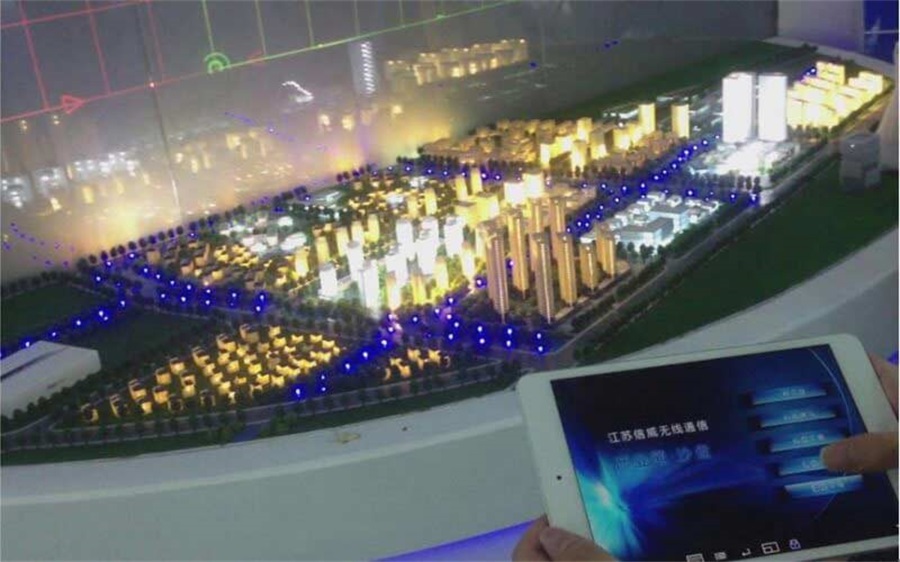
Remote control multimedia model display (Image from internet)
Manual demonstration system
Manual demonstration system allows the visitors to take fully part in the architectural model display activities.
As the user touch the device like fixed touch screen, the model is lit from above by projectors while the media wall responds to their interactions.
This kind of system is well-suited for the small scale exhibitions or house selling events.
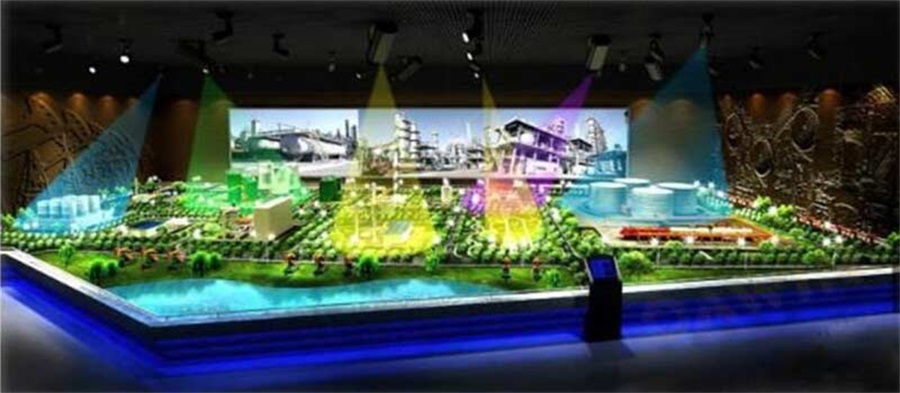
Manual control multimedia model display (Image from internet)
C6.4.2: Functionality and Benefits
Artistic and Vivid Demonstration
Wall screen and projection are commonly used to play animations or project images to help the viewers to visualize and understand the design idea or the future development of a project.
And it is also an eye-catching way to tell the story of the presented project.
The use of wall screen and projection allows the users to switch different views or see the project at day and night while specific areas are selected.
Real Estate Sales Tool
Incorporating with physical architectural models, wall screen and projection can assist the developers to generate more potential sales and investment opportunities.
C6.5: Conclusion
Interactive architectural model can provide the visitors a much more engaging and informative model exploring experience.
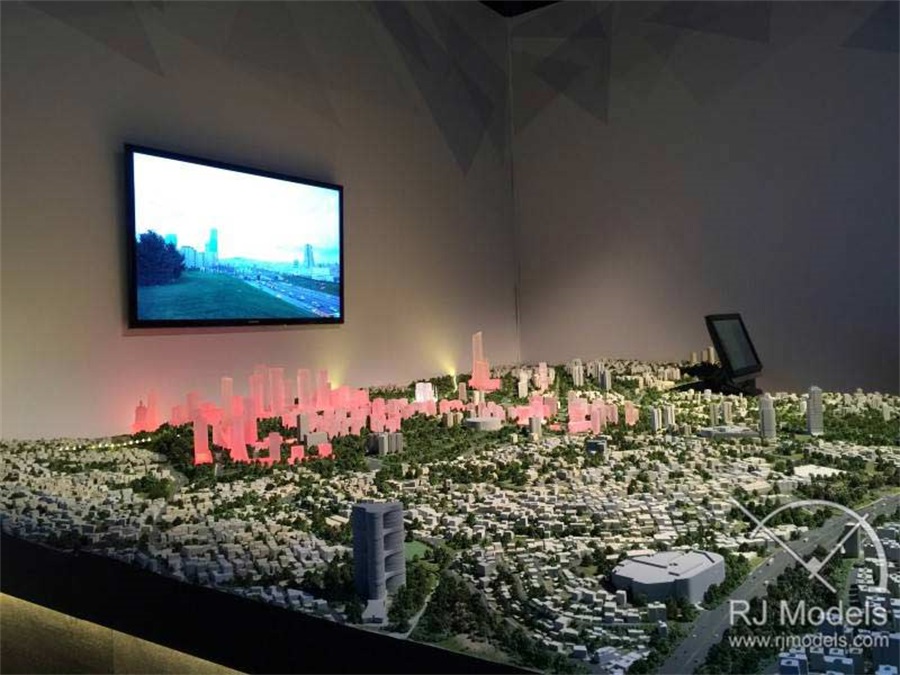
Using varied interactive technologies to represent an architectural model can enhance the impact of a design.
Interactive architectural model is also an ideal and sophisticated marketing tool for the real estate developers to attract potential investors or homebuyers.
Interactive architectural model display technique develops a new visual language to interpret design ideas.
CHAPTER 7:
Architectural Model Maintenance

C7.1: Introduction
Architectural models will become more fragile with the time for numbers of reasons.
The conditions of the exhibition sites, the natural decay, the use and the transport of the models, are the main factors.
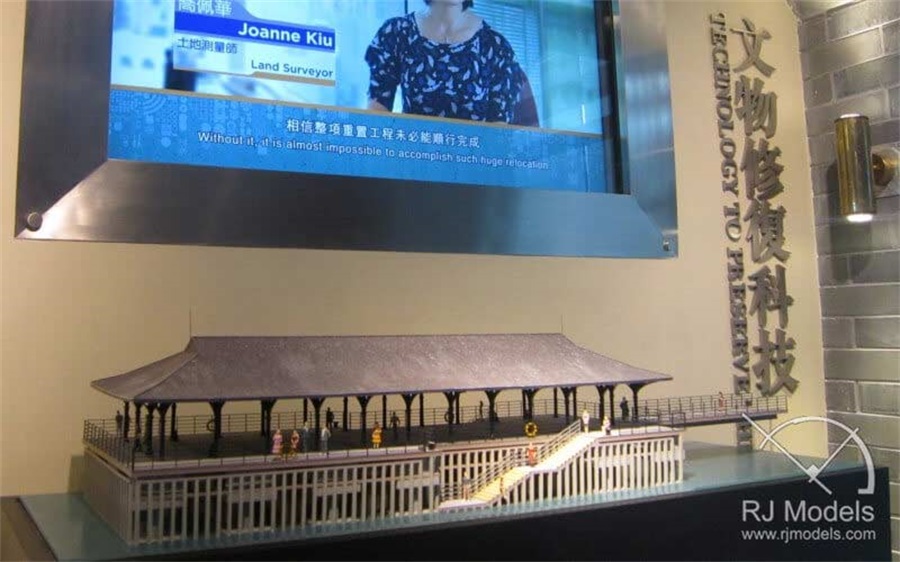
Architectural model maintenance work is especially vital to ensure that architectural models will survive for the enjoyment of future visitors.
Knowing architectural models maintenance techniques like how to transit, display and store models will add a certain number of years to the life of the models.
C7.2: Architectural Model Maintenance
Each architectural model is unique and has its own model maintenance issues.
Before making the model maintenance plan and starting the maintenance works, the following questions need to be taken into consideration
What risks is the architectural model exposed to?
What maintaining practices are in place?
How often is the architectural model maintenance?
The following sections introduce several model maintenance tips which can help to carry on the architectural model maintenance works.
C7.2.1: Create a proper environment
Keeping architectural models in a consistent and appropriate environment is crucial.
Changes in temperature, pollution and the humidity of the environment will affect the use time of the architectural models.
And it will cause the deformation such as the cracking of the rooftop and the bulge of the turf.
Generally, the environment of the exhibit areas is affected by air ventilation systems, heating equipments, solar radiation and the number of visitors.
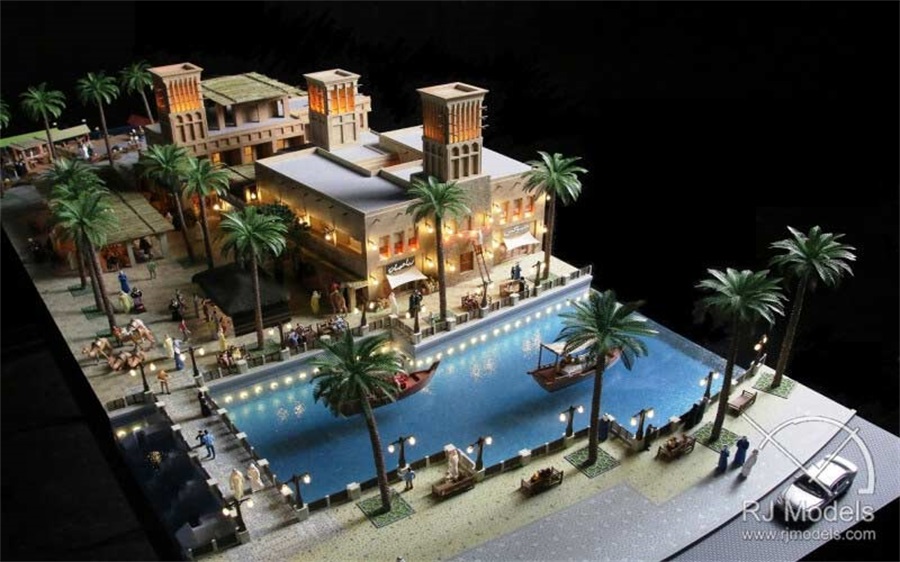
Create a stable and properly controlled environment of the exhibition hall is critical to the long-term maintenance procedure of architectural models.
The following are few measures help to set up an ideal environment.
Assign specialized staff to monitor the exhibit conditions.
Install humidity control equipments as needed.
Humidity level of approximately 30–80% is an ideal choice.
Control the temperature in a medium and compatible level
Because architectural models are made of different materials which can withstand varies of temperatures, a steady temperature around 5 to 35 degrees is recommended.
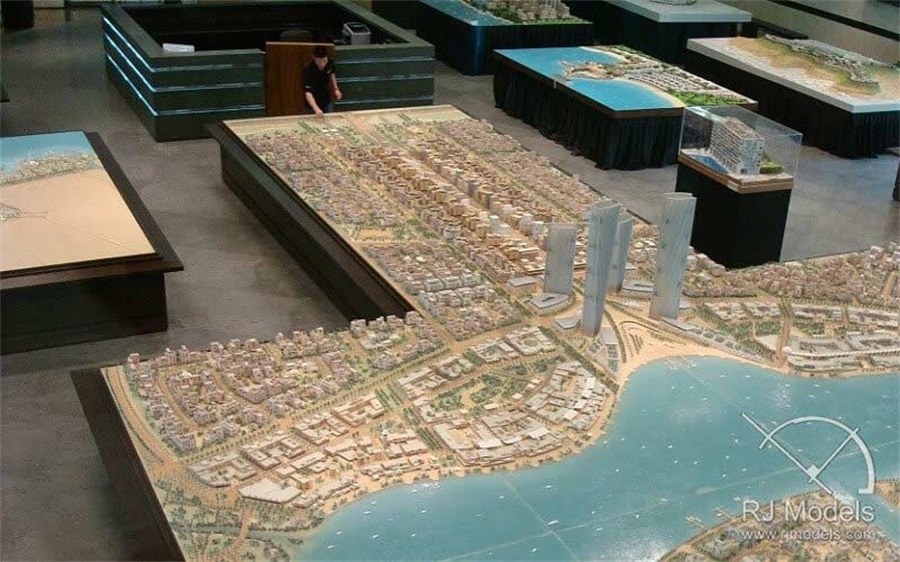
Avoid placing architectural models near fireplaces and smoking areas, or overexposing to the sun can reduce the negative effects of high temperature.
Apply pollution control system
Pollutants like particle and gaseous pollutants will harm the architectural models.
It is essential to minimize the models’ exposure to the pollutants.
General housekeeping activities like cleaning the windows, floors, especially the architectural model display stand and showcase can reduce the air pollutants.
Assessing the air quality within the exhibition hall is also necessary.
Adequate ventilation can lower pollutant concentrations.
It is important to make sure the displaying area is well ventilated.
This can be done by incorporating air filtration equipment in the exhibit areas.
Using multi-functional sensors for air pollutants are helpful as well.
Prevent pest infestation
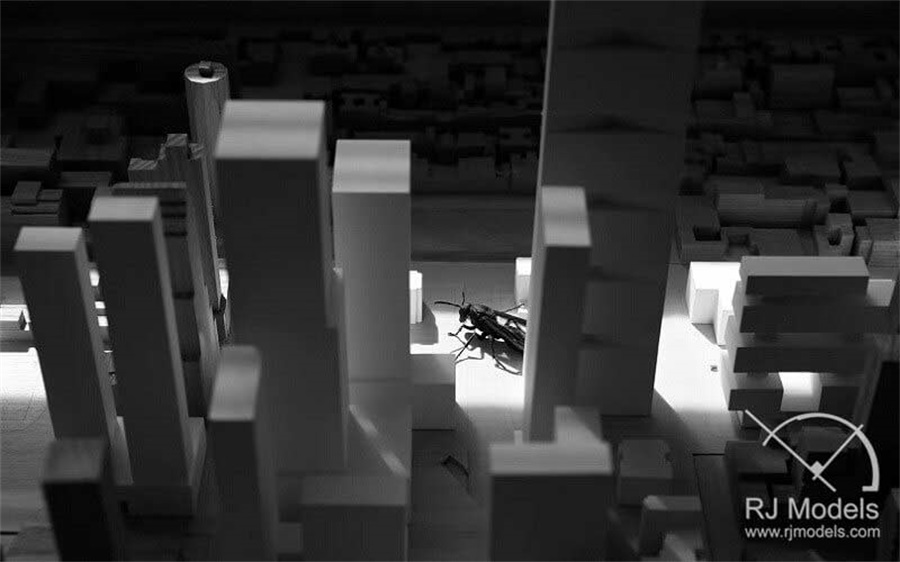
Pests can create big trouble for architectural models.
Keep an appropriate temperature and relative humidity levels can reduce the pest activity and mold growth.
Moreover, regular monitoring for pests can discourage insect activities.
C7.2.2: Install and monitor appropriate lighting
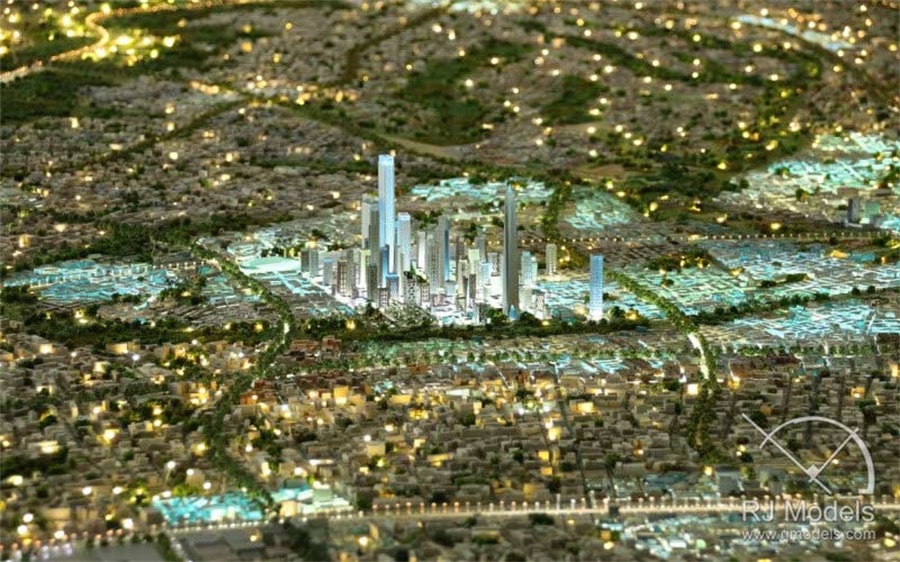
The lights of architectural models can improve the display effect of the models.
However, exposure to light will cause the color of the model surface to fade and change.
Reducing the harmful effects of visible light, UV light and infrared radiation is important.
UV light is usually coming from fluorescent lamps and natural daylight.
Eliminate the sources of natural light by covering windows with shades are helpful.
For the fluorescent lights, install UV filters on the bulbs can help to reduce the amount of UV exposure.
In order to reduce the harmful effects of visible light, the lights of architectural models need to be turned off at least once every 8 hours.
Make sure the lights are off at closing time.
Monitor and control light levels of the installed light fixtures of the architectural models to reduce the negative effect of lights as well.
Ventilate the lighting switch box to dissipate heat from light fixtures.
The use of electric fans may be a good choice.
The lights of architectural models can improve the display effect of the models.
C7.2.3: Keep the remote control properly
With the development of modern high technology, interactive architectural models which controlled by computer or remote control is becoming more and more popular.
In order to extend the usage life of architectural models, not only the model itself, but also the control devices need safe keeping.
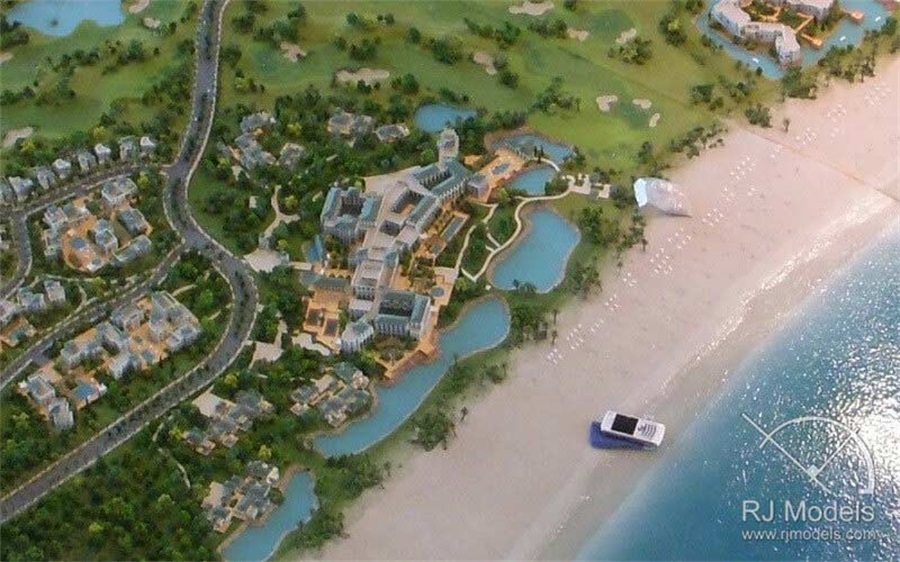
The control devices need safe keeping.
C7.2.4: Provide protection against visitor damage
Considering the vulnerability of architectural models, it is necessary to have additional security measures to protect the models.
Use notice board in the architectural models display area to remind visitors keep a certain distance away from the models.
Use protective hardware such as acrylic cover, glass shield or enclosed glass panels to protect architectural models.
Do not let the children touch the model to avoid electric shocks or other damage to the architectural models.
C7.2.5: Ensure enough storage of spare materials and components
Architectural models will have superficial damage, broken and loose parts as time goes by.
In some cases, model items like figure, tree, vehicle and furniture are missing during exhibition.
These missing pieces or moving parts need replacement sometimes.
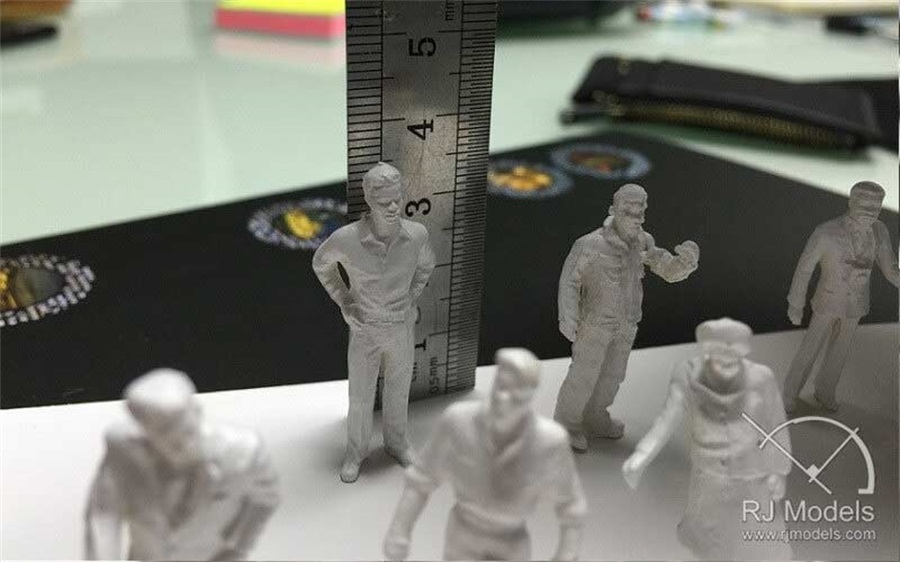
The ideal number of reserves can be 5% of the completed models.
C7.3: Architectural Model Cleaning
Cleaning job is especially important when architectural projects are taking longer and the model is in need of presentation for a long time.
Dry clean the architectural model surface
The architectural model surface can be cleaned with a clean towel, sponge and soft brushes to removes loose dirt and dust.
Architectural model without glass cover should be cleaned regularly.
Specialized dusting machine and vacuum cleaner are in need.
Some parts of architectural models need washing to remove the dust and blemishes. In this case, a mild detergent will be an ideal choice.
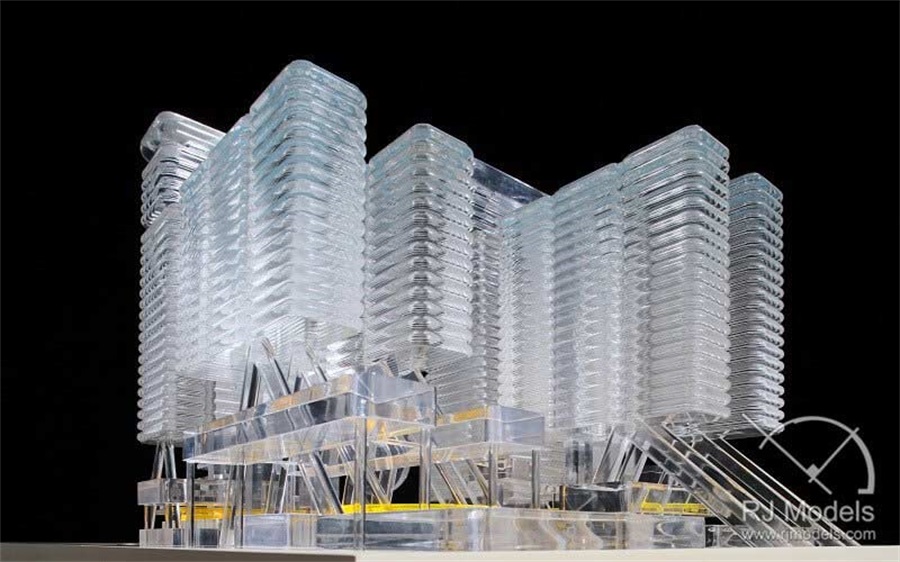
It is not simple to keep an architectural model dust free.
C7.4: Architectural Model Conservation
Architectural model needs proper conservation, so that the models will remain in good condition for future exhibition.
And under some circumstances, architectural models will be collected as important exhibition collections.
The following are some architectural model conservation techniques which may ensure the desired safety and stability of the models.
C7.4.1: Create a suitable storage environment
The model storage area should be separated from the exhibit or working areas. And it should be used to house architectural models only.
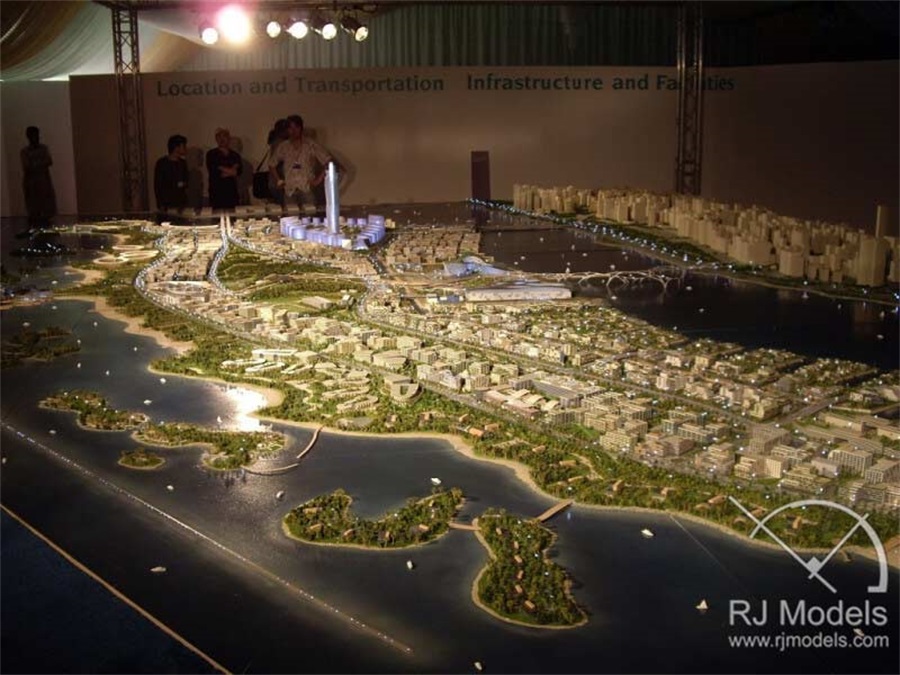
This area should have a constant environment where temperature and humidity levels are kept at recommended levels.
C7.4.2: Select an appropriate storage measure
Architectural model which requires long time conservation can be covered with acrylic or glass cover with an air tight seal.
These storage units should be able to protect the architectural models from sun fading, water damage, dust and pollutants accumulation and insect damage.
For the models only needs temporary preservation or models that cannot have a physical cover, use tissue paper, plastic film and fabric to cover will be a good choice.
Moreover, one thing should be kept in mind is that these covers need to be washed regularly.
C7.4.3: Choose a suitable storage location
Avoid placing architectural models on the ground to protect against unexpected risks like water damage.
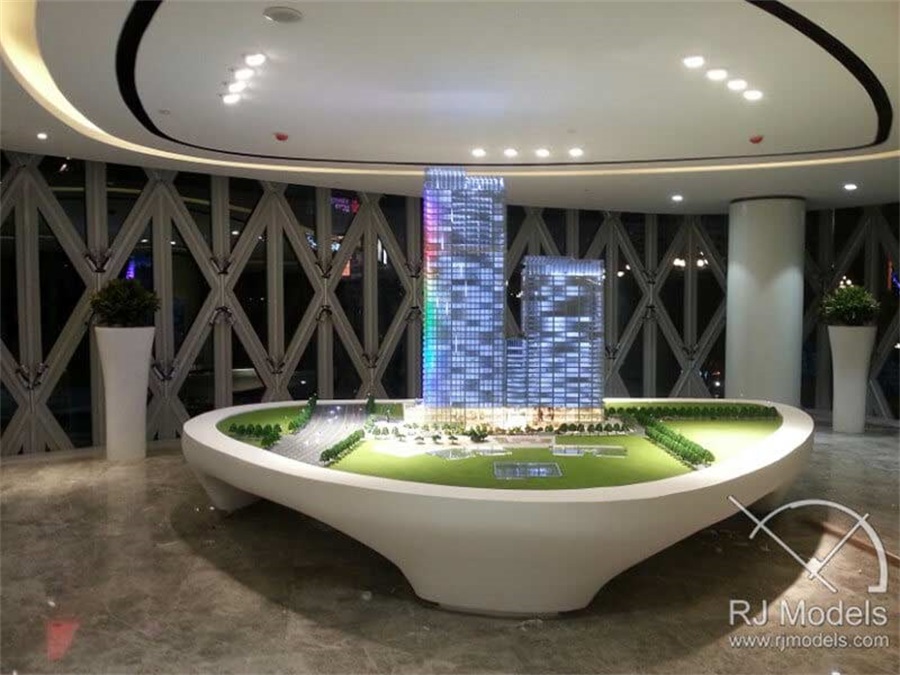
Similarly, do not put models close to windows, pipeline, mechanical and electrical equipment to avoid external damage.
C7.4.4: Inspect architectural model in storage periodically
Inspections should be carried on to check the condition of the architectural models.
This can help to notice the signs of deterioration and other damages like insect injury timely.
C7.5: Architectural Model Repair
Sometimes, architectural model pieces will missing or continue to deteriorate over time.
The replacement of missing items and repair work help to make sure that architectural model can survive for a longer time.
In most cases, model making company always employs specialist who has vast experience in different fields in architectural model repair service.
Missing architectural model items can be remanufactured by traditional hand craftsmanship together with high-tech model making approaches such as 3D laser cutting.
C7.6: Architectural Model Handling
Architectural model are at risk of damaging in transit or through inappropriate handling.
Specialist model packing, handling and transiting approaches during movement are listed as follows.
Hire professional cartage company to transport architectural models.
Carrier personnel with rich experience in lifting, supporting and handling architectural models are required.
Sometimes, vehicles equipped with shock absorption, temperature control and humidity control device are also in need if necessary.
Pack the architectural models with suitable materials carefully. Use polystyrene foam, paper, and corrugated cardboard to protect the models.
If the models need to be transited by rail, shock resistant and sturdy cases which can withstand wide climatic variations are required.
Ensure less shock and vibration when handling the architectural models.
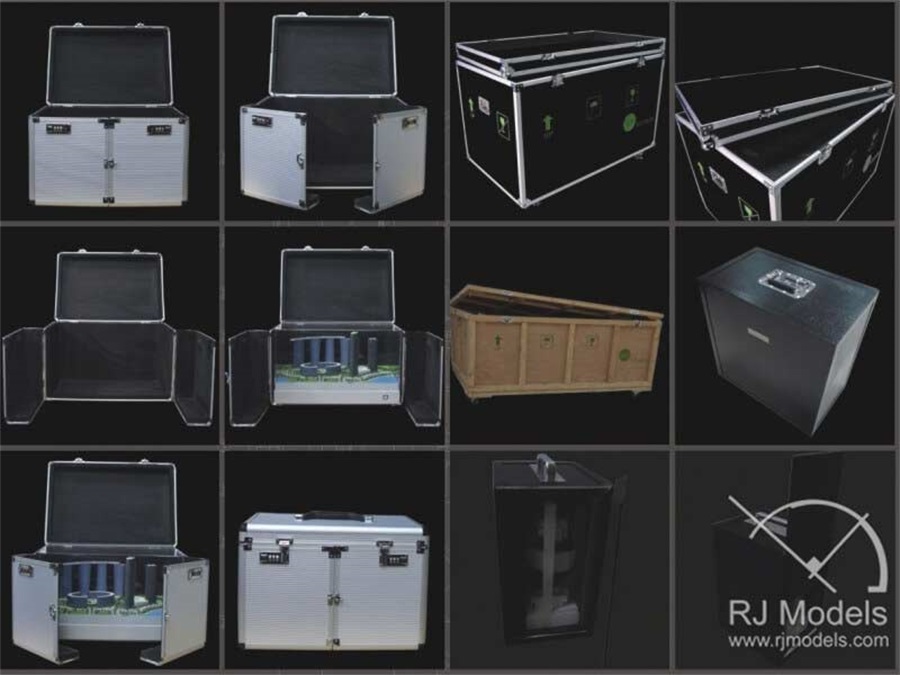
Anti-vibration packing case can help to reduce the risk of model breakages while transiting.
Control damage from handling via physical protections and appropriate handling techniques for architectural models.
For example, it is necessary for the porters to wear gloves to avoid deposition of hand oils on the model surface.
Use additional assistance or support underneath when handling heavy or large architectural models.
Choose a proper form of transportation.
Architectural models can be transited via air, road and rail, sea, or various combinations according to specific circumstances.
Choose a most appropriate mode of transport to keep the balance between expense and conservation.
For instance, small architectural models can be transited in passenger cars when need to be transited in short distance.
C7.7: Conclusion
To summarize, set up an appropriate maintenance schedule to keep the architectural model in great condition is very important.
The model maintenance measure varies from model to model according to the use and the condition of different architectural models.
The primary purpose of architectural model maintenance is to ensure that the models are stored or displayed in a suitable environment which will not cause them to deteriorate.
In addition, packing, moving, handling, general awareness of physical care of the architectural models are equally important when architectural model maintenance work is carried on.
CHAPTER 8:
Photography Equipment for Architectural Model Making

C 8.1: Introduction
In architectural model making, model photography has a significant role to play.
A good photograph helps smooth the progress, while poorly taken photos can mislead the audience thus preventing them from seeing the real quality of the scale model.
This chapter introduces the necessary equipment required in architectural model photography.
It touches on lighting, viewpoints, and the areas that need attention. Listed below are the equipment frequently used in architectural model photography.
C8.2.1: Digital SLR Camera
If you are a beginner in photography, we recommend using the fully automated “A” mode.
This means that the camera will adjust the aperture, the shutter speed, and the ISO automatically for you.
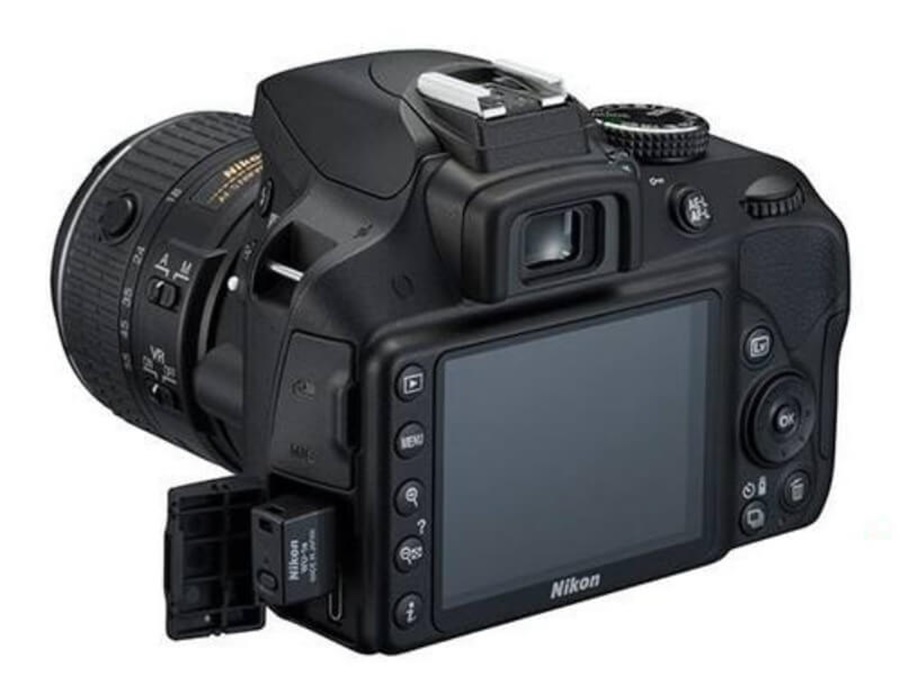
Digital SLR Camera
This is because the point of focus set with automatic focus may not be your expected focal point.
When taking a photo of your subject, press the shutter button down halfway.
When you hear a “beep” sound, fully press the shutter button to take the photo. This will ensure a clear picture.
After these, if you wish to improve your photography techniques further, you need to understand the relationship between aperture, shutter speed, and ISO and how a change in one of these elements necessitates a change in the others.
Then practice with different numerical values to achieve the desired visual effects you want to express through your photo.
C8.2.2: Fix-focus wide angle lens or 18-105 mm zoom lens
In digital SLR photography, there is often a need to change lens, and in architectural photography, the most common lens to use is the wide angle lens, so we suggest you equip yourself with one.

Fix-focus wide angle lens or 18-105 mm zoom lens
C8.2.3: Remote Shutter Release
A remote shutter release is an accessory that controls the camera shutter release without the need to touch the release button on the camera.
In an indoor photo shooting session, a longer exposure is often required.
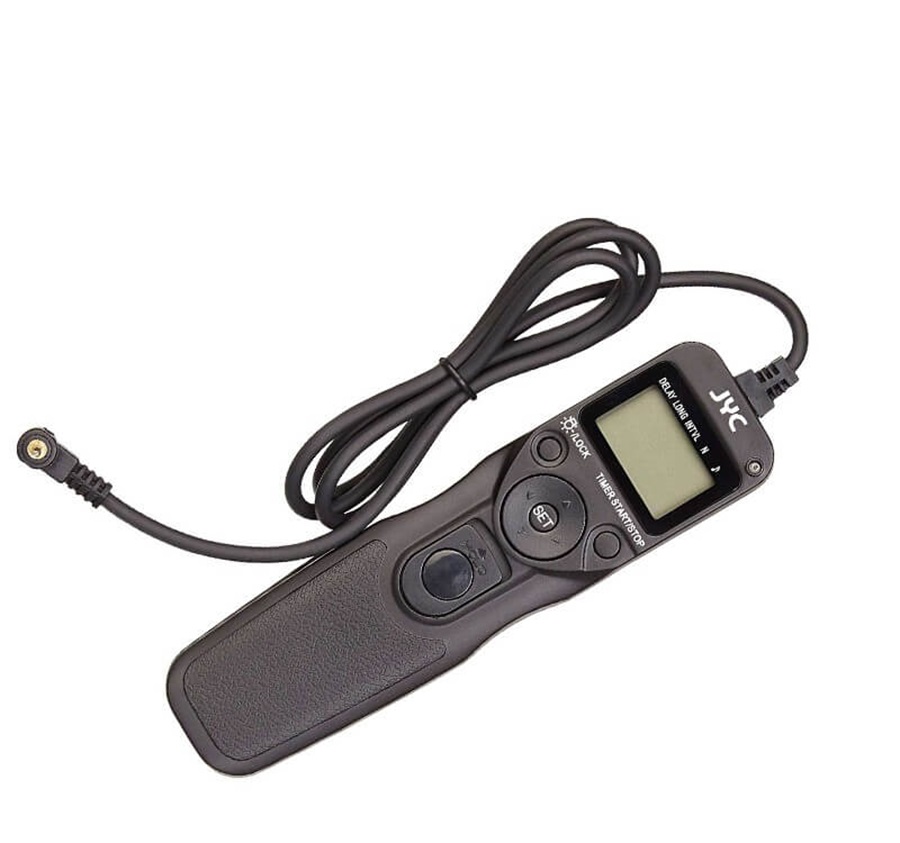
Remote Shutter Release
The remote shutter release stops the camera shaking caused by pressing the button during a long exposure and prevents a blurry photograph.
Hence, we recommend using a remote shutter release when photographing indoors.
C8.2.4: Memory Card
A memory card stores the digital photos taken by the digital SLR.
There are many different types of memory cards, but the most common one is an SD card, and in a digital camera, CF (Compact Flash) is often used.
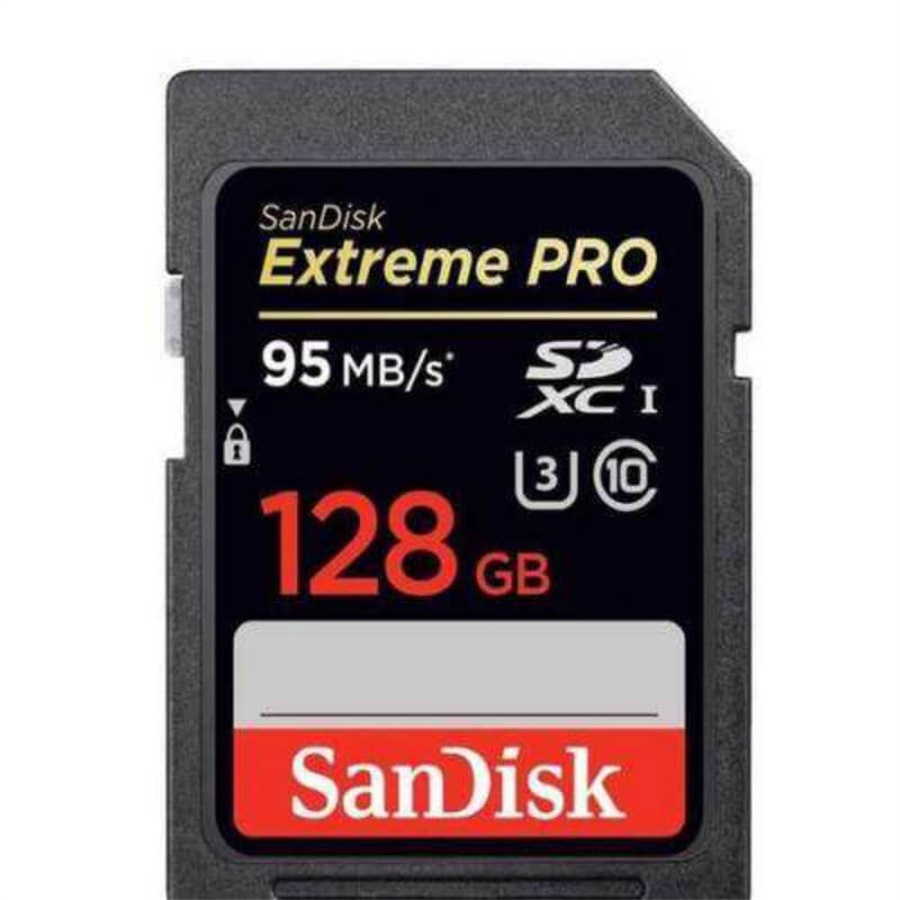
Memory Card
Memory cards come in an array of different storage capacities. As the photo resolution of the camera increases, the volume of data increases too.
Since the price of a memory card is steadily decreasing, we highly recommend getting a memory card with at least 1GB storage capacity.
C8.2.5: Memory card reader machine
A laptop frequently comes with a built-in memory card reader (CF card) while desktop computers do not.

Memory card reader machine
In such a case, you can purchase a card reader to connect to your desktop computer.
C8.2.6: Tripod
When photographing indoors, the absence of natural light results in slower shutter speeds.
If the camera is held manually, it can cause the camera to shake, as it is unlikely that our hands can keep still and give us a sharp picture.
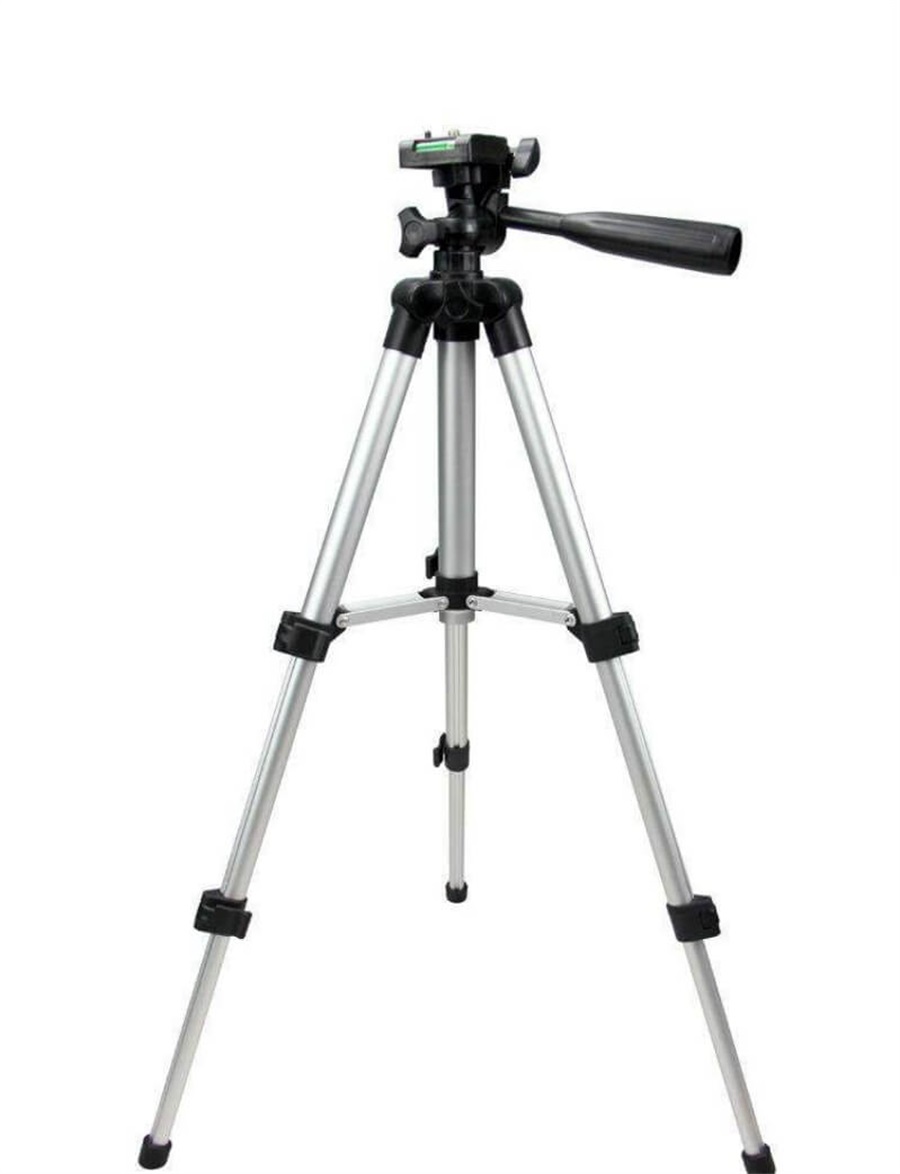
Tripod
Hence, a tripod is an indispensable tool to prevent camera shakes during long exposures as it keeps the camera still.
C8.2.7: Backdrop
This is the screen used as a background during photography. In architectural model photography, we usually use a black, blue or grey backdrop.
If you use a proper photography background screen or cloth, light reflection is lessened and, compared to paper where seams may show up, the screen is wider, providing a seamless background.
You can fix the backdrop to a wall using drafting tape, but a more convenient and practical option is to invest in a backdrop stand.
C8.2.8: Still life stand
A platform on which the subject to be photographed can be placed.
C8.2.9: Lighting equipment
Lighting equipment is a must-have in indoor photography, and there is a large variety of lighting equipment available in the market.
A soft box is made up of a black exterior cloth that prevents light reflecting back into the room, a translucent fabric to diffuse the light, a wire frame, and a light source.
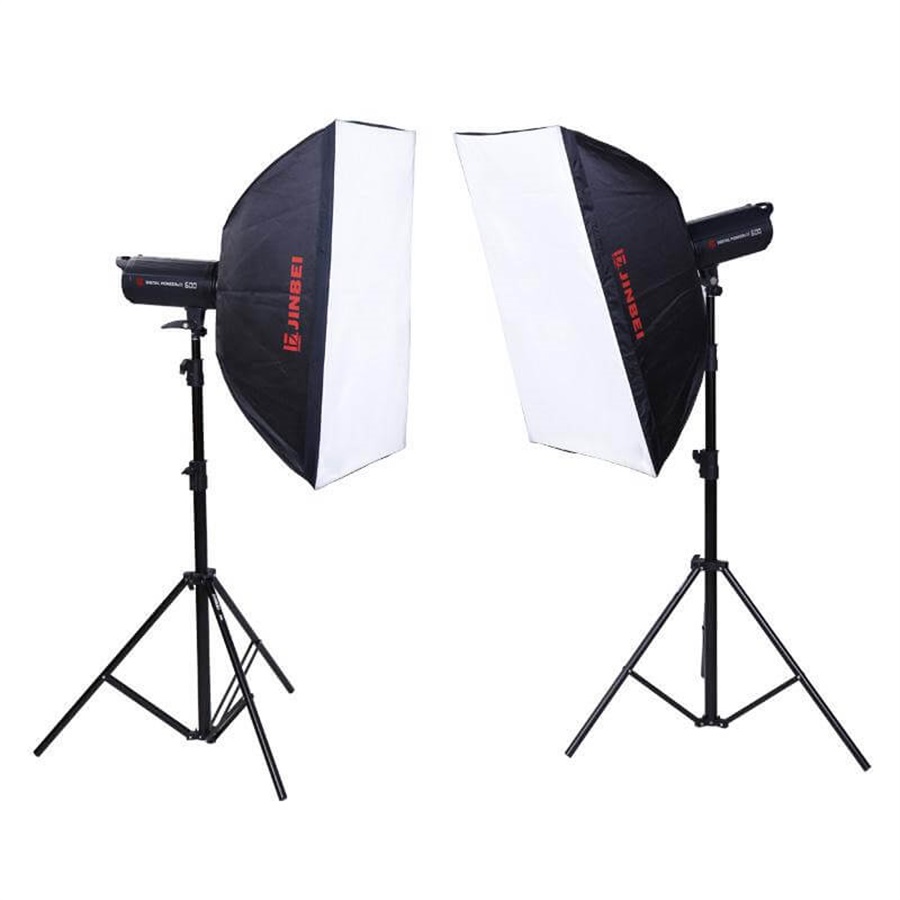
A soft box diffuses light to produce a softer light.
There are many other types of lighting equipment to choose from, and the kind of lighting equipment to use depends on the type of photo you want to take.
C8.2.10: Light reflector
When the light hits the reflector, it bounces off and redirects onto the model, further softening the light source. The light reflector can be replaced with a polystyrene foam board or foam paper.
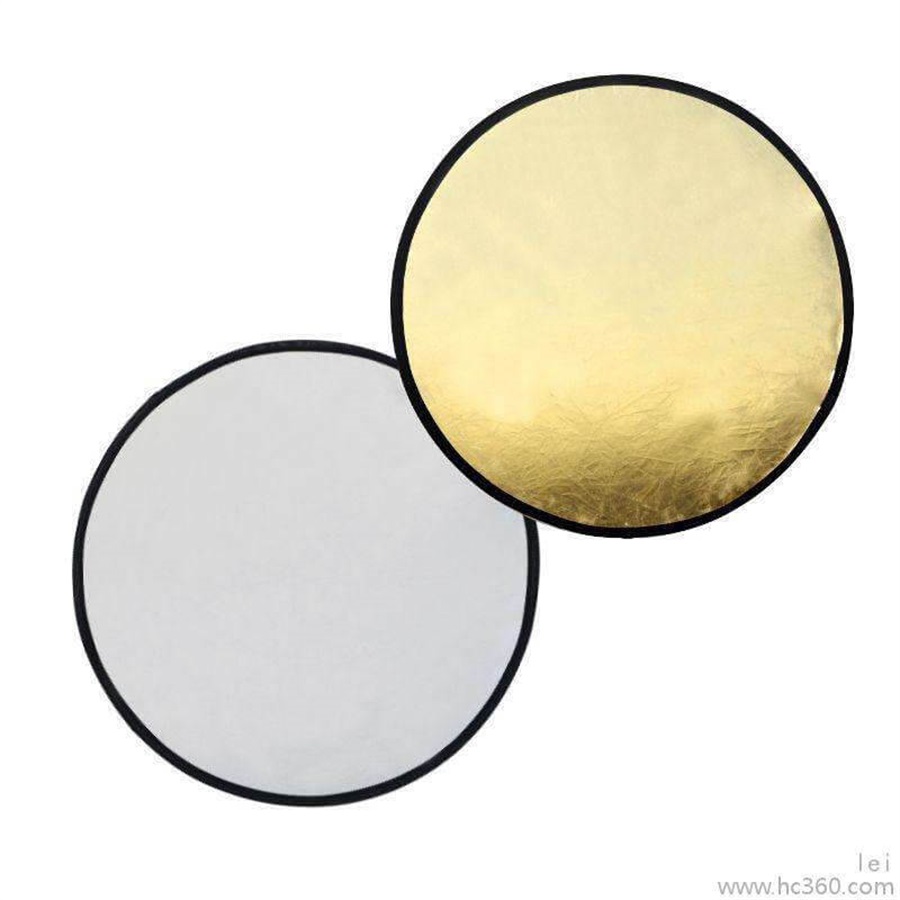
Light reflector
For practicality and convenience during use, we recommend investing in a light reflector stand. This way, we are not restricting the positioning of the reflector.
If there is a help to hold the reflector, a reflector stand is not necessary.
However, if you are working on your own, then a reflector stand is essential.
C8.3: Lighting
The easiest way to resolve the lighting issue with photography is to do your photo shoot outdoor where there is an abundance of natural light.
C8.3.1:
On the early morning or dusk of a cloudless sunny day, the position of the sun is low, attaining high contrast lighting, rendering a perfect shadow effect on the architectural model.
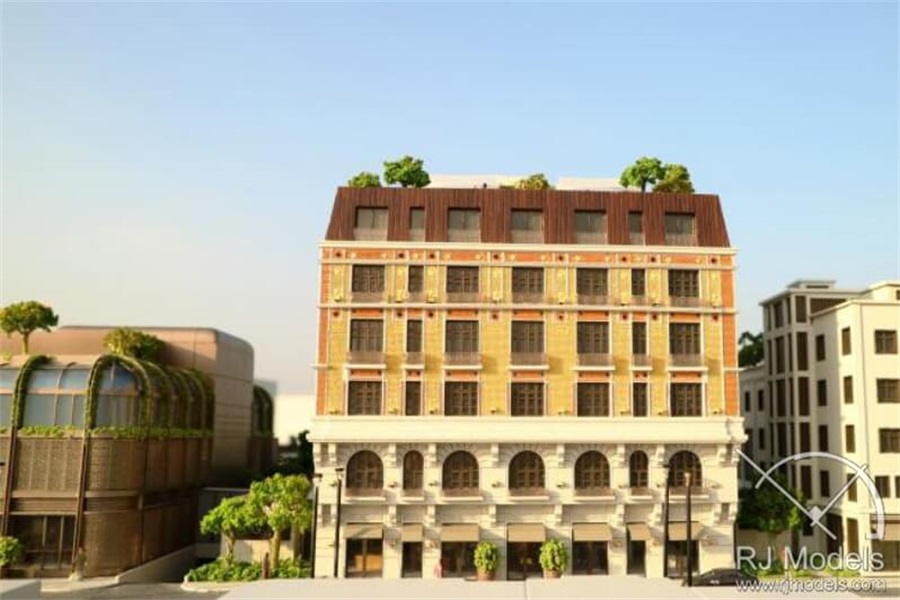
Photos taking of a model on the early morning
You can rotate the position of the architectural model and through the camera lens observe and experiment the different shadow effect on the model.
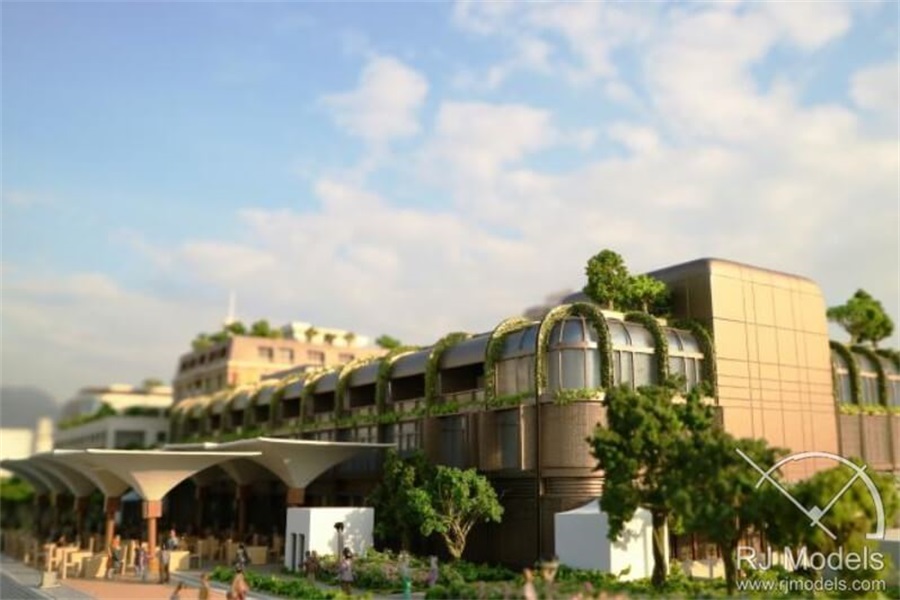
Photos taking of a model under sunset
We often photograph our model on the rooftop and in a particular position.
In doing so, we eliminate all other unrelated objects from the photo and the sky is used as the background for the photo.
C8.3.2:
High temperature can damage a model, so avoid shooting during a scorching day or midday.
C8.3.3:
During an indoor photo shoot, avoid the model casting more than two shadows.
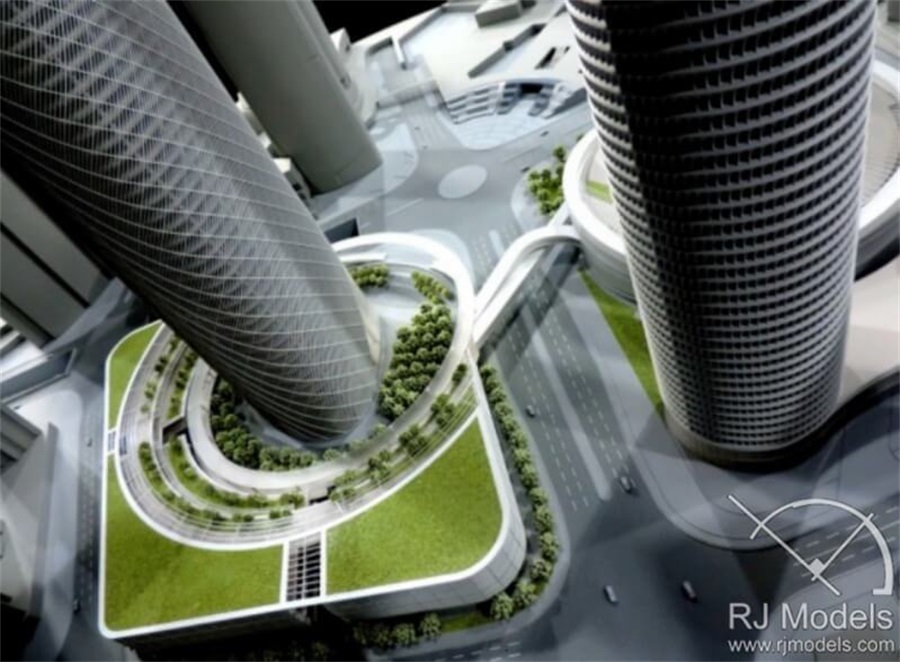
Avoiding the model casting more than two shadows
The scene created in a photo will appear unnatural to an audience if an architectural model cast too many shadows.
C8.4: Viewpoints
During architectural model photography, we usually take a few photos of the entire model including the front view and back view, and in daylight or as a night scene.
The rest of the photos are either various parts of the model or some tiny details.
We can photograph the architectural model using different angles depending on the thoughts we wish to express.
C8.4.1: shooting with a high viewpoint;
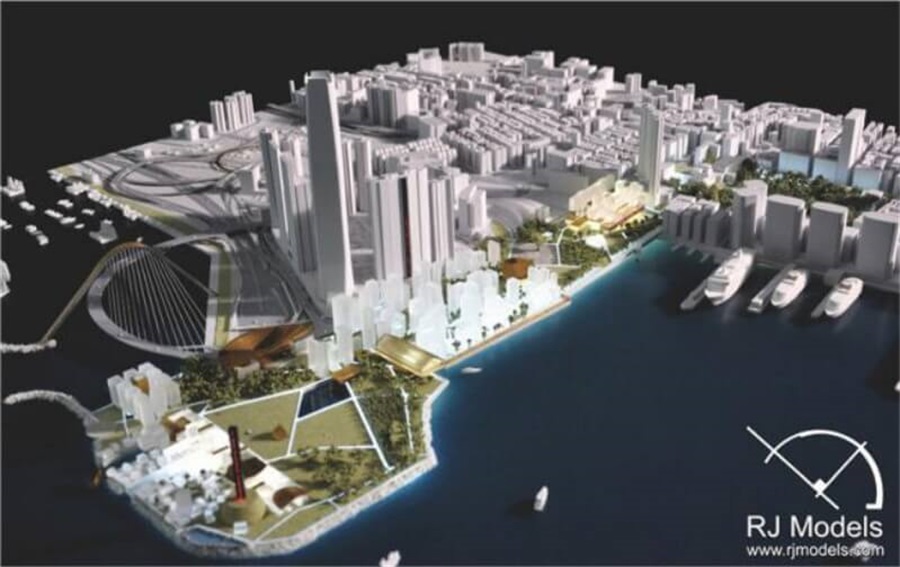
Allowing a full view of the architecture model
A bird’s eye view of the entire model allows the viewer to see and feel the whole structure of the architectural model.
C8.4.2: Shooting with a low viewpoint
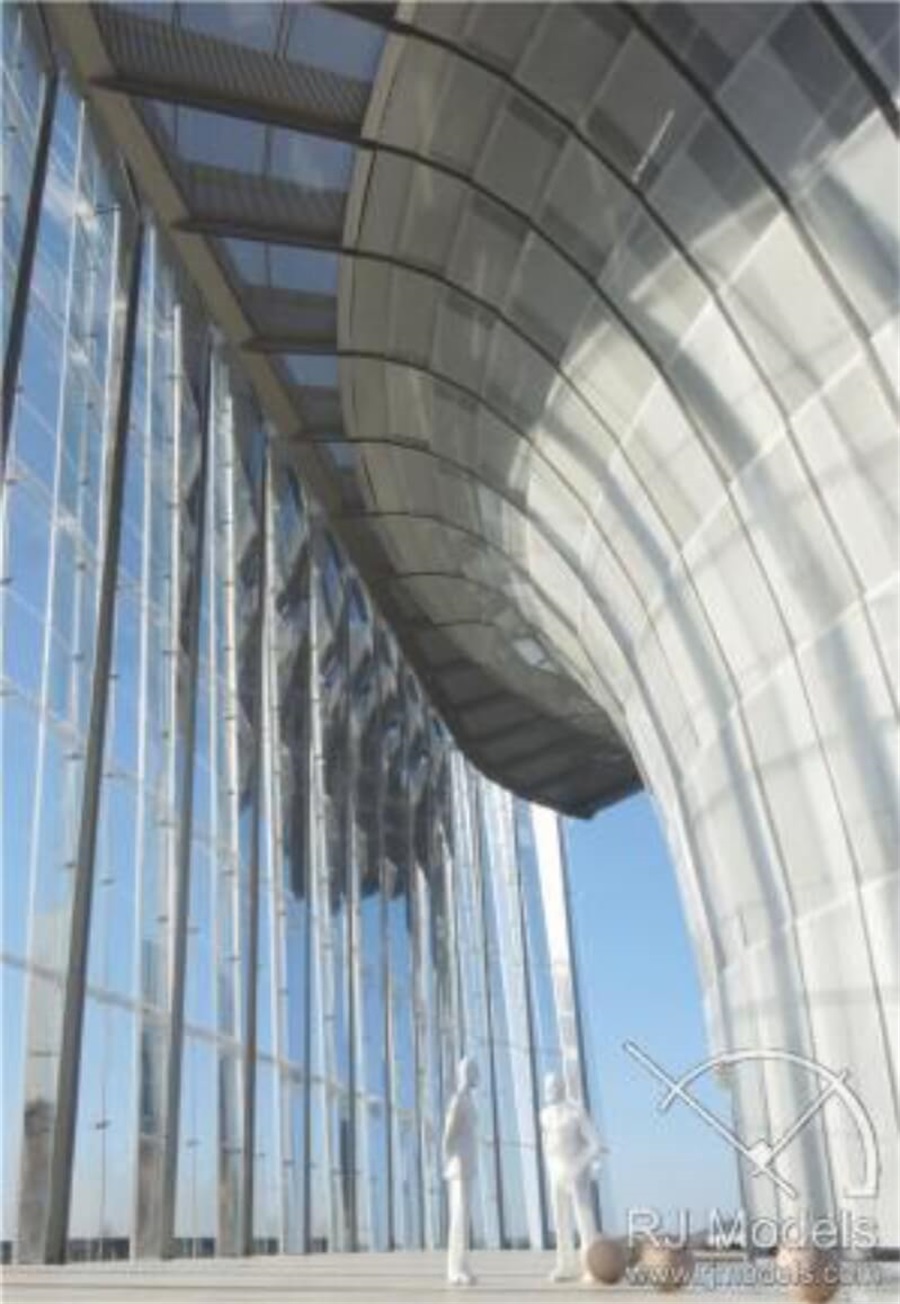
From a person’s perspective
When shooting a model interior using a low viewpoint, it gives the viewer the visual effects of standing on the ground looking up at a building.
C8.4.3: Shooting with Eye-level Viewpoint
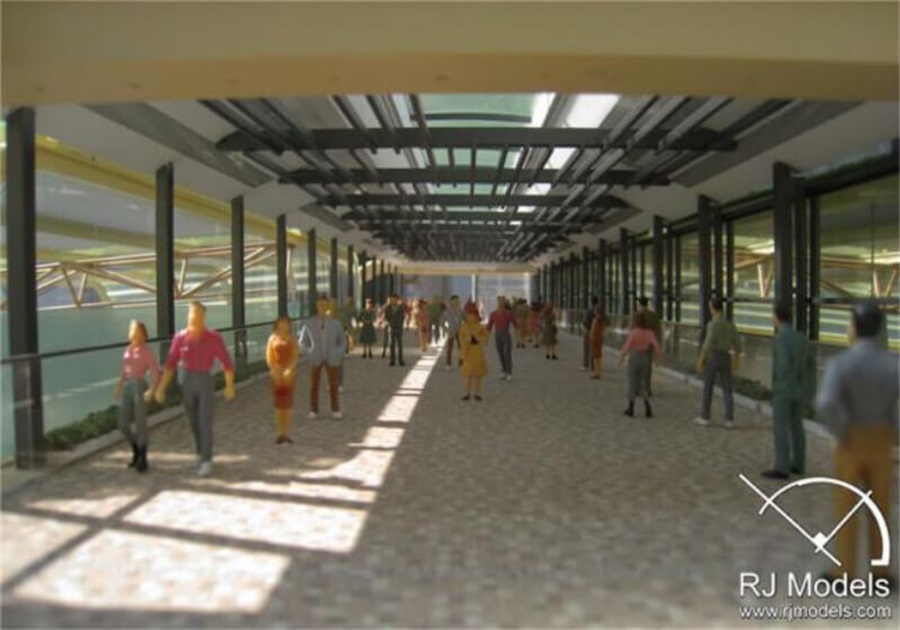
The camera position is at the same level as the model
Eye-level viewpoint photo is taken at a person’s eye level relative to their height to simulate the visual effect of someone’s view in the space they are standing in.
C8.4.4:
If a model has a water surface, a photographer can photograph the reflection of the model on the water.
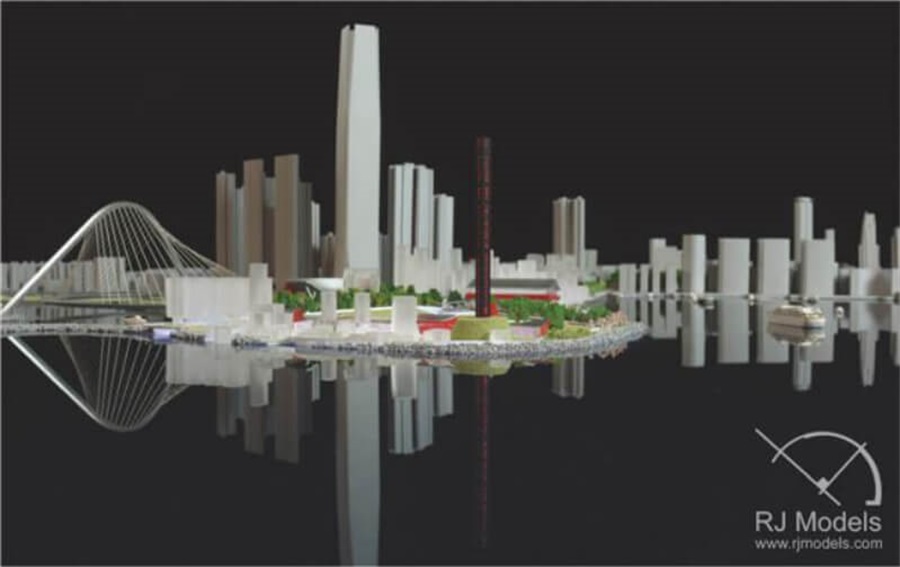
The reflection of the model on the water
C8.4.5:
At times, we may want to allow the audience to have a feel of the model size.
To do this, we will place an object such as a ruler, or a local coin next to the model to show the size of the model on the photo.
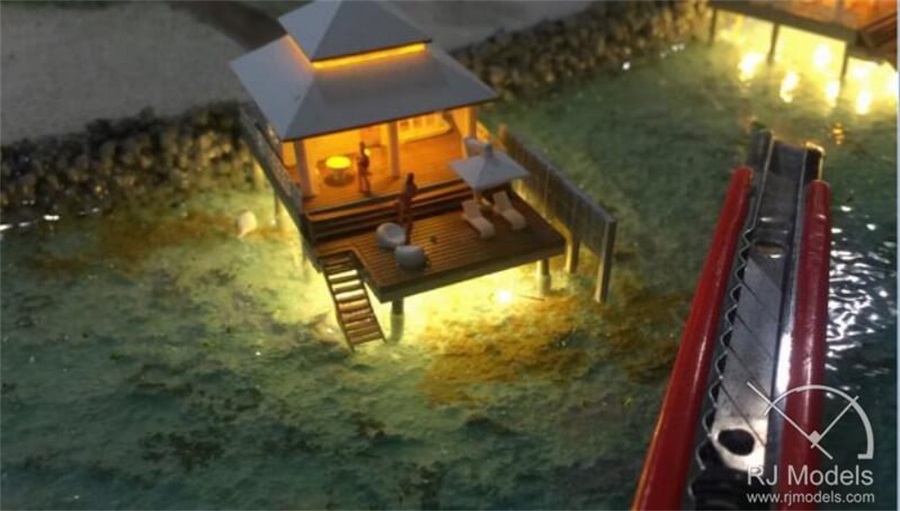
Place an object on the model to show the size of the model on the photo
C8.4.6:
If the architectural model is a sizable display, we will request a person to stand next to the architectural model so that the audience can get a feel on the actual size of the model relative to the person next to it.
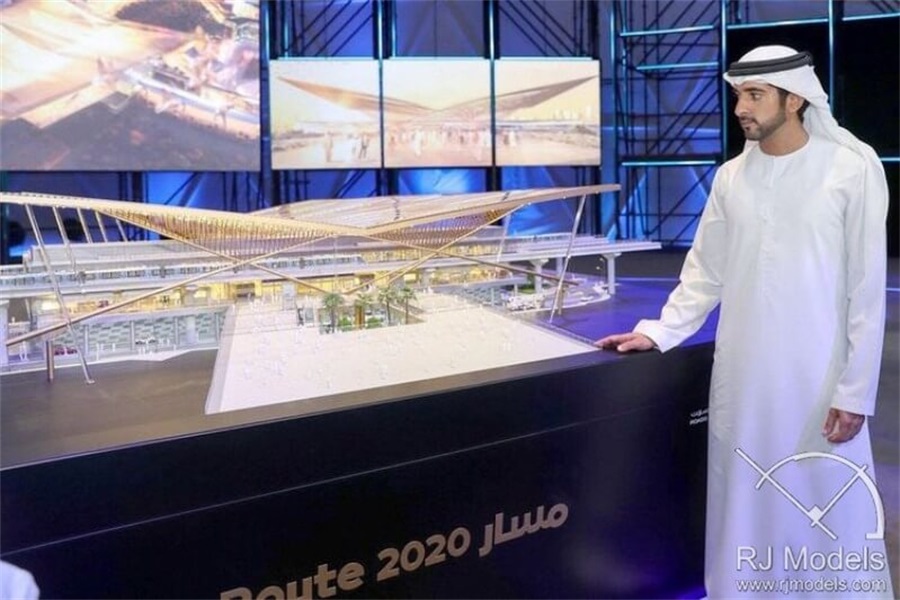
A person stands next to the architectural model
C8.5: Composition
The composition of a photo is also a crucial aspect of photography, and there are many different rules of composition. We will look at some of them below.
C8.5.1: Rules of Thirds
During photo shooting, you divide the camera frame into thirds horizontally and vertically.
The intersection points are called the points of interest.
When we look at a photo, our eye will subconsciously be drawn to these points of intersection. Hence, we always place subjects on or near these points of intersection.
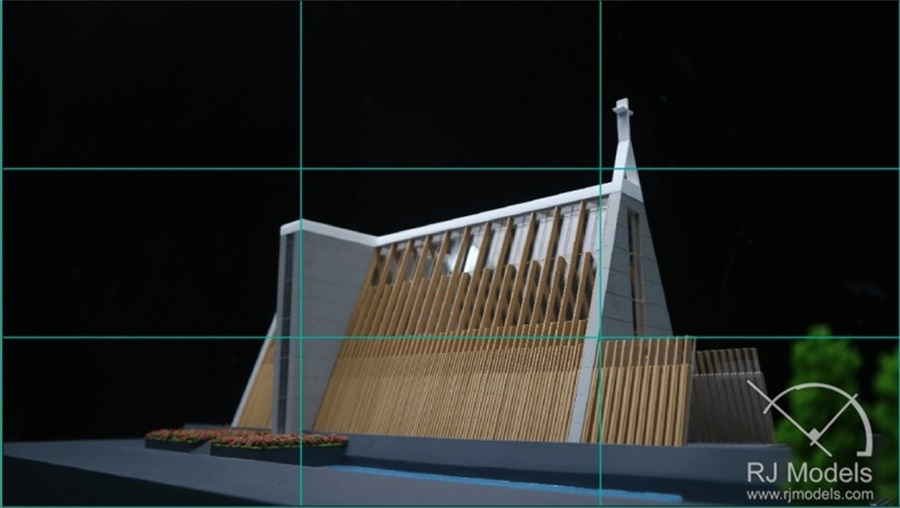
Rules of Thirds
As the camera frame is divided equally into 9 sections, the rule of thirds composition is also known as “tic tac toe composition.”
C8.5.2: Using diagonal line as a technique in composition
The idea is to place the subject along the diagonal line of the camera frame so that it appears diagonally on the photo.
This diagonal line technique creates more depth to a photo and gives the picture a more three-dimensional effect.
The diagonal line also draws the person line of sight to the point of interest, making the photo more dynamic and giving it more life, while making the subject more prominent.
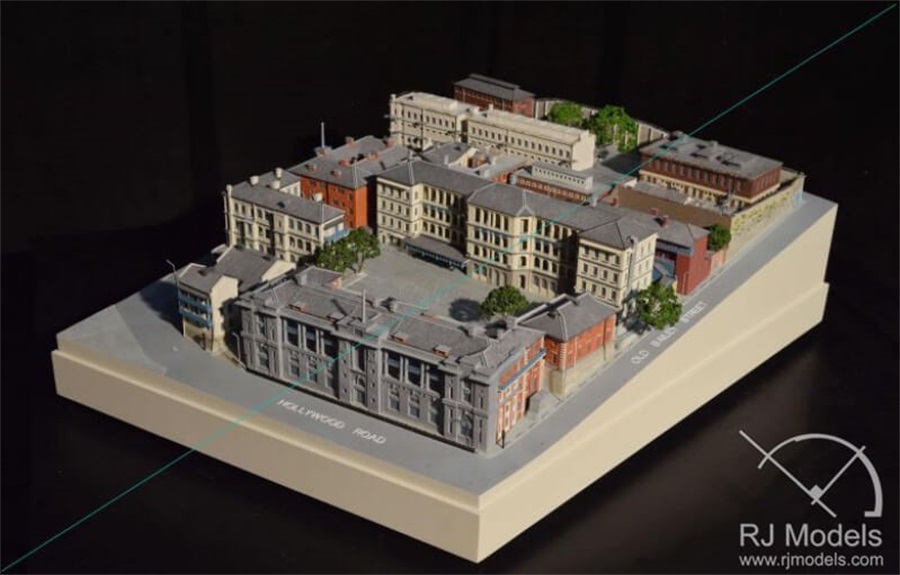
Using diagonal line as a technique in composition
C8.5.3: Symmetry Composition
Using the rule of symmetry is to use the subject and its surrounding environment to create an image where one side of the image is the same as the other, and when the image is split into two, horizontally or vertically, it will create a line of symmetry.
A photo taken using the symmetrical composition gives the audience a sense of stability, formality, and balance.
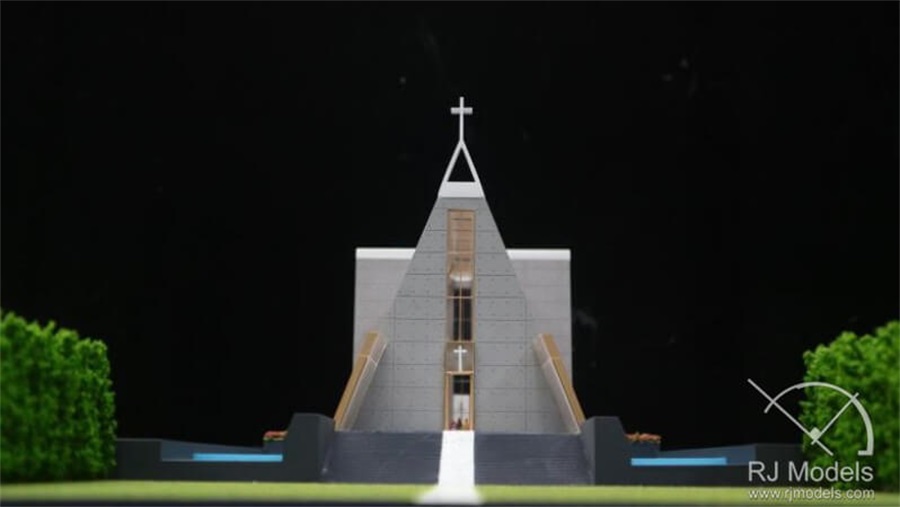
Symmetry Composition
C8.5.4: Framing
We can use framing when a subject is surrounded by an element that is or resembles a frame such as a window frame, door frame, or the entrance of a tunnel.
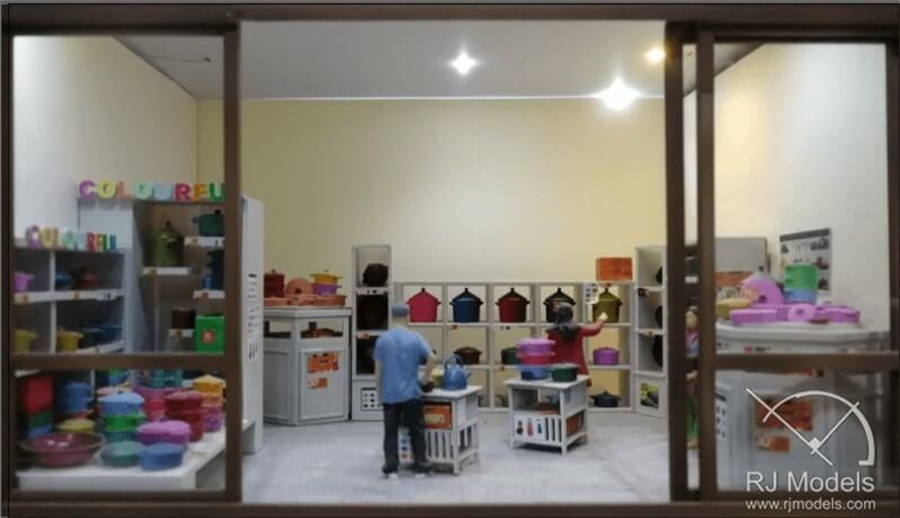
Framing is a slightly more classic rule of composition.
C8.5.5: Converging Lines Composition
The converging line technique means that multiple lines in a picture extend in the one direction and finally converging to a specific position in the photo.
The use of converging lines in photography gives the photo a converging line composition.
Converging lines composition can create a substantial visual impact and can be used to create depth in a photo and can give the picture three-dimensional visual effects.
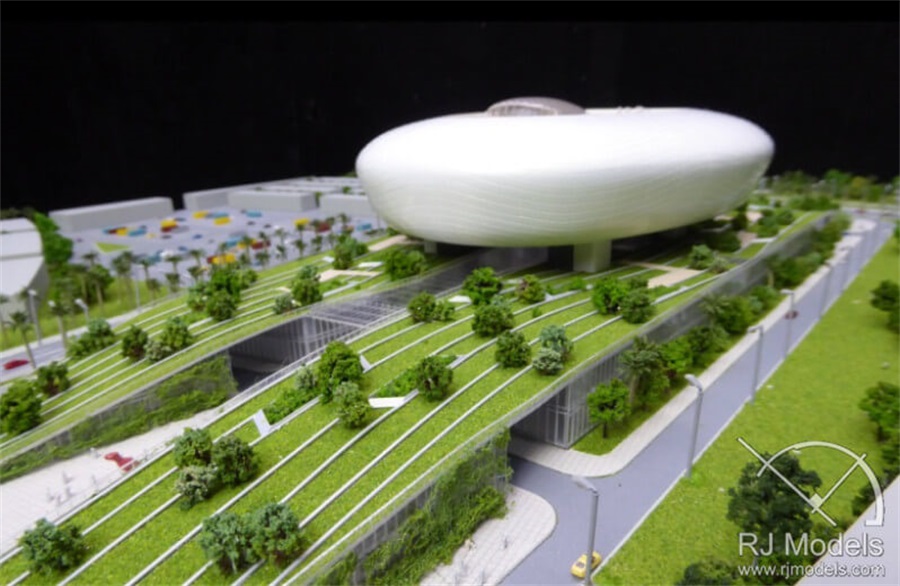
Converging Lines Composition
C8.5.6: Curving Lines Composition
It does not have to be a perfect curving line. It can be an incomplete curving line or a curving line with a little radian. As long as there is a curve, we can use it with curving line composition.
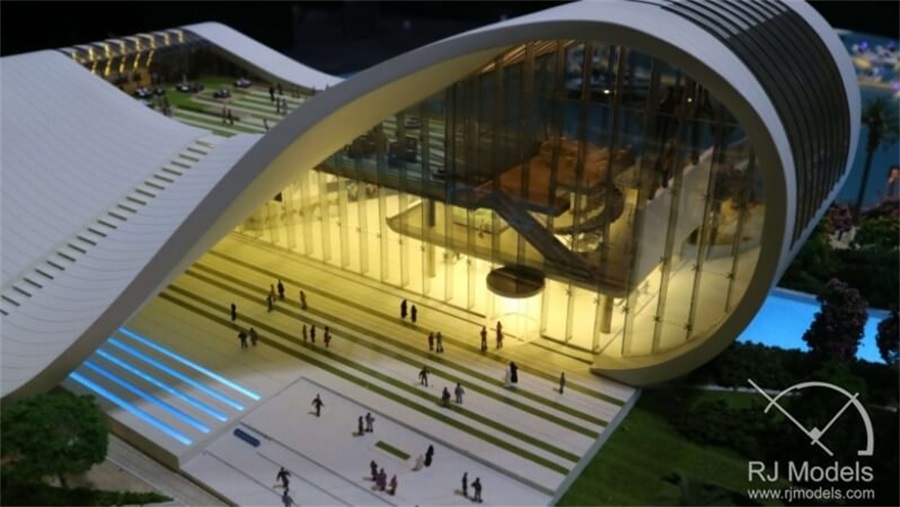
Curving Lines Composition
The above rules of composition are the most commonly used. It is also quite usual to employ more than one rules of composition when taking a good photo.
C8.6:
During a photo shoot, the background should be neat and free of elements that are not relevant to the subject. The settings should also be free of dust.
C8.7:
Keep in mind to name the photo files using the architectural model name and its scale. This will make it easier to access the photos in the future.
C8.8: Conclusion
Last but not least, anyone can master architectural model photography and raise the quality of their photography skills to the top standard.
To do this, one has to be diligent and keep practicing.
Pay attention, experiment and experience the effects a change in lighting can bring.
Keep admiring and learning from the work of other master photographers and 3D architectural rendering.
CHAPTER 9:
FAQs of Professional Model Making Company by RJ Models
C 9.1:What type of scale models do RJ Models produce?
RJ Models provides high-quality architectural model making service of just about anything, at any size.
Our scale architectural models can range from simple architectural designs, such as facade architectural model, to display scale models which are exhibited at finished construction projects, such as city planning model, airport model, hotel model.
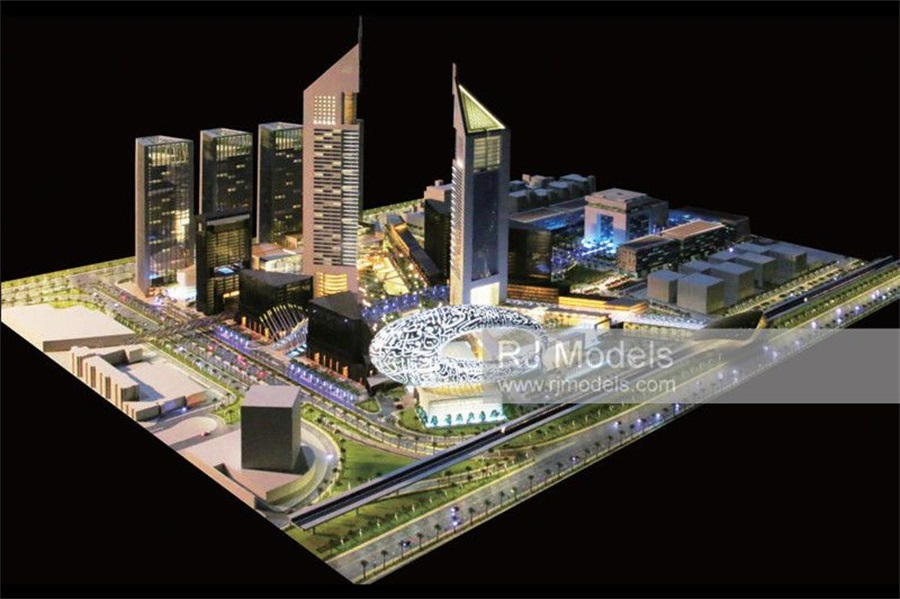
High level of detail for model making
We pride our service on a high level of detail, so our scale models may include technical details such as lighting effects and mechanical lifting devices.
C 9.2: Can I afford an architectural model?
There is no definitive answer.
Each project is unique and can range from thousands to millions of dollars.
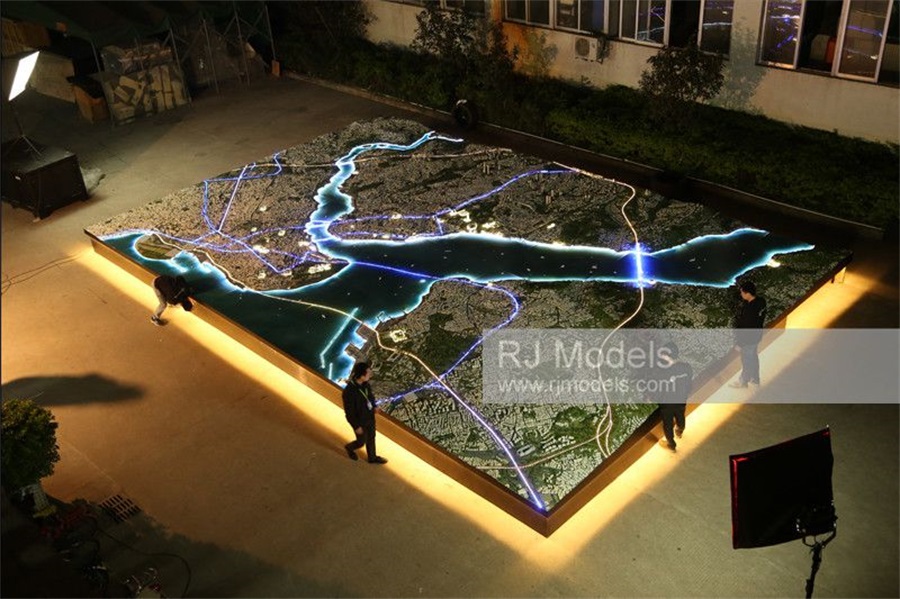
Larger more complicated models will cost more than smaller simpler ones.
RJ Models will do our best to give you a realistic estimate based on the information you provided us with regarding detailing, size, etc.
If necessary, RJ Models can provide you with a rough guess just based on verbal descriptions, but the more specific information would yield a more accurate assessment.
C 9.3: When can I expect my scale model to be finished?
Because each architectural model is different, it will depend on the scale and complexity of the project.
A concept model could take just a few days while a larger interactive model might take several weeks.
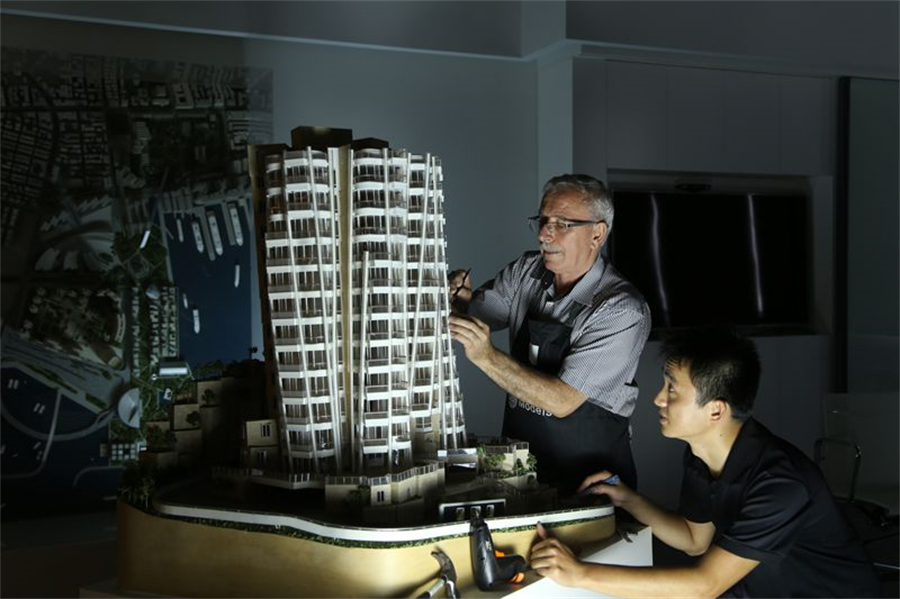
Our architectural model making team will provide you the best model
However, RJ Models takes pride in maintaining high-quality model making service together with efficiency so if needed; an order could be expedited to meet a certain deadline.
C 9.4: How can I get a quotation?
To provide a fixed quotation, we would ideally like comprehensive information about:
Master plan with model boundary and dimensions in pdf, jpg or CAD
Expected scale or model size
Elevations of the buildings in pdf, jpg or CAD
Renderings for reference (if any)
Delivery and installation destinations
Expected completion date
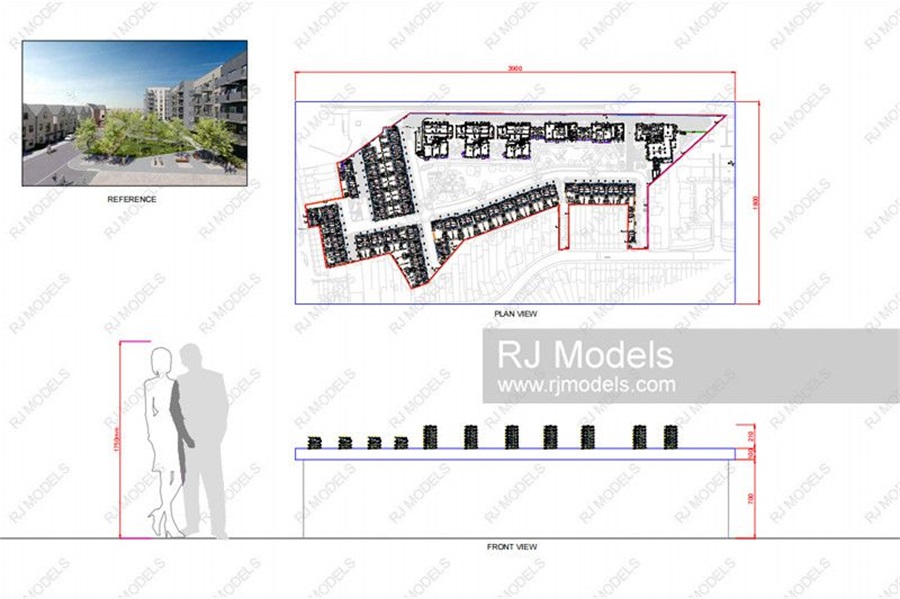
Once we received your information, we will provide you the quote ASAP.
C 9.5: How should I send in information?
Information can be sent electronically to us in the form of PDFs, JPGs, etc.
If files are very large, it may be easier to send the information over in a USB to help organization.
If it’s early on the project and there are only hand-drawn concepts, we are able to work using those too.
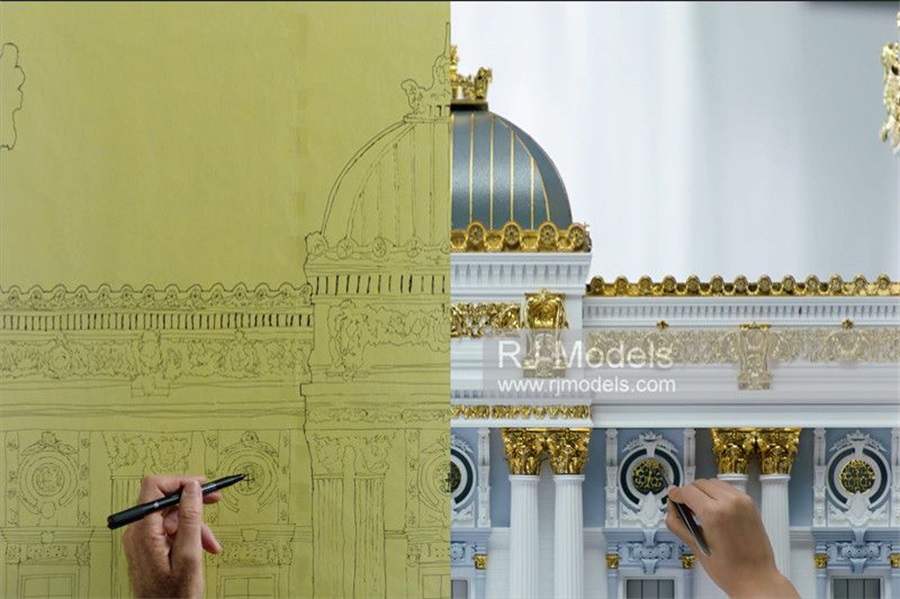
Even the hand-drawn concepts, we will try our best to work on it.
C 9.6: How long is my quotation valid?
The quote is valid for 2-3 months.
During this time, assuming the project specs do not change, the only thing that may change during this time is the expected completion date.
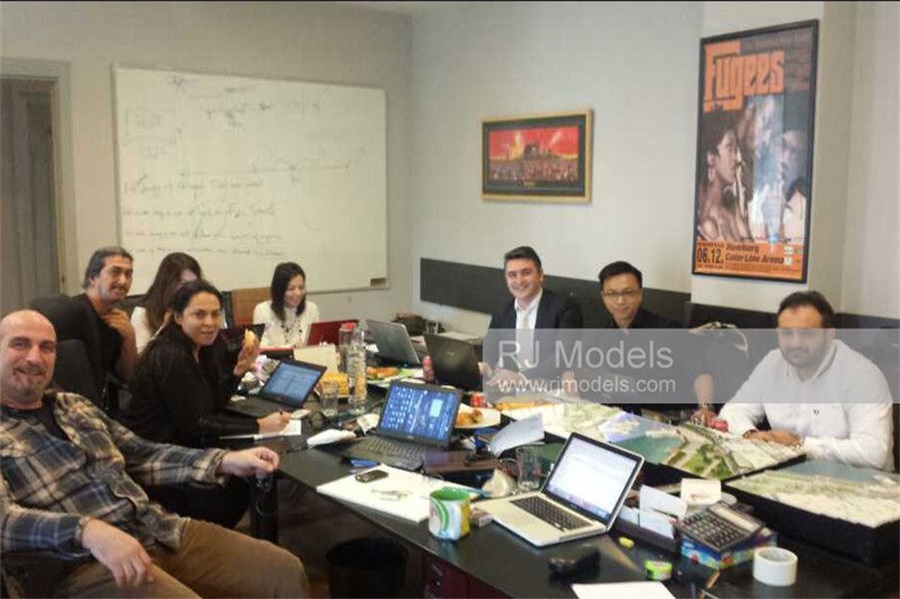
RJ Models operates on a first-come-first-serve basis so any delay in confirming a purchase may allow another architectural model making service to set back your date.
C 9.7: What info do I need to provide for scale model construction?
To create the most accurate scale models we would ideally need,
Updated master plan in CAD.
Landscape drawings with level markings.
Landscape drawings with paving material color or material marking.
Landscape plan with tree location.
Landscape material sample or Pantone/RAL color code.
Elevations of all the buildings in CAD.
Plan of all the buildings in CAD.
Cross-sections of the whole structure.
3D file in Rhino, sketch-up, 3D Max, 3D AutoCAD.
Building material sample or Pantone/RAL color code.
Updated renderings for reference.
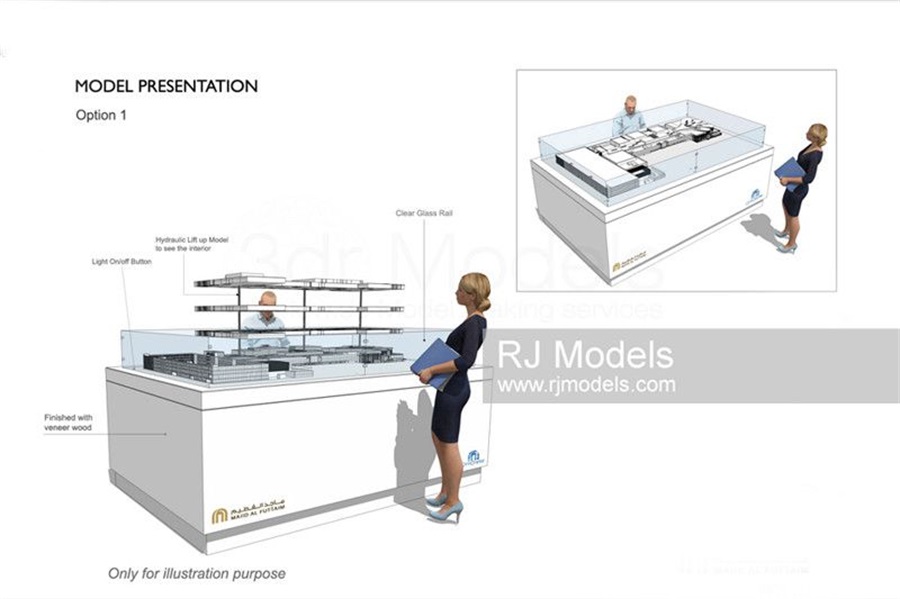
Model presentation drawings
C 9.8: Are there materials I will need to provide?
No, RJ Models sources all necessary material ourselves, and we have our own specialized teams to carry out all tasks from planning to construction to transportation.
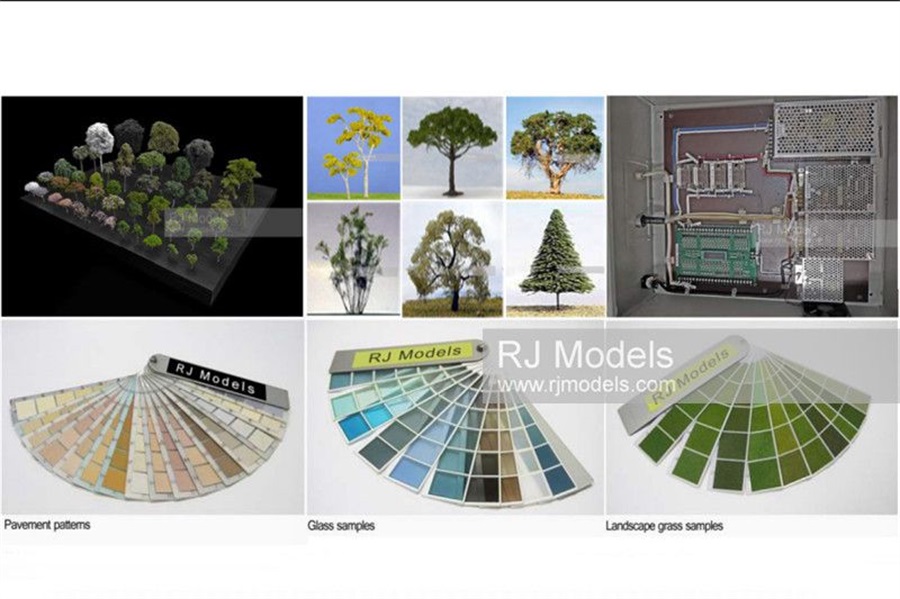
This streamlines the flow of the scale model from us to you, by cutting out third parties.
C 9.9: What scale should I request?
While we work in scales ranging from 1:1 to 1:10000, the appropriate scale for your unique model will depend on what you need it for.
The decision will depend on two factors: how large is the area you need to be modeled, and how much detail you require.
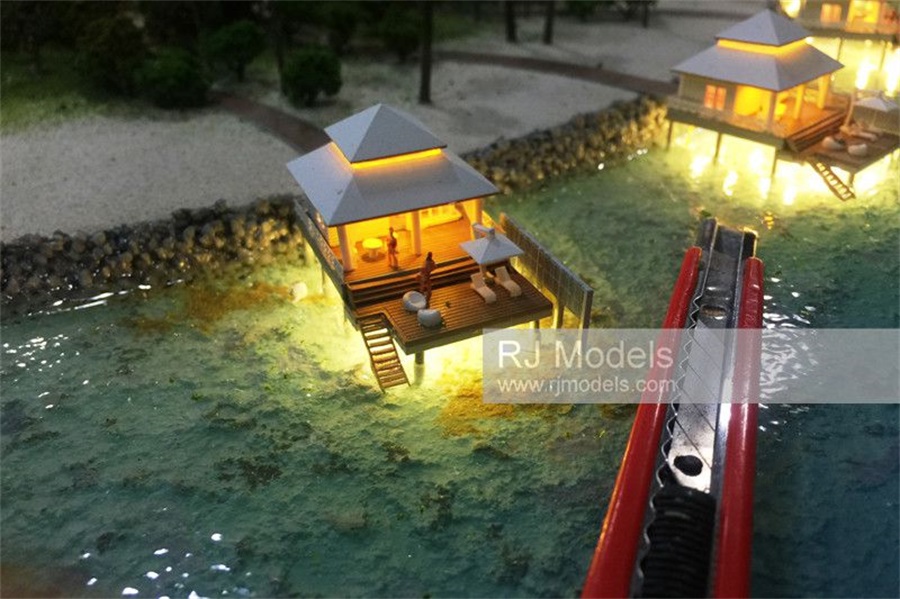
We’d be happy to advise you on the pros and cons of using various scales.
C 9.10: How late could I request a change in the schematics?
We hope that the project is in its final state when the appropriate forms are submitted, but we are willing to accommodate changes as they occur.
If there are simple changes that do not require significant changes in work that have already been done, then the change will be made free of charge.
However, if there is work that has already been done that needs to be scrapped, or if the alteration has a significant effect on construction, there will be an additional charge.
C 9.11: How can I monitor progress on the architectural model making project?
You are free to come in to see progress on the project whenever you’d like.
We’re willing to provide you with updates on scale model construction as often as you request.
C 9.12: Can I come to visit in person?
Yes, we’d be excited to have you visit our offices to walk you through the scale model-making process.
We also can show you different scale models created before, and answer any questions you may have.
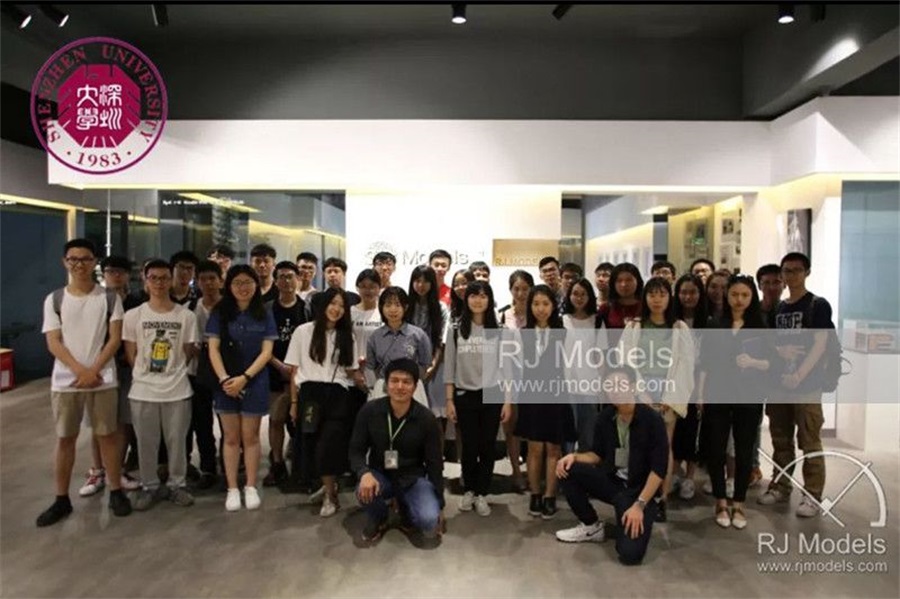
One of our workshop tour.
C 9.13: Does it matter if I am not local?
No, RJ Models is an international scale model making company with a highly respected reputation.
Communication can be done electronically, and if there are any concerns, we will do our best to resolve them without requiring you to take up unnecessary burdens such as travel.

RJ Models has an extensive team of multinational and experienced shipping.
C 9.14: How is my privacy/security ensured?
We take your privacy carefully and all of our employees are held to strict non-disclosure agreements.
We do not make any material which we receive public or use them for any commercial purposes.
If you have any concerns, feel free to contact us and we will do our best to accommodate your needs.
C 9.15: Do I need to see the final product of scale model in person before it is shipped out?
You do not need to come to see if it in person, but you may if you’d like.
The majority of our clients find photo confirmation sufficient, and we’re willing to take photos at any angle or perspective of scale model to meet your satisfaction.
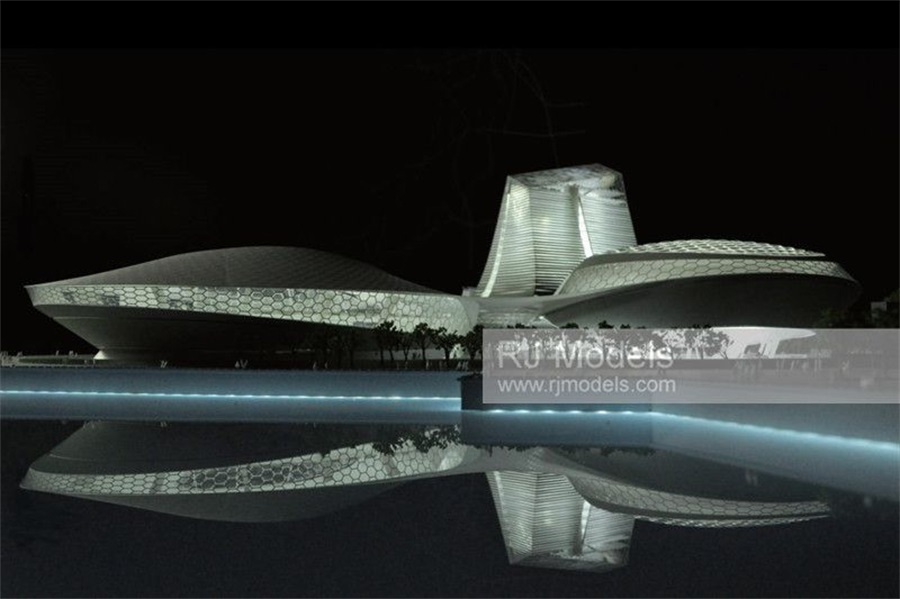
Before we shipped the model, we will take many photos for your checking.
C 9.16: How will I receive the scale model?
The delivery method varies from model to model.
A more compact model can be delivered by a dedicated shipping company, which will minimize costs.
Larger projects such as display/exhibition models will be delivered by our own staff, especially if the project requires careful setup or has an element of demonstration.
Scale models which are exported will require a special case.
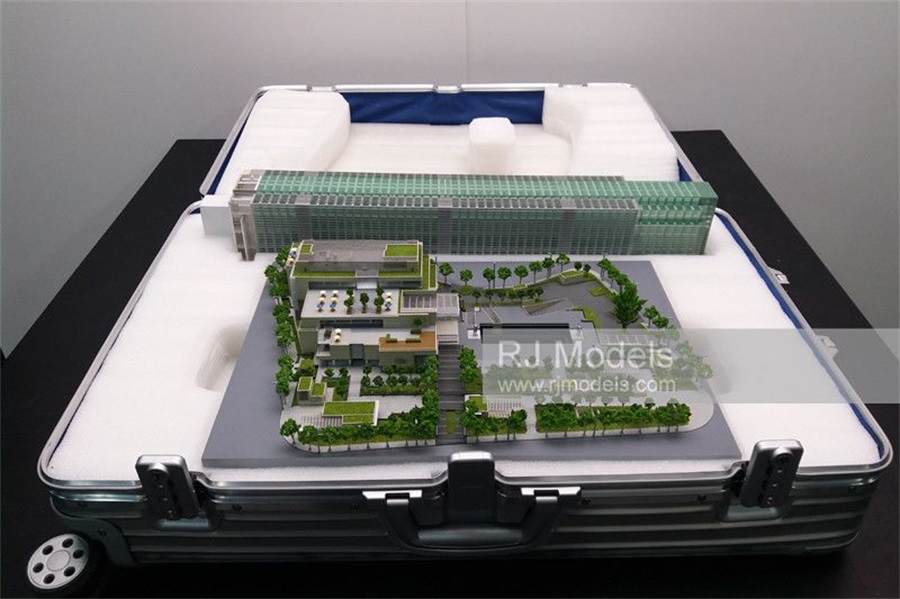
Delivery arrangements will be discussed in the process of reaching a final quotation.
C 9.17: How will my scale model be protected during transportation?
Our scale model makers have over 26 years of professional packaging experience.
We will create a custom-made box to fit the needs of each scale model and will use multiple layers of packaging protection if necessary.
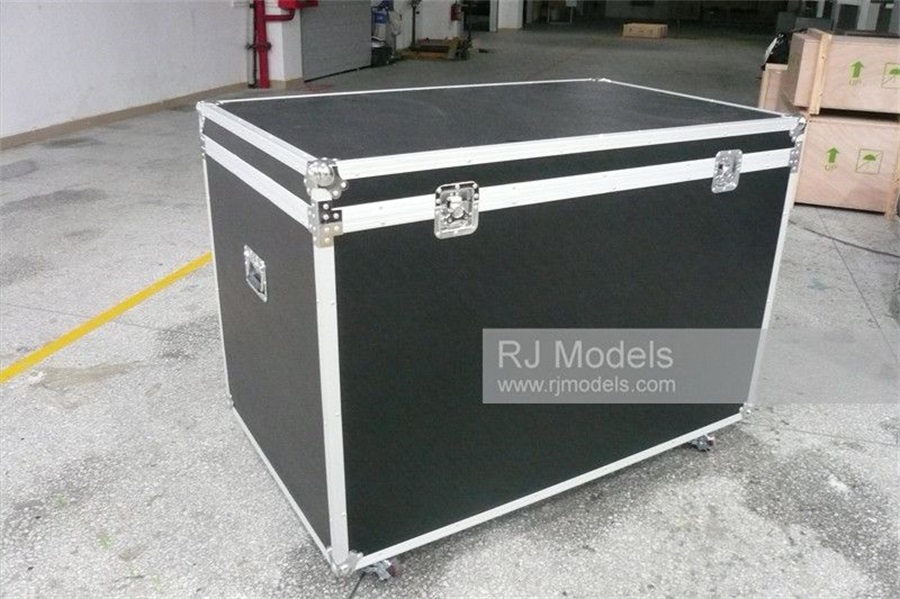
Our custom-made box for model packaging protection
If the installation is necessary, we will send a scale model maker team to travel along with your scale models to ensure proper handling.
On the extremely low chance that your scale model is damaged during transportation, we will repair the model for free.
C 9.18: How should I display the scale model?
This is up to your discretion and will depend on the model.
A scale model which is smaller can fit on a surface such as a desk while larger models may require model bases made with various designs and materials which we are able to provide.
Our bases range from a solid base to a wheeled stand with a protective covering.
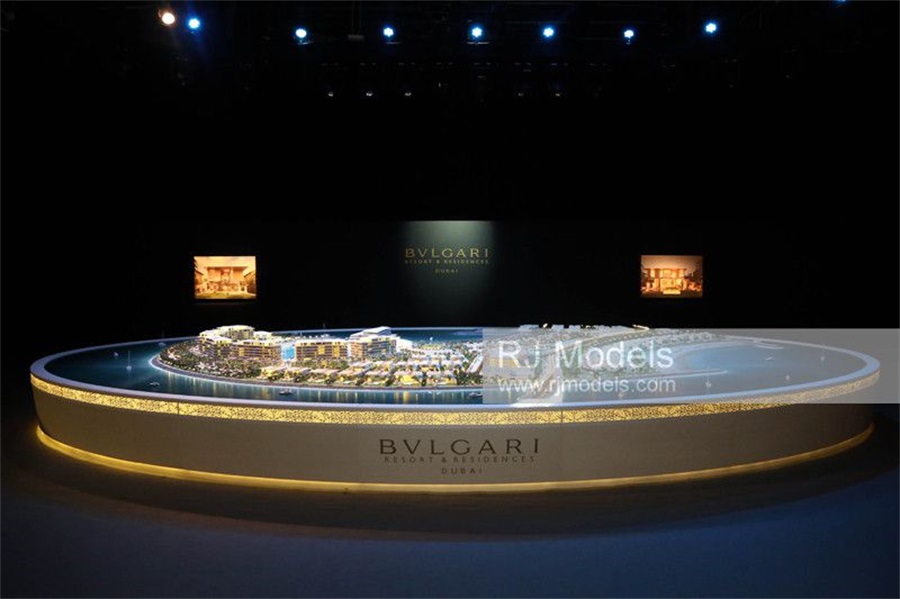
We are able to offer our advice on how to best display it, using our prior experience.
C 9.19: Can I get my scale models repaired/upgraded?
Yes, we do!
We just need the information that we would require with a regular model as if it was being built from scratch, and will be able to give you a quotation.
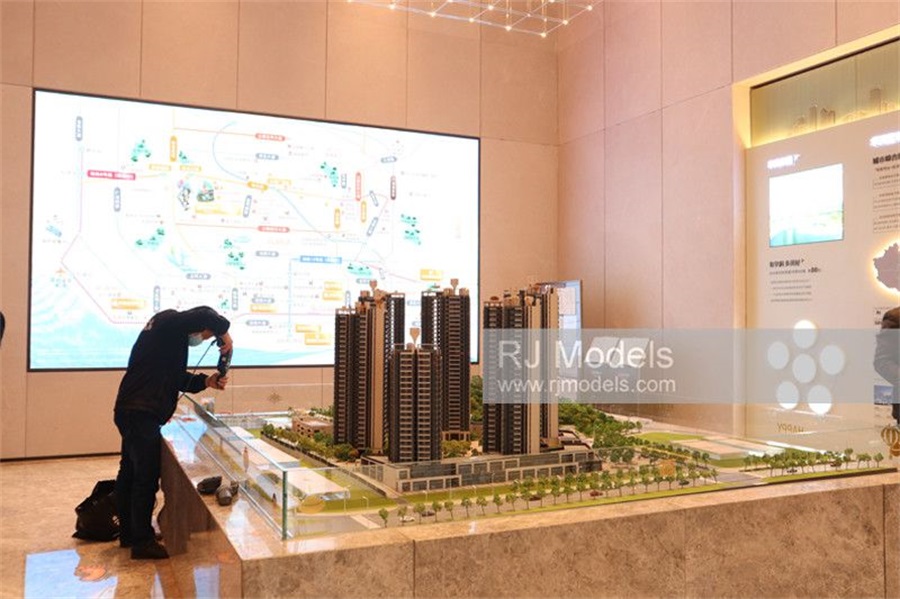
scale model was somehow damaged while in our custody, we will repair it free of charge.
C 9.20: What can I expect from RJ Models after the scale model is set up?
Maintaining long-term product quality is just as important to us as the construction process is.
We are happy to provide you with advice on how to best store/present your scale model to maximize its lifetime.
We can provide you with extra segments/pieces of the model if need be.
Conclusion
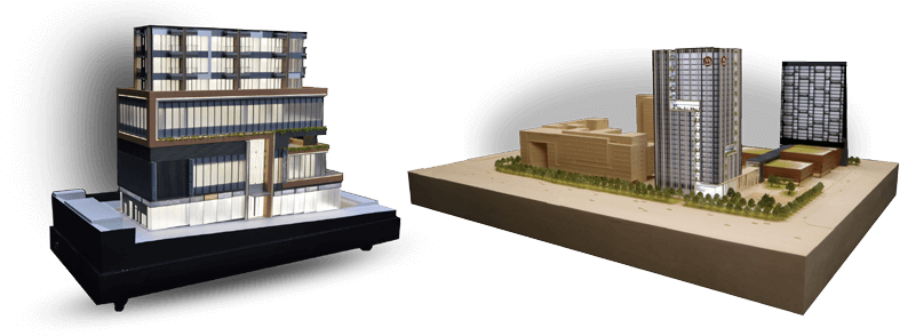
Physical architectural models are powerful and irreplaceable tools to examine and express architectural designs as well as to fascinate the public during the exhibition.
As architectural models are varied and used for different propose, choosing the appropriate model type and scale, and materials to making the models are distinctly importantRelatively new and advanced model making techniques are coming out to enhance the function and aesthetics of architectural models.
Also, there is a great need to know how to maintain an architectural model to optimize the value-in-use.
The use of architectural model is at the peak of history and it will continue to develop.
Explore the role of architectural models will not only help the designers to present and communicate their design ideas, but also can bring a building, or a complex to life off the plan.







